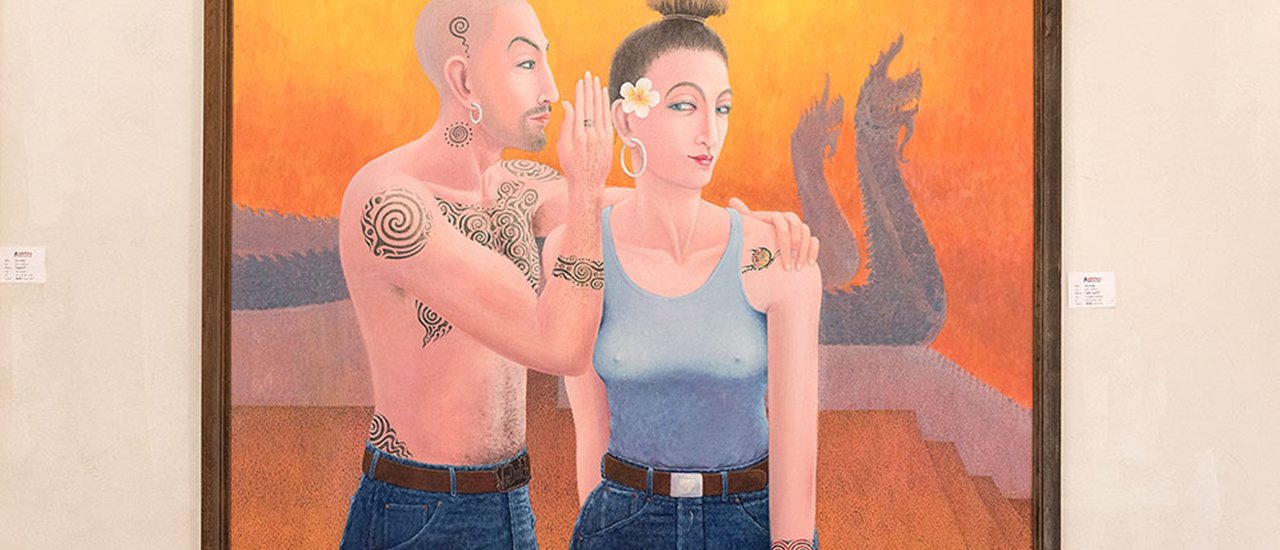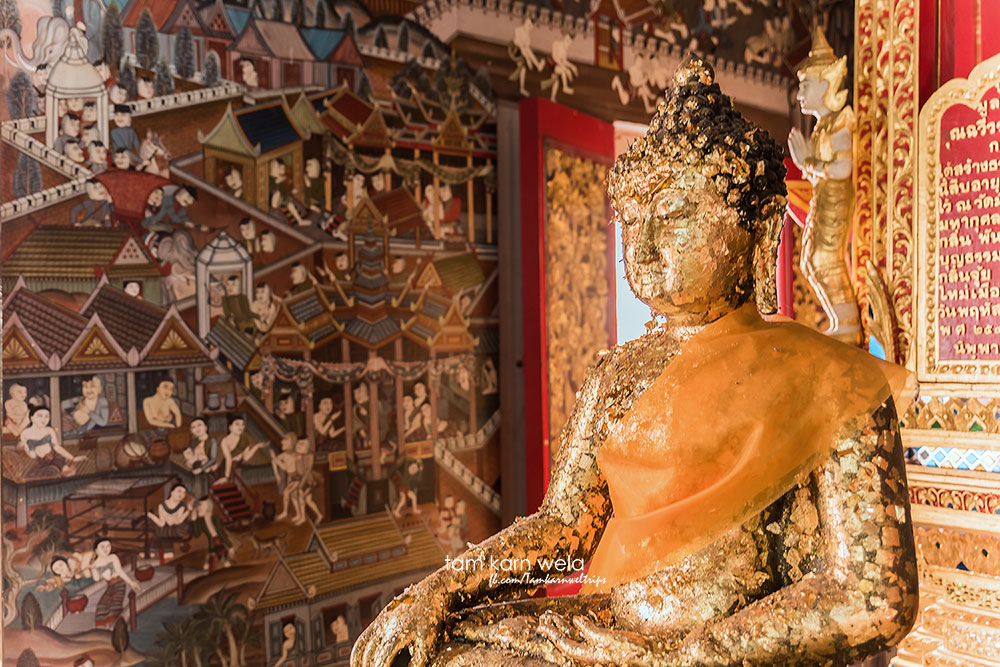Hello Friday everyone! I guess a lot of people is getting ready to go somewhere for the long holiday. And on this long holiday, Tamkarnwela will take you to a small town in the North. Let's go to Nan!
Nan is a small province in the Northern part of Thailand with a long interesting history. Therefore, Nan is rich in both culture and natural beauty. For those who have been to Luang Prabang will feel the similarity of Luang Prabang and Nan because they are sister cities. Both cities' traditions and cultures are mainly influenced by The Legendary Kingdom of Lanna. However, Luang Prabang has been very popular among the tourist lately and this popularity has changed the local culture one way or another. On the other hand, as a tourist I would say that Nan has sustained its culture well so far.
Nowadays, with the new convenient airport in Nan and the availability of the direct flights to Nan from Bangkok Nan has become one of the most popular destinations. There are two airlines that fly to Nan everyday and this has eliminated the obstacle to get there and has prepared the city well to welcome more and more tourists.
If you are free for 2 days and 1 night, why don't you give Nan a try and see what Nan has to offer. Let's go!
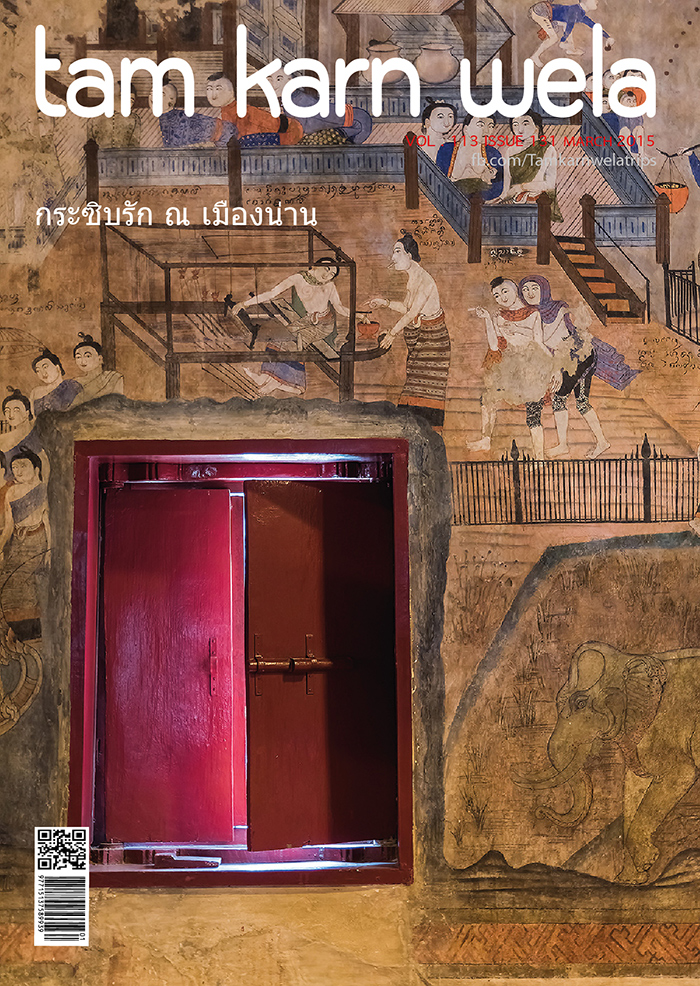
“Amazing weekday traveling in the North"
We have chosen to travel on weekday. Our flight is at 10.15 AM and will arrive at Nan at 11.20 AM. For your information, Air Asia offers 2 direct flights to Nan everyday.
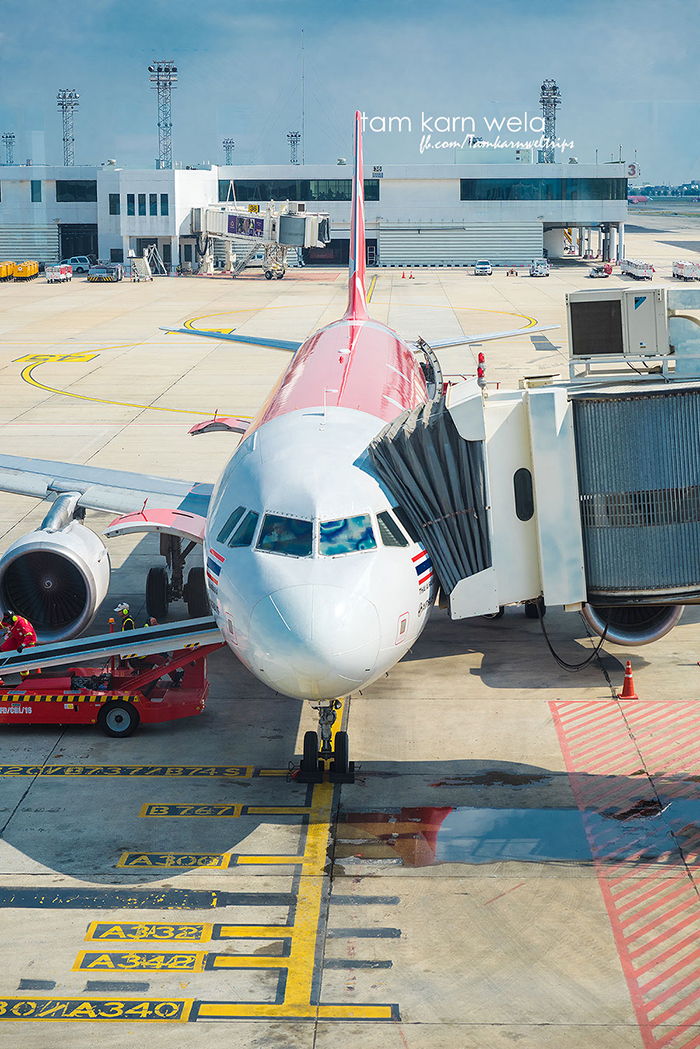
There are 2 little cute Batmans flying to Nan with us today.

We have arrived in Nan around noon and it is a perfect time for lunch. We have stopped by the old local restaurant nearby the airport named "Suriya Garden Restaurant" and of course since we are in the North, we need to have Northern Thai food.
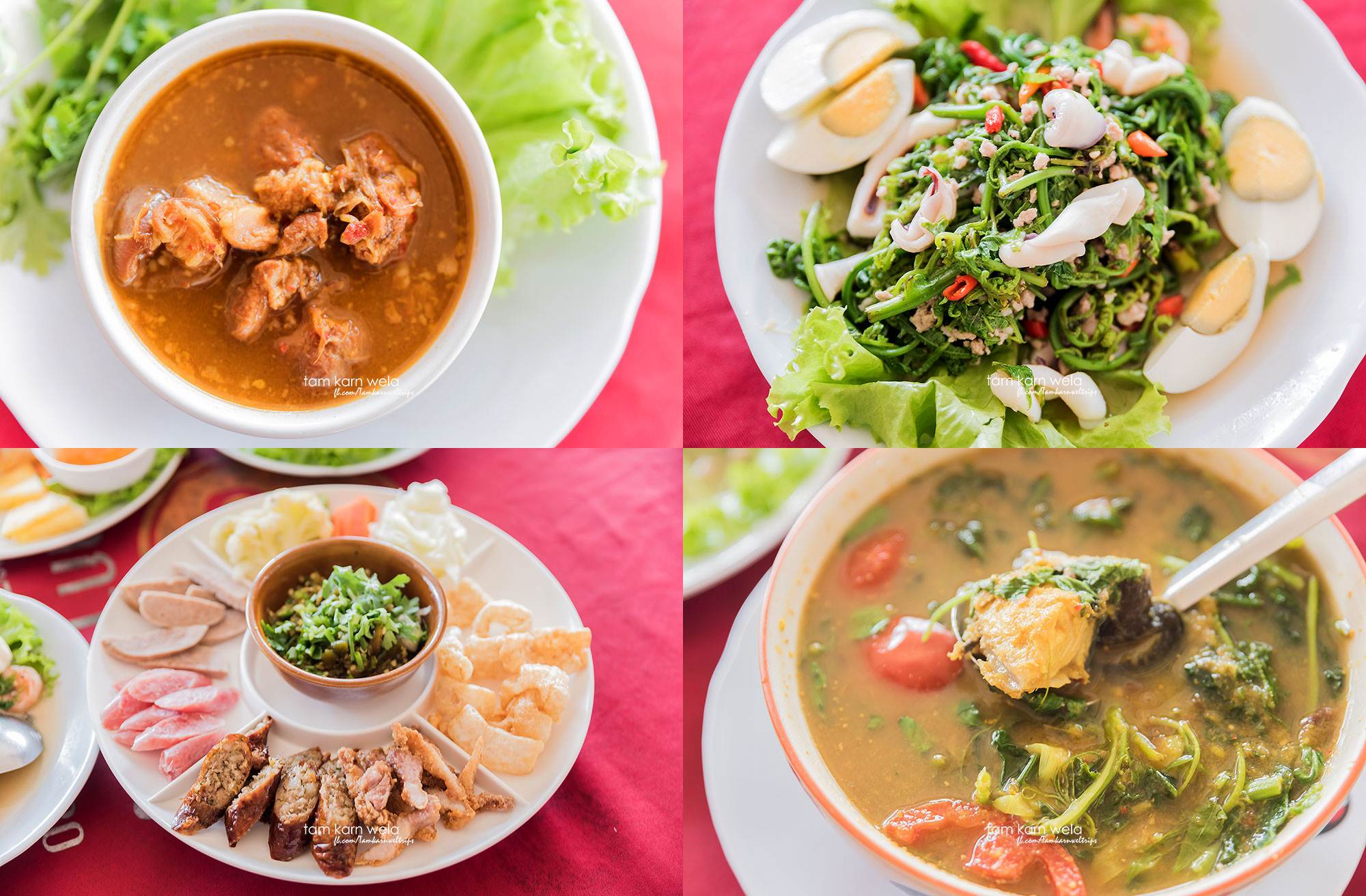
We choose to travel through the ancient city of Nan in Downtown by the tram tour and we need to contact the Tourist Office at Phakong Road in order to join the tour or call 054-751169. This tram tour is operated by Nan Town Municipality which is located on the opposite side of Wat Phumin.
Operation details:
Normal tour (with tickets)
Monday - Friday: 1 tour per day at 3.30 PM (Minimum of 5 people per tour)
Saturday - Sunday: 2 tours per day at 10.30 AM and 3.30 PM (Minimum of 5 people per tour)
Public Holiday: 2 tours per day at 10.30 AM and 3.30 PM, and there might be more if needed.
• Tickets
Adult (both Thais and foreigners): 30 THB
Children (under 14) and elder (over 60): 15 THB
Group tour (private)
A group tour is able to arrange the private tram tour in advance by contacting the Tourist Office but the time has to be different from the normal tour.
The private tour costs 500 TH.
We are 5 people altogether so we decide to take the private tour in order to be able to stop wherever and whenever we want and I guess we might need to spend a little more time in some spots for taking photos as well.
While I am contacting the Tourist Office, I have noticed that there is a lot of posters of "Poo Marn Yar Marn" (Whispering of Love) all around. This have given me the feeling that I am really here, I am really in Nan.

Every single tram tour, there will be a local tour guide on board providing all stories and information throughout the tour.
And the tour guide is talking in the Northern Thai language, it is very impressive and amazing.
There are about 400 temples in Nan. We are able to go to 9 of them within half a day because some of them are closed to each other and this has shown how important the Buddhism has been here in Nan. There is one example as well, one of my friends took a flight from Bangkok and went to 9 temples within half a day and flew back on the same day, it's very efficient.
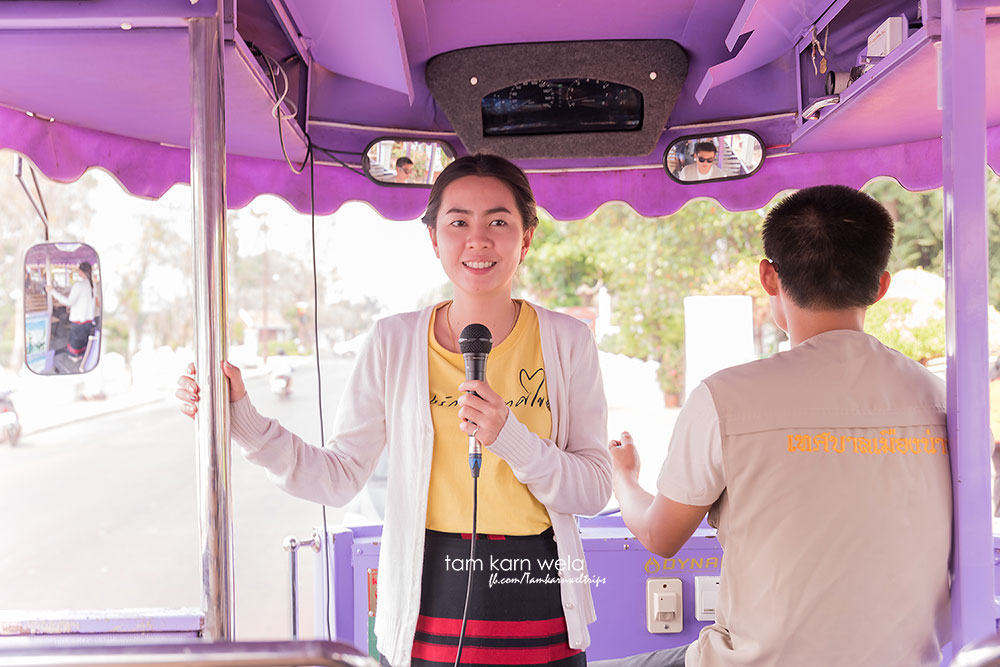
We start our tour with Nan City Pillar Shrine situated at Wat Ming Muang to pray for luck on our trip.
Wat Ming Muang is located on Suriyaphong Road. This place used to be a deserted temple. Nan City Pillar Shrine in a huge logwood was found here in the ordination hall of the temple's ruins. In 1857 the governer Chao Ananta Voraritthidech re-constructed this temple and named it as Wat Ming Muang as the name of City Pillar Shrine "Sao Ming Muang" (Ming Muang Pillar Shrine). The ordination hall was re-constructed once again in contemporary Lanna style in 1984 that can be seen nowadays.
When I first arrived, it gives me the feeling like I am at the famous Wat Rong Khun (the White Temple) in Chiang Rai. They look very similar to each other.
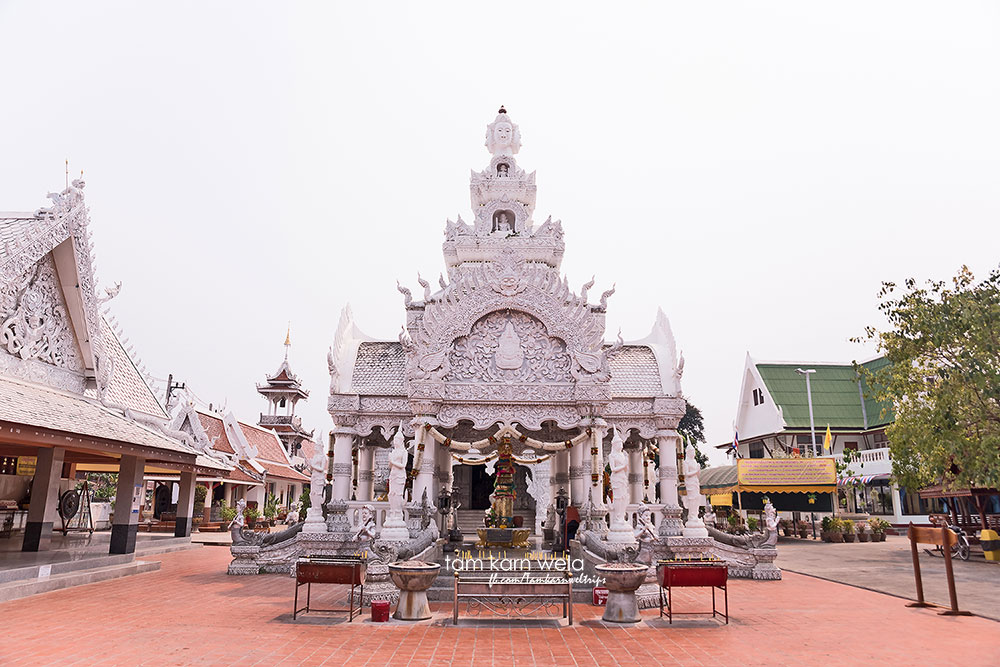
The highlight and the most stunning building in Wat Ming Muang would be this City Pillar Shrine in white, a modern construction of concrete with rococo-style reliefs and detailed carvings all around the building.
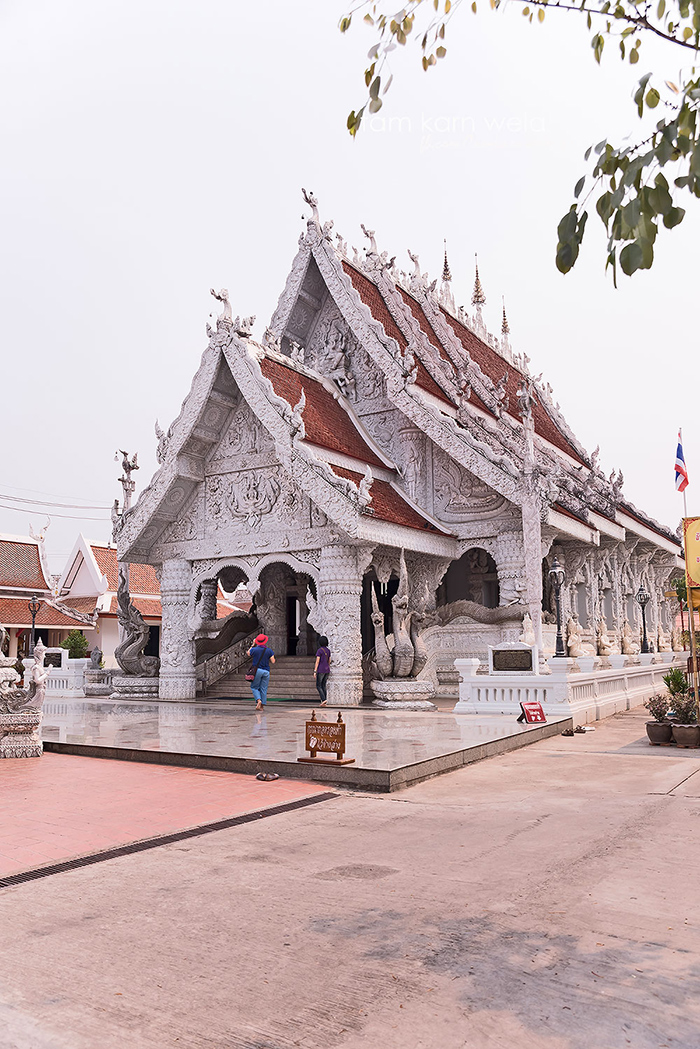
The ordination hall is constructed with white stucco and situated next to the City Pillar Shrine and there is the mural painting inside showing the history of Nan from Phuka Dynasty until now.
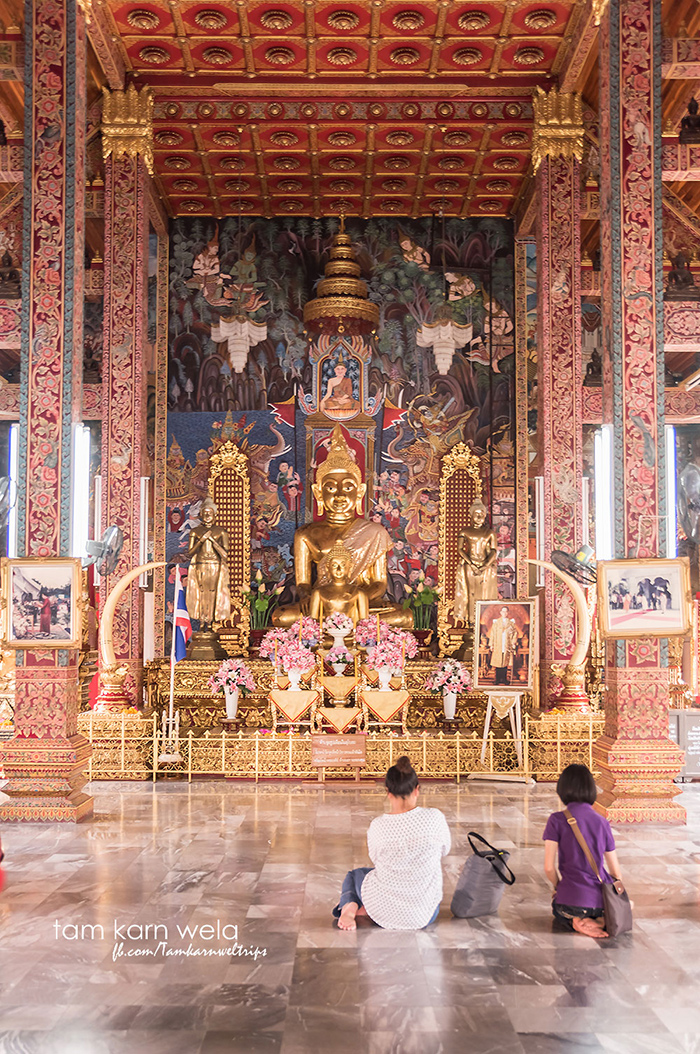
The mural painting is totally amazing and it has been well maintained by the local artists.

With the stunning white carved stucco exterior, this ordination hall reminds a lot of people of Wat Rong Khun (the White Temple) in Chiang Rai. One said this is the model to build Wat Rong Khun though.
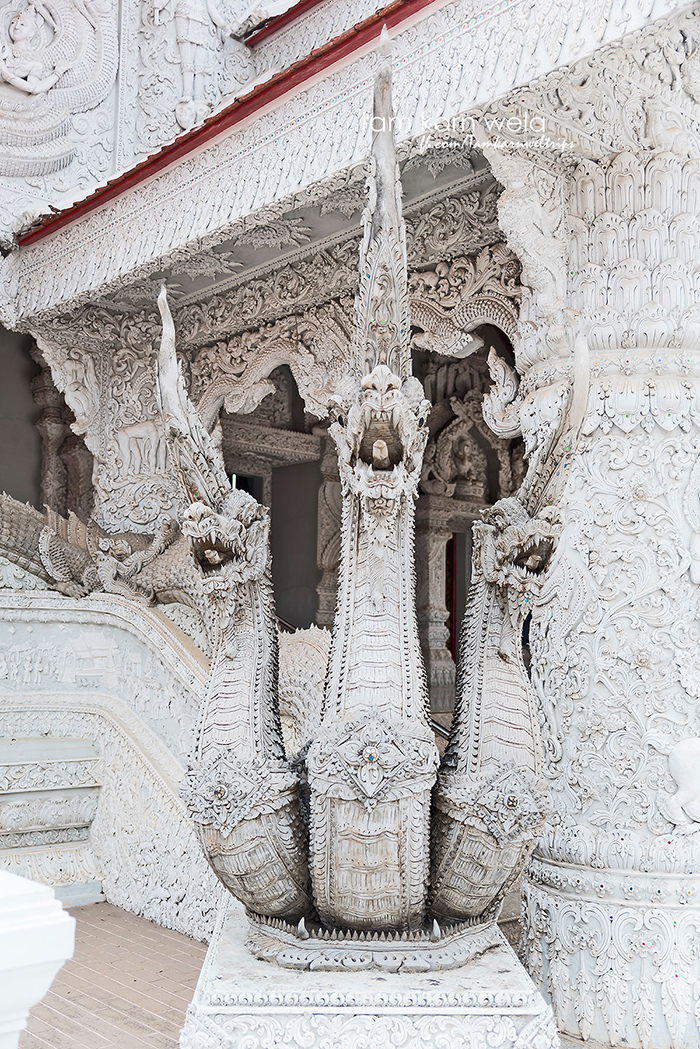
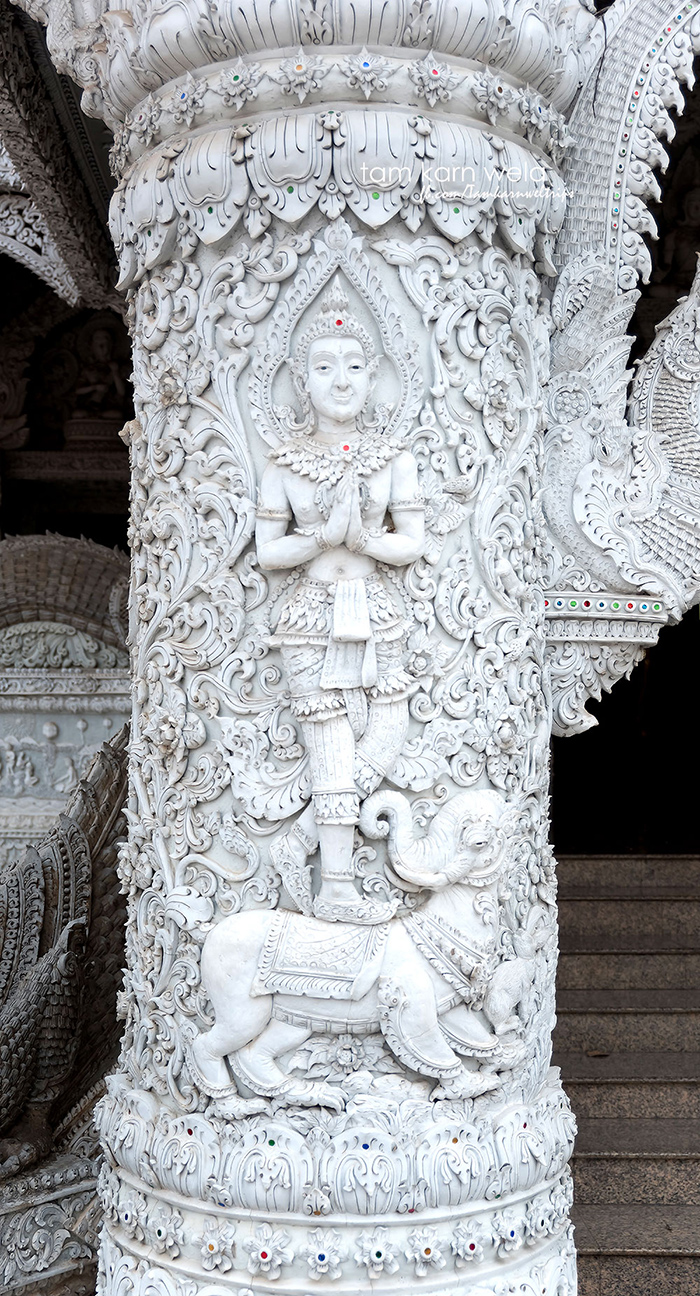

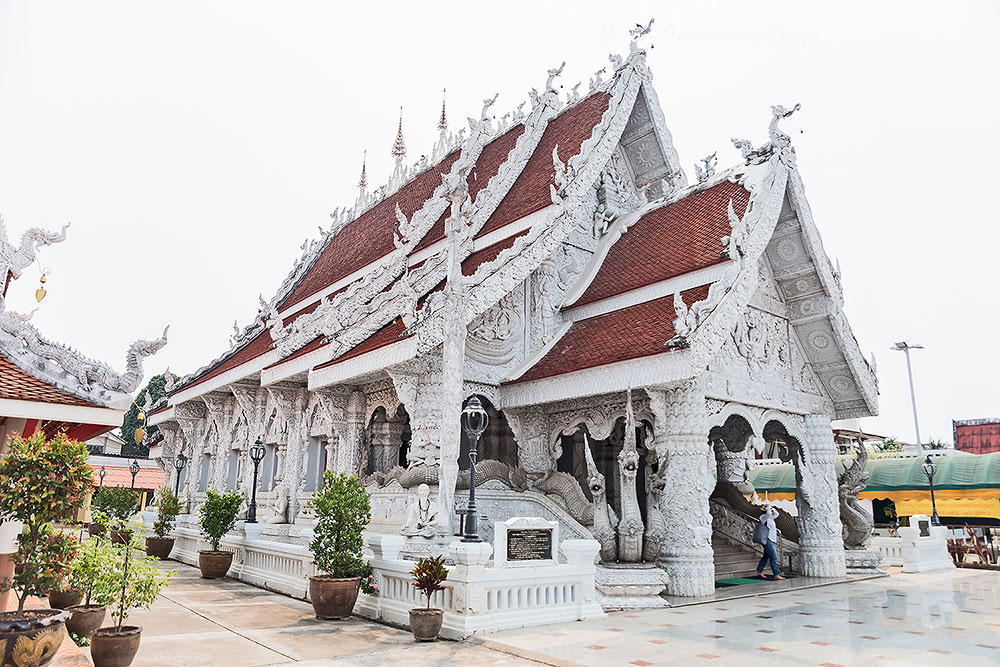
Our second stop is Wat Sri Panton. This temple is built by Phraya Panton, the city's governor during Phuka Dynasty (1417 - 1426). The name of the temple was appointed as the name of the initiator, "Phraya Panton". However, sometimes it was called as Wat Sali Panton (Sali or Bodhi tree) because there used to be two enormous Bodhi trees in the North and South of the temple. Sadly, these two Bodhi trees were cut in order to use the area to build the road. The status of Wat Sri Panton was officially certified in 1962.

The ordination hall is in golden color, it must be stunning on a clear sky day.
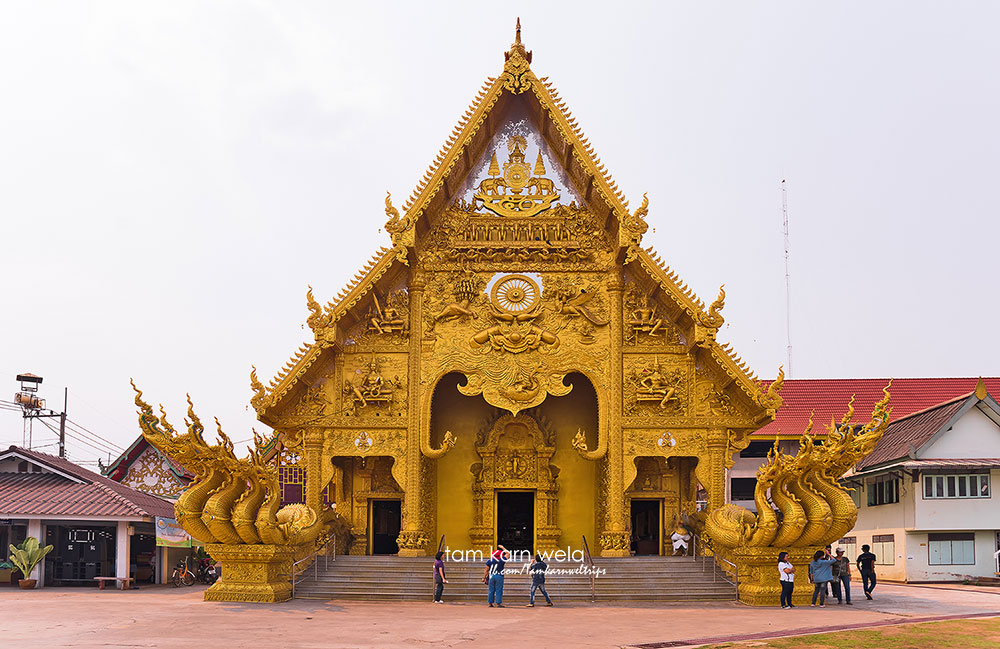
And inside, there is a mural painting about the biography of Lord Buddha and the history of Nan. This mural painting is completed by the local artists and can be considered as a valuable piece of arts in Nan, it is very beautiful.
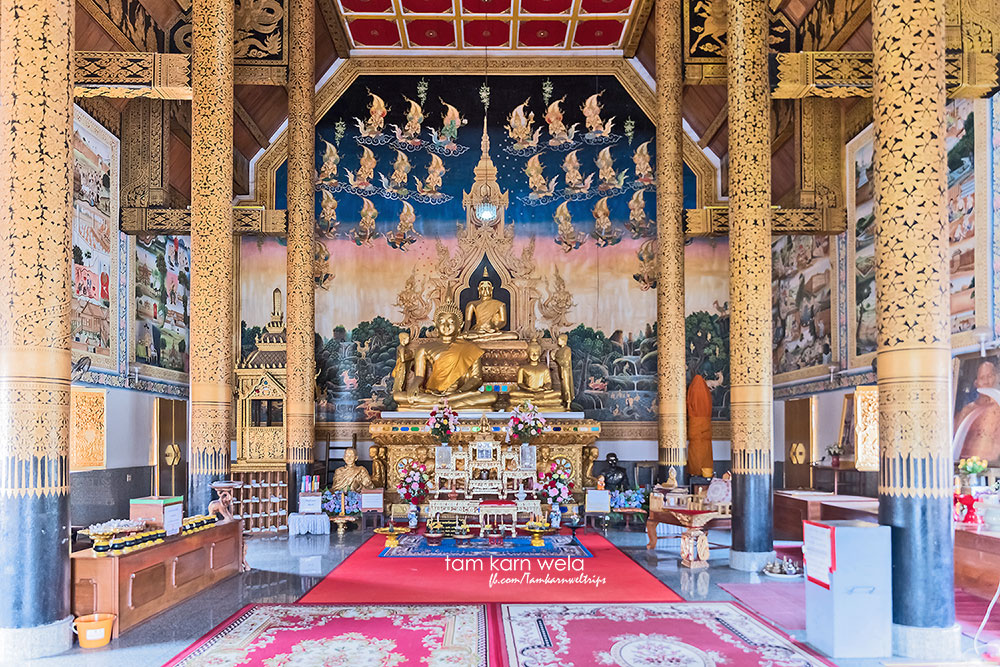
The history of Nan.
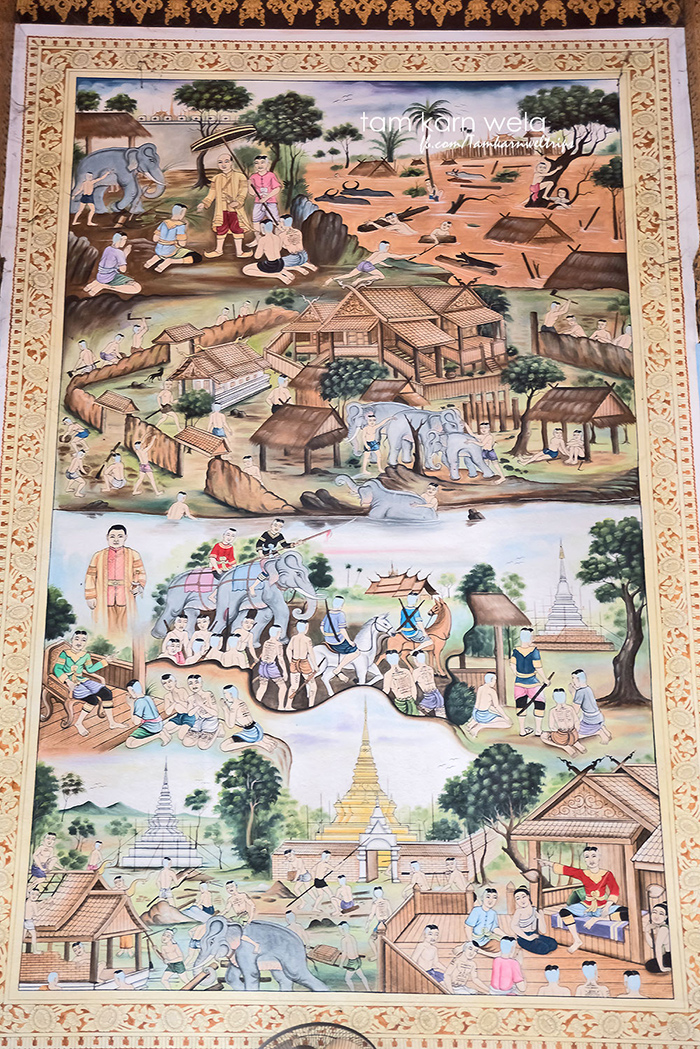
Valuable ancient items.
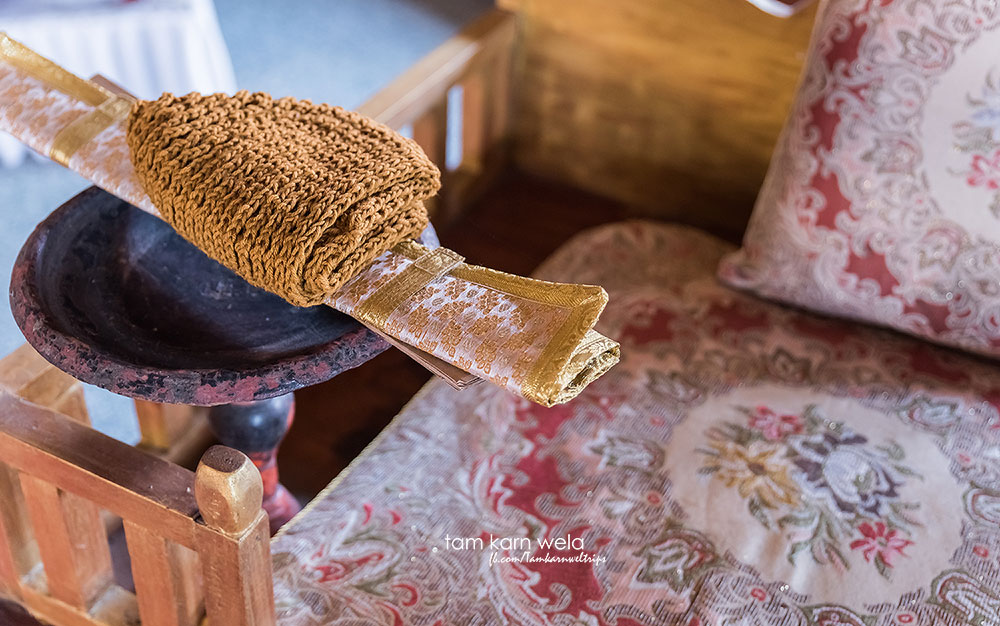
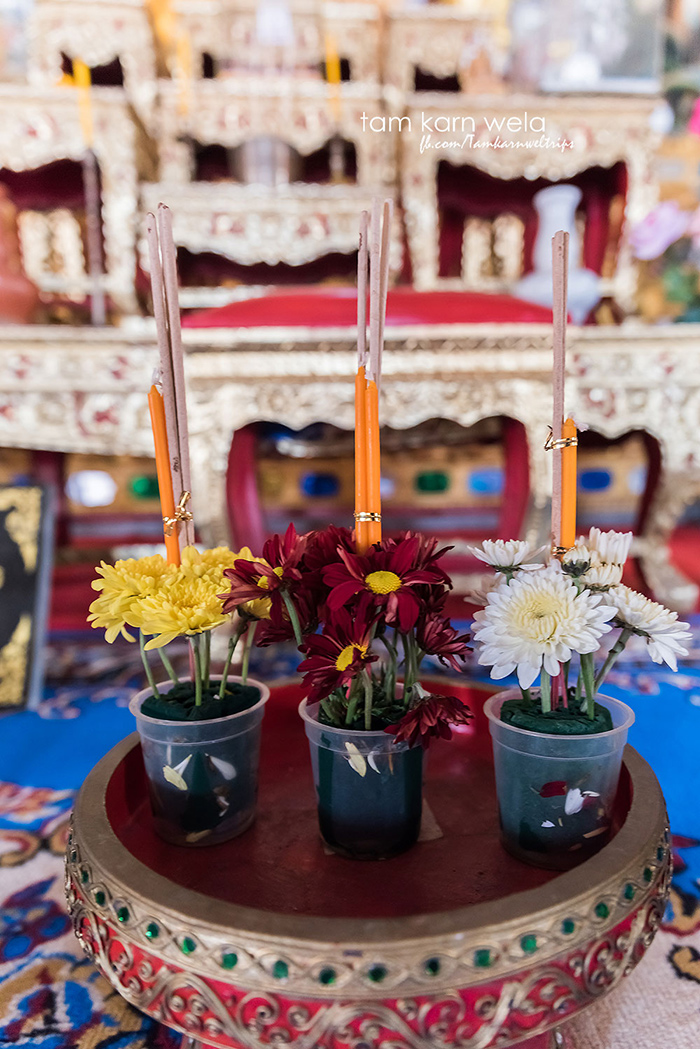
Detailed carvings, it is amazing.
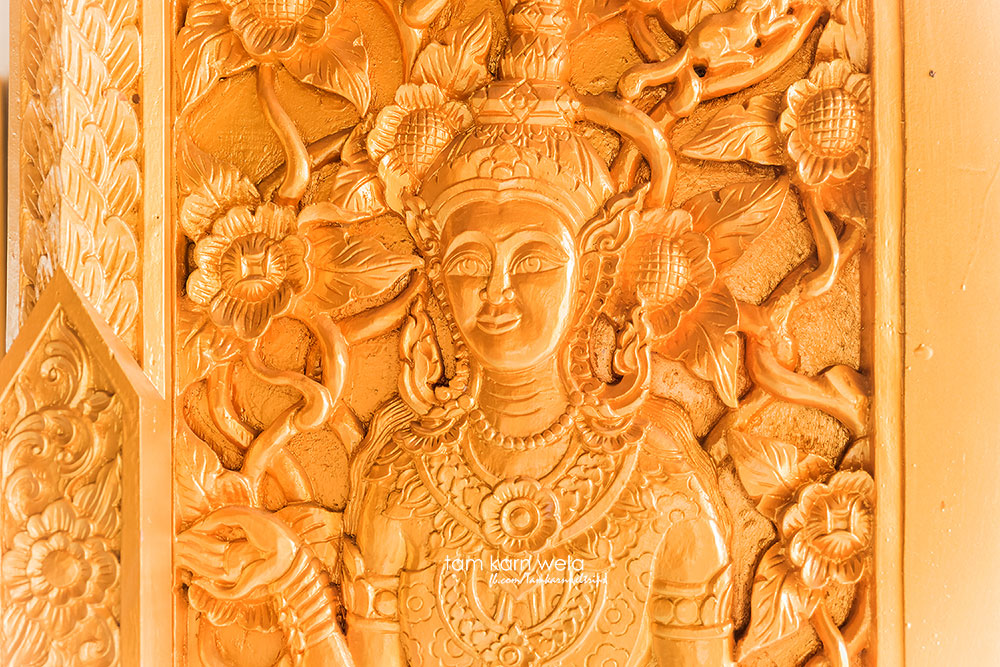
This ordination hall really stands out from any other ordination halls but it's a pity that the sky is not that clear today so the photo doesn't look that stunning.
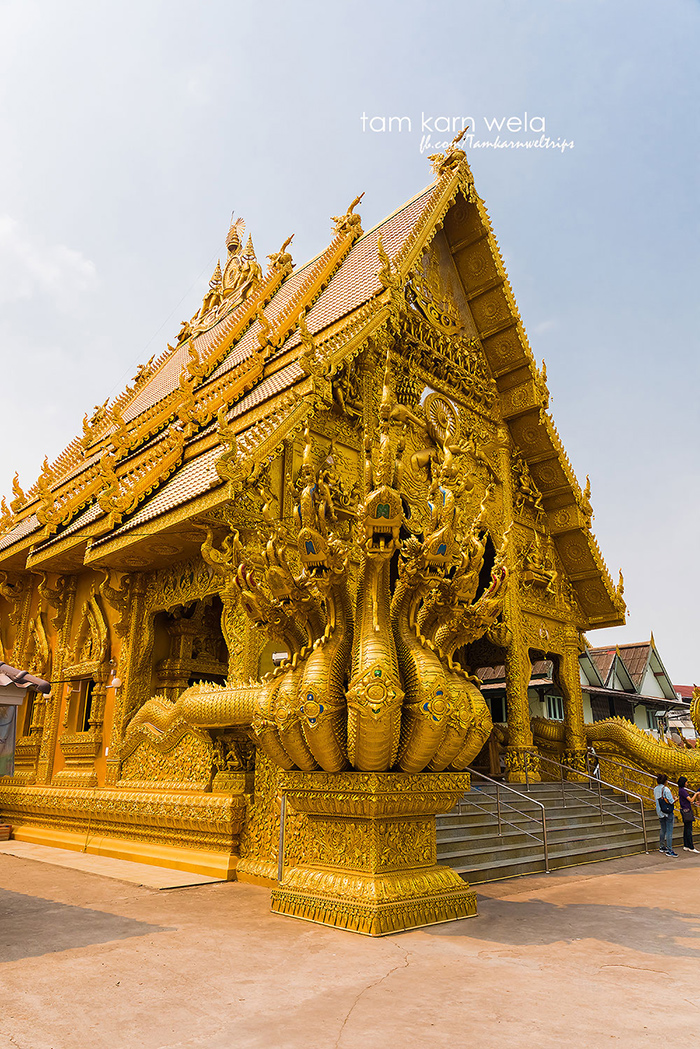
The seven heads of the Great Serpent "Nag" plaster artwork in front of the ordination hall.

This "Lert Kiattisak" (Phraya Khee) boat was built in 2003 by one whole piece of wood bought from Srina Parn Cemetery in Reung sub-district. It was Tarn PhraKru Visutha Nanthakit, the abbot of Wat Sri Panton who was the head of making this project happened. Lert Kiattisak Boat (Phraya Khee) is the biggest boat in Nan and the biggest long racing boat in Thailand. It can accommodate up to 100 paddlers. In the annual Nan Traditional Boat Racing Festival, Lert Kiattisak Boat (Phraya Khee) will be the one that presents all three Royal Trophies in the closing ceremony. And Wat Sri Panton is home of Lert Kiattisak Boat (Phraya Khee).

Wat Suan Tan is our third stop during the tour.
This temple was built by Phranang Pathummawadee, the wife of Phraya Phukeng (the city's governor in 1412). It is located outside of Nan's ancient wall in the North in the area of Suan Tan Luang (sugar palm trees' field), which later became the name of the temple. The stupa behind the ordination hall was in a shape of a lotus bud Sukhothai style but was re-constructed to be in Khmer-style stupa by Feudal Lord of Nan Phrachao Suriyaphong Pharitdeg in 2004.
Wat Suan Tan houses a huge golden Buddha statue, Phra Chao Thong Thip casted by the King Tilokkarat of Chiang Mai in 1450 as a symbol of his triumph in taking the rule over Nan. There is an annual Buddha statue bathing ceremony on April 13th, which is the New Year in Thai Lunar year. Galyani Vadhana, the sister of the present King Bhumibol Adulyadej used to join the event every year before she passed away. Therefore, Phra Chao Thong Thip is well respected by the locals.
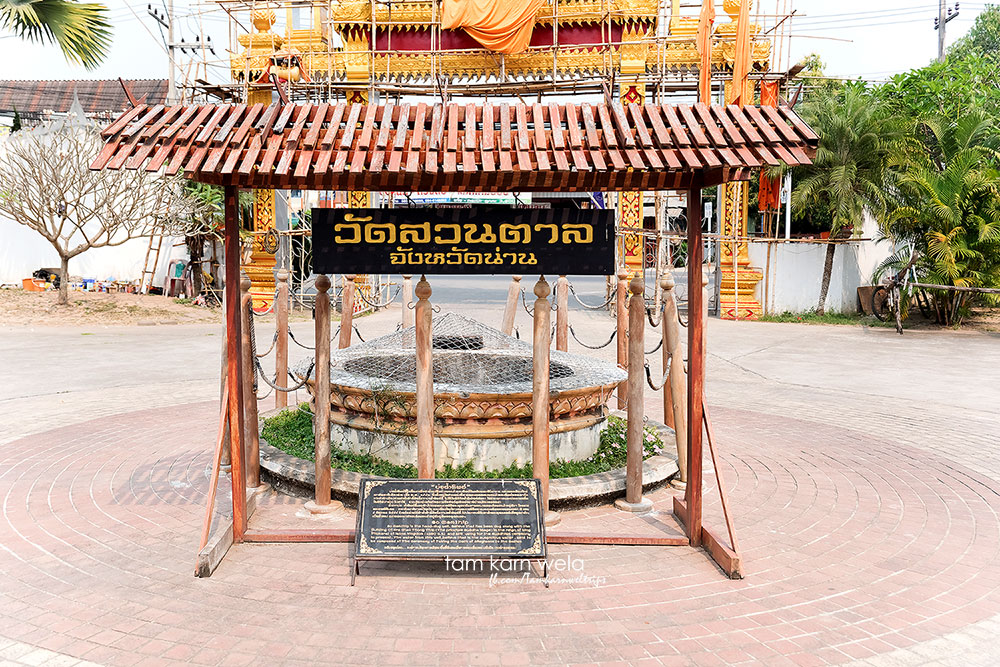
And there are three young local tour guides who are waiting to welcome the tourists here.
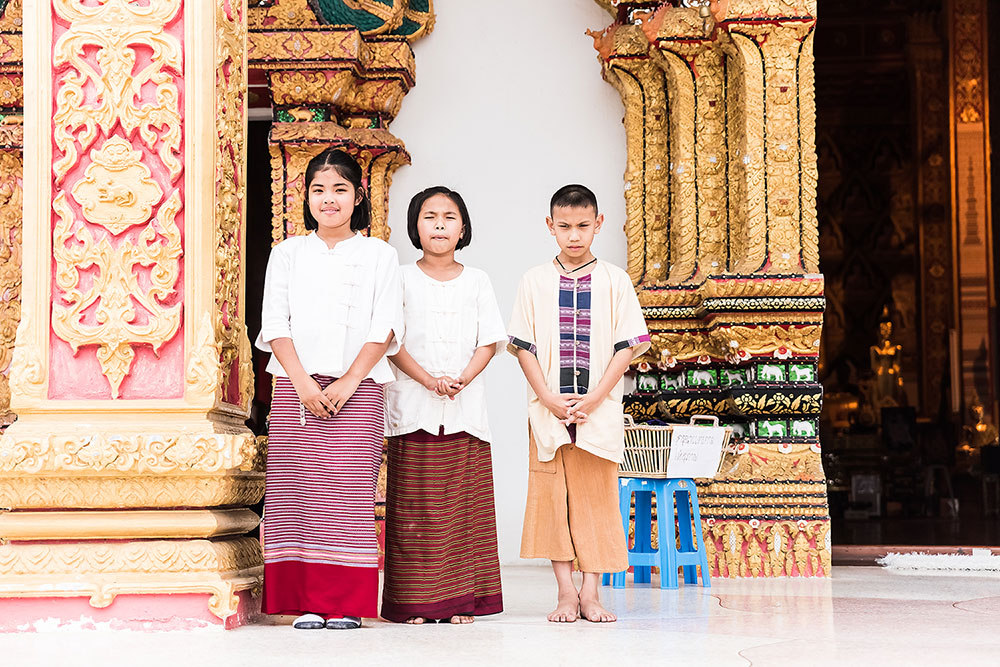
Phra Chao Thong Thip is a huge Golden Buddha statue, 10 foot-wide and 14 foot 4 inch-high built by King Tilokkarat of Chiang Mai who was a great King of Lanna Kingdom during that time.
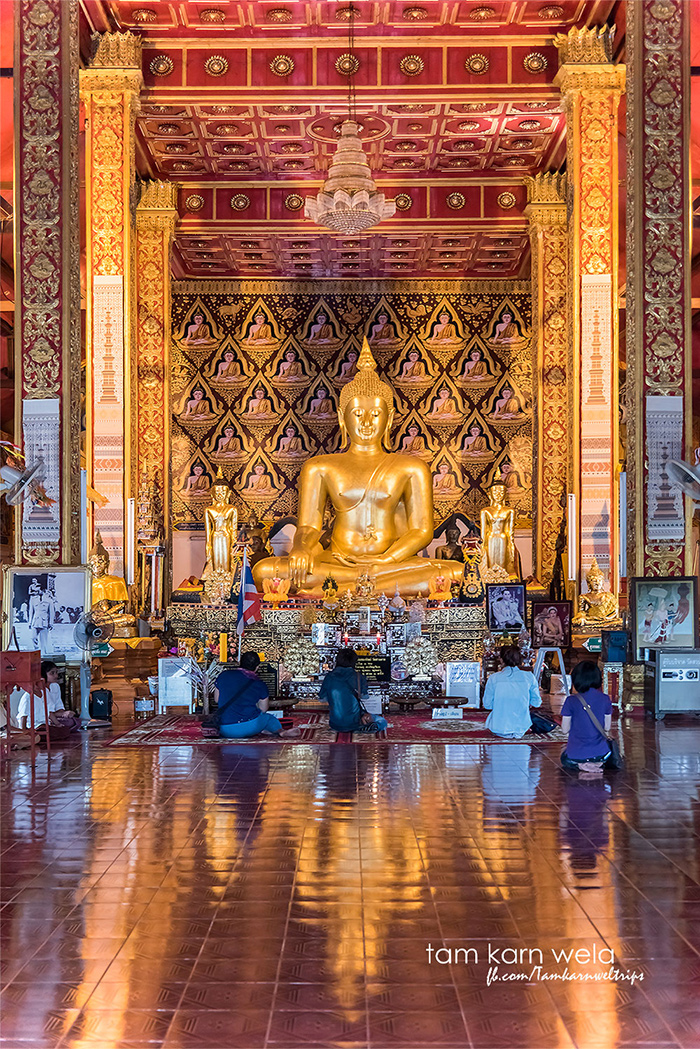
The young local tour guides said that in 1450, King Tilokkarat of Chiang Mai who had a powerful army during that time invaded and successfully ruled the city all around Nan such as Lor, Thoeng, Pong, Kuan, and so on before starting to invade to Nan. The army of King Tilokkarat had settled down at this Suan Tan Luang and fired the cannon balls into the city for 7 days.
One night, King Tilokkarat decided to invade into the city and at the same time Nan King Intakaen had seen that the army of King Tilokkarat is huge and powerful. Therefore, King Intakaen decided to leave the town with his family right away. King Tilokkarat then took over Nan successfully and easily without any wars.
King Tilokkarat would like to build something up to witness his victory without a war and then one nobleman suggested to build a Golden Buddha.
King Tilokkarat agreed and built a Golden Buddha in 1444. Phra Chao Thong Thip is a huge golden Buddha in the attitude of subduing Mara and has been placed in the ordination hall in Wat Suan Tan.
However, there was a lot of difficulties in building up this Buddha image. The plate was always broken. Then there was a guy dressing all in white showed up and made it work.
Once this Golden Buddha image was successfully built, King Tilokkarat threw a huge celebration with some praying ceremonies.
Then that guy in white who had help building the Buddha image up was gone miserably and no one never ever seen him again. Locals said that he must be a god who had come and just helped. This is the reason why this Golden Buddha image is called Phra Chao Thong Thip or Phra Chao Roob Thong Thip since then.
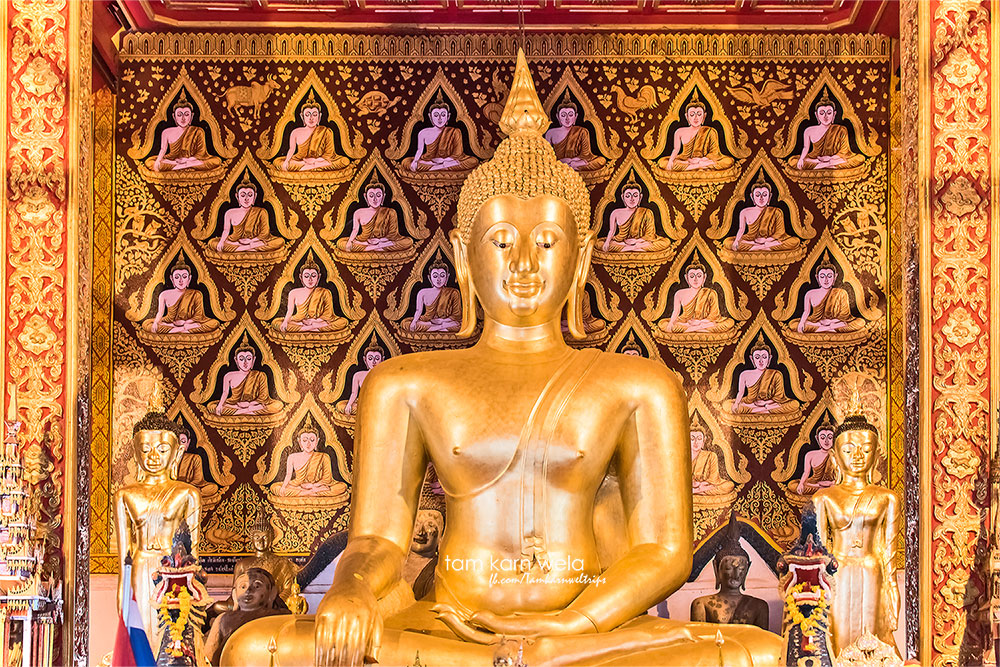
Let's pay homage to Phra Chao Thong Thip!
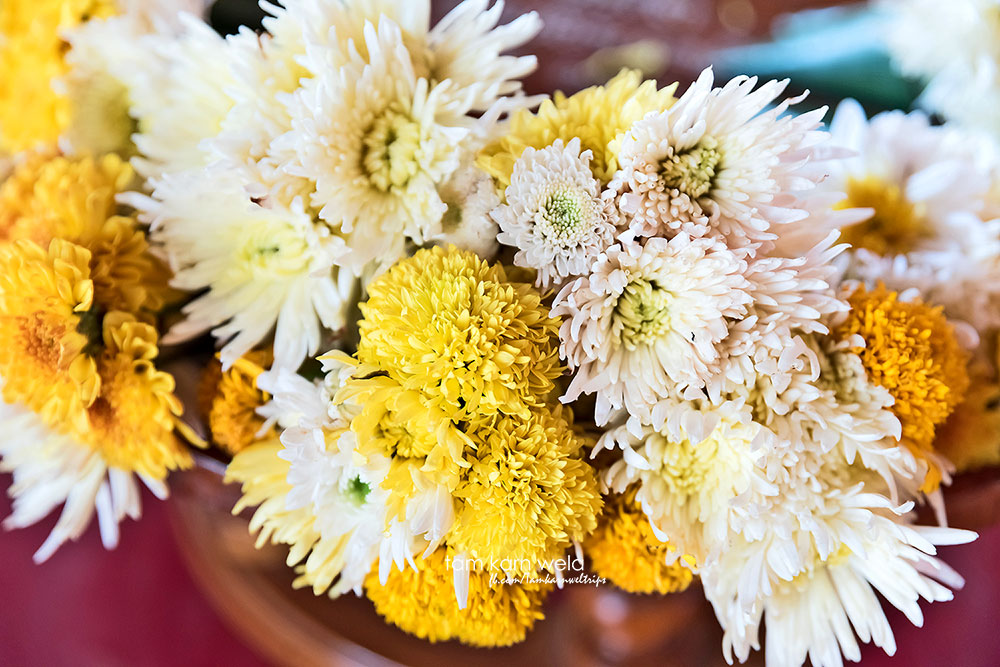
Hit the drum for good luck.
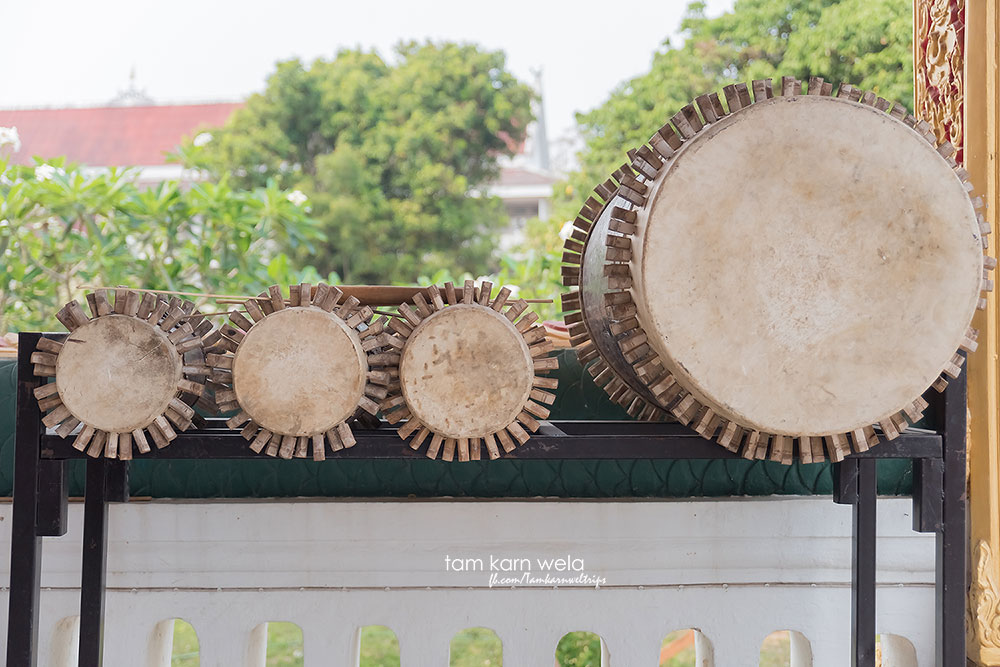
Thanks to you all, our lovely little tour guides. You all have been very kind and helpful.
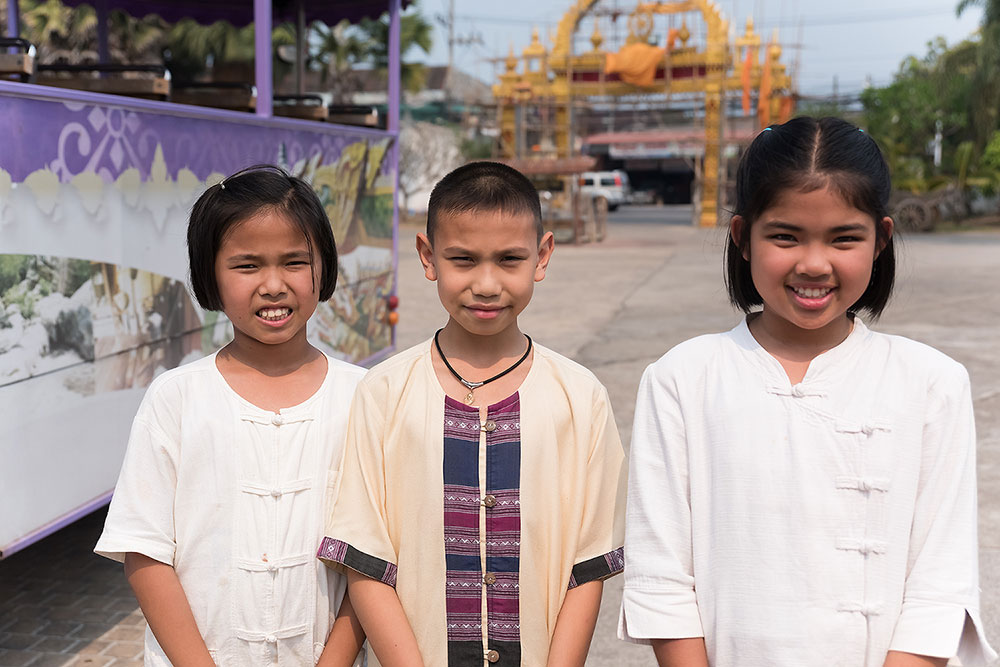
Our next destination is Wat Phra Kerd, a 186-year-old temple located at Ban Phra Kerd 21, Rat Amnuay Road, Naivieng where you are able to participate in exorcising ceremony using Northern Thai Flag.
We are very lucky to be able to see the demonstration of how to do a Northern Thai Flag "Tung" at Ban Phra Kerd village. The locals at Ban Phra Kerd village have gathered together at Wat Phra Kerd to preserved traditional way of living. People in the past used to gathered together to do some local activities such as pot lantern, watermelon lantern, flag of the zodiac, flag of sand pagoda, personal flag and so on. This is great in extending the traditional culture. Moreover, tourists are able to buy them as the souvenirs back home as well. This is also including basketwork from coconut leaf activity.
“Tung Kha King" is in Tai ethnic group language, "Kha" means equal and "King" means a person, a human being. So Tung Kha King can be called a personal flag. When they design Tung Kha King, they will make sure that the flag has the same high of the owner. More importantly, Tung Kha King is used in exorcising ceremony.
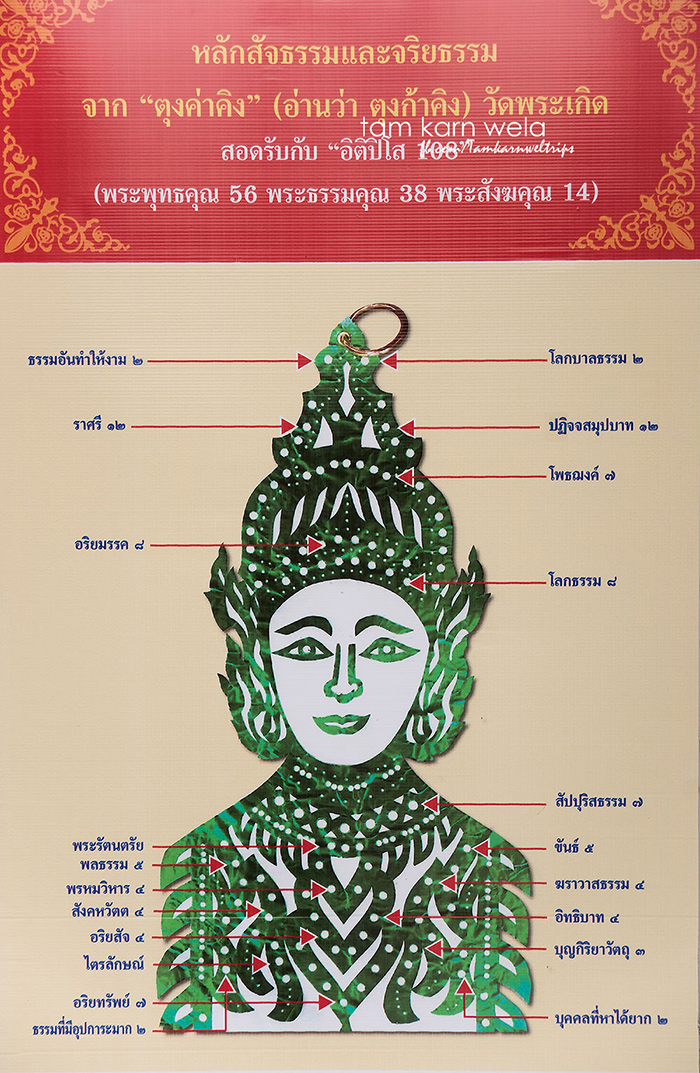
These are the craftsmanship of young people in the village who have spent their time preciously preserving their local cultures.
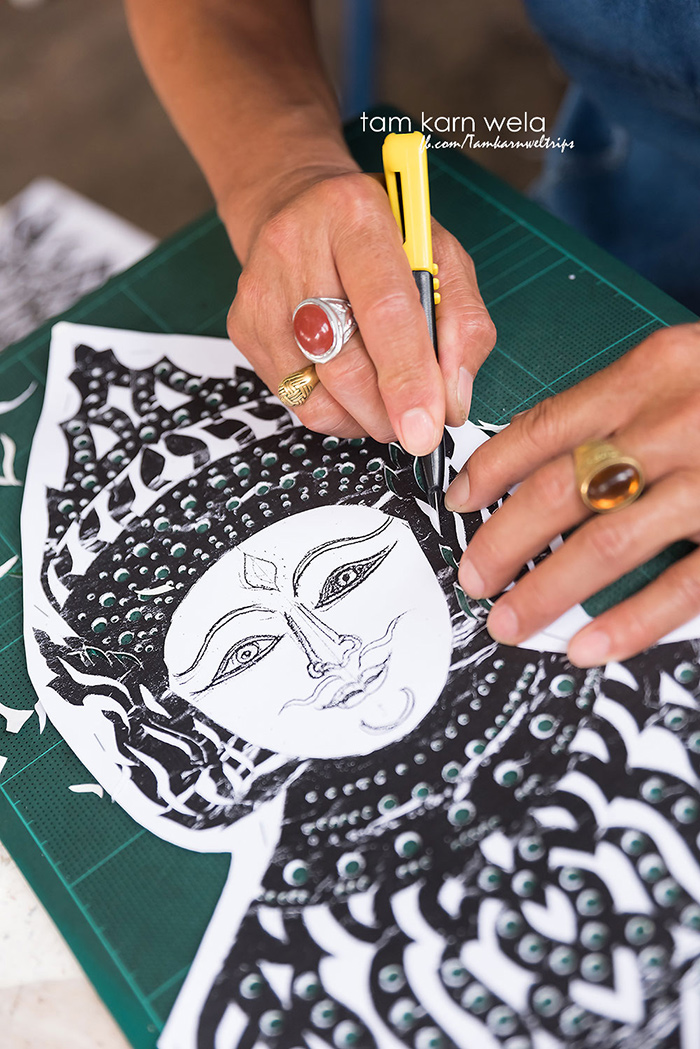
Look at their skill in perforated design!
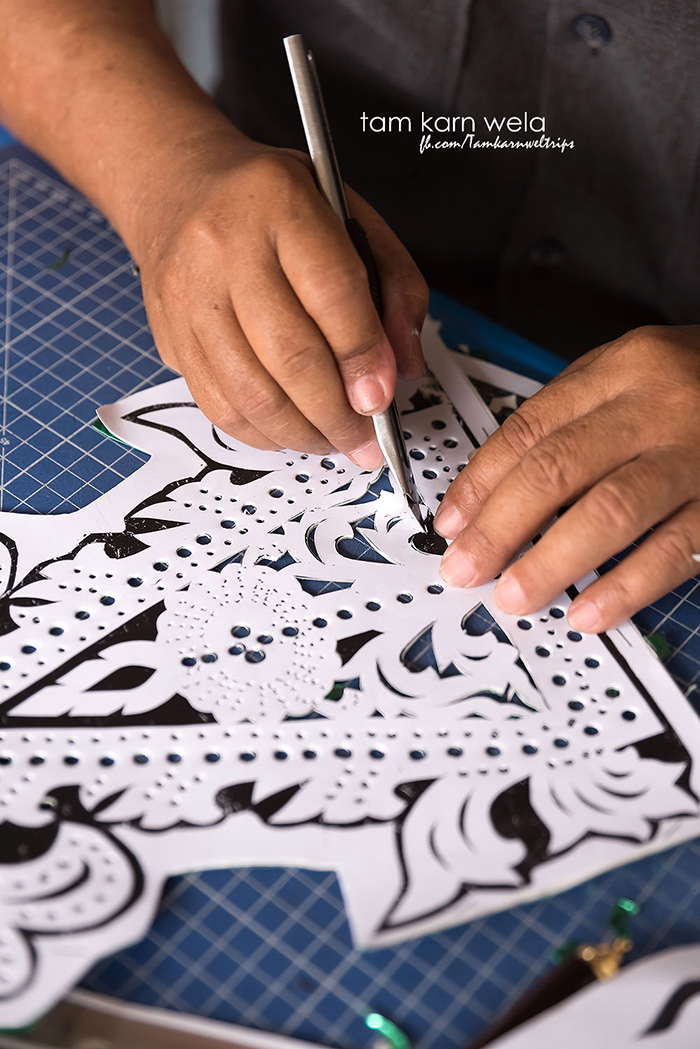
In addition, the temple is a house of “Ban Phra Kerd village museum". The museum has a collection of appliances used in the past, some are from the temple under the collection of Kruba In Pong and some are from the locals that donate to the museum. The museum can be divided into 3 zones including, assembled zone, Buddhism zone, and traditional and local culture zone. This is truly interesting and worth to see.
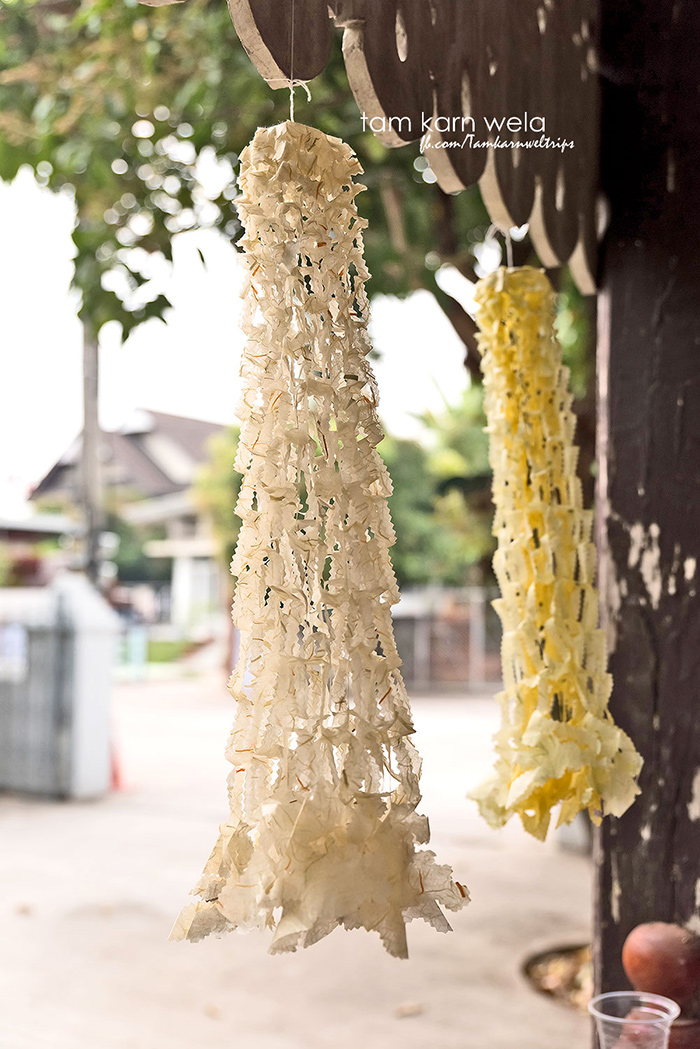
This is my Tung Kha King or personal flag.

Within a walking distance from Wat Phra Kerd, there is a Hong Chao Fong Kham (The Noble House). It is considered as one of the most beautiful Noble houses in Nan and now is a house of the museum.
"Hong" in local langauge is used to call houses of nobleman in Lanna Kingdom. This Hong Chao Fong Kham belonged to Chao Fong Kham, a descendant of Nan governor Chao Anantaworarithidej.
When Nan governor Chao Anantaworarithidej had moved Nan city down to the south about 2 kilometer far where it is Downtown Nan nowadays, Koom Kaew (the noble house used to be located next to Hong Chao Fong Kham) was left unattended. At the same time, Thai government would like to take the land of Koom Kaew and the land nearby. So, Chao Boonyuen (niece of Chao Anantaworarithidej) moved the house to Hong Chao Fong Kham. And the name of this place (Hong Chao Fong Kham) is from the daughter name of Chao Boonyuen.
The Noble House was built from solid teak wood and the wood was cut by axe and knife, and joined without the use of screws or nails. Even though there was a renovation in 1924, you are still able to see some old teak wood in some part of the house without any marks of screws or nails.
Hong Chao Fong Kham nowadays belongs to this auntie in below photo.
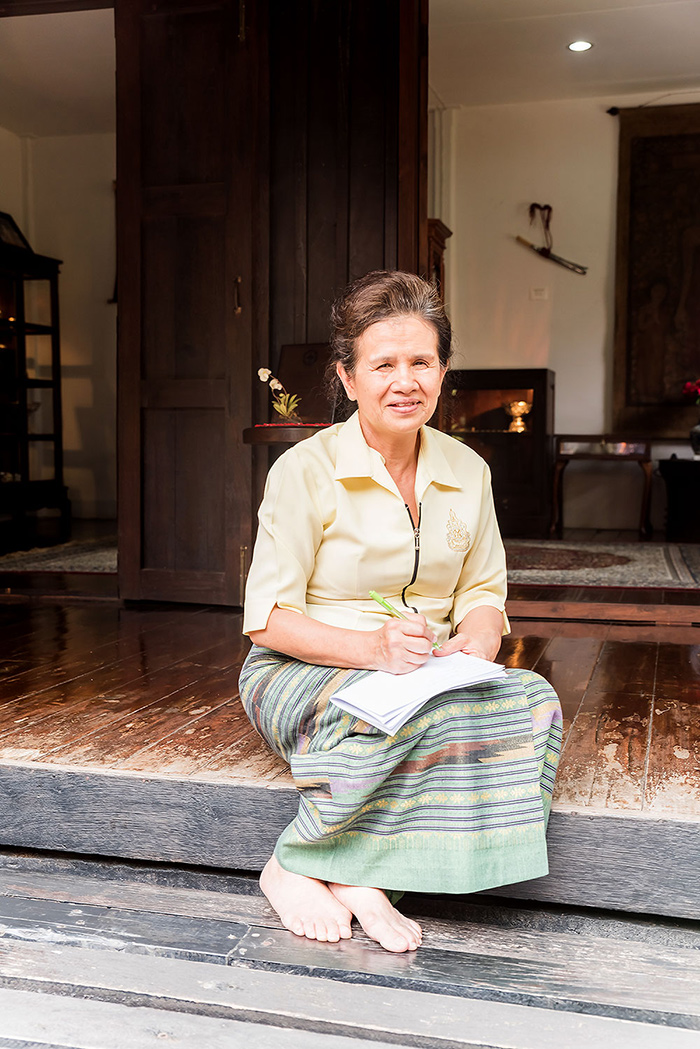
It is very refreshing here by greenery surroundings and there is no entrance fee but you can give some if you wish.

There is an exhibition of traditional cloth that made by finger weaving under the house and you can even buy them. You can also see how they are made.
A regular cotton weaving demonstration from the first to last step in creating a traditional cloth.
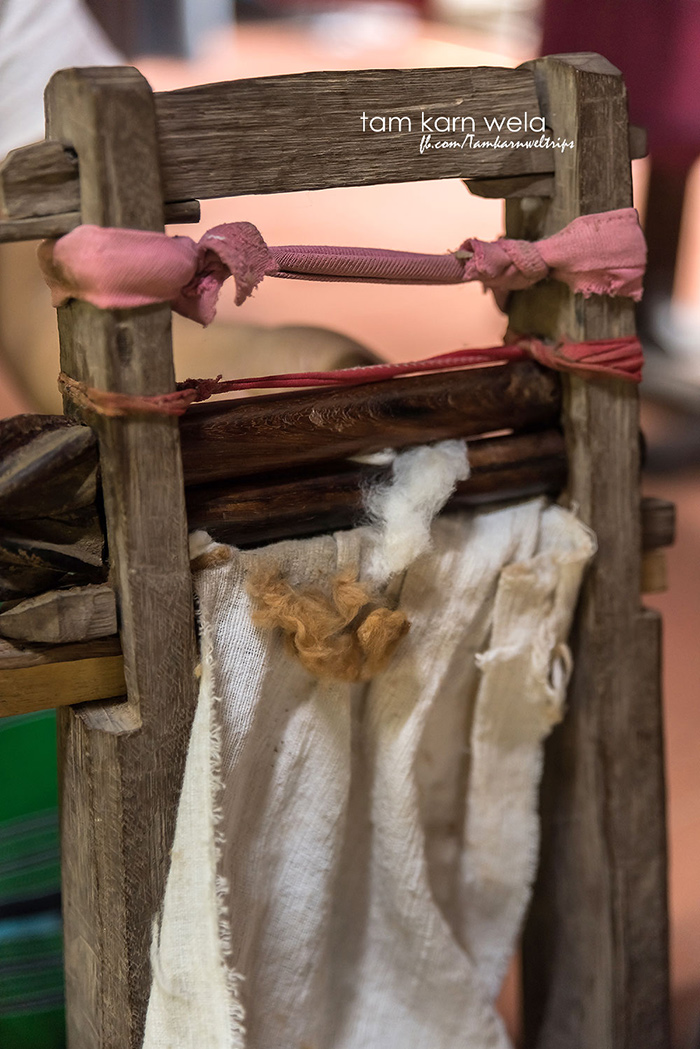
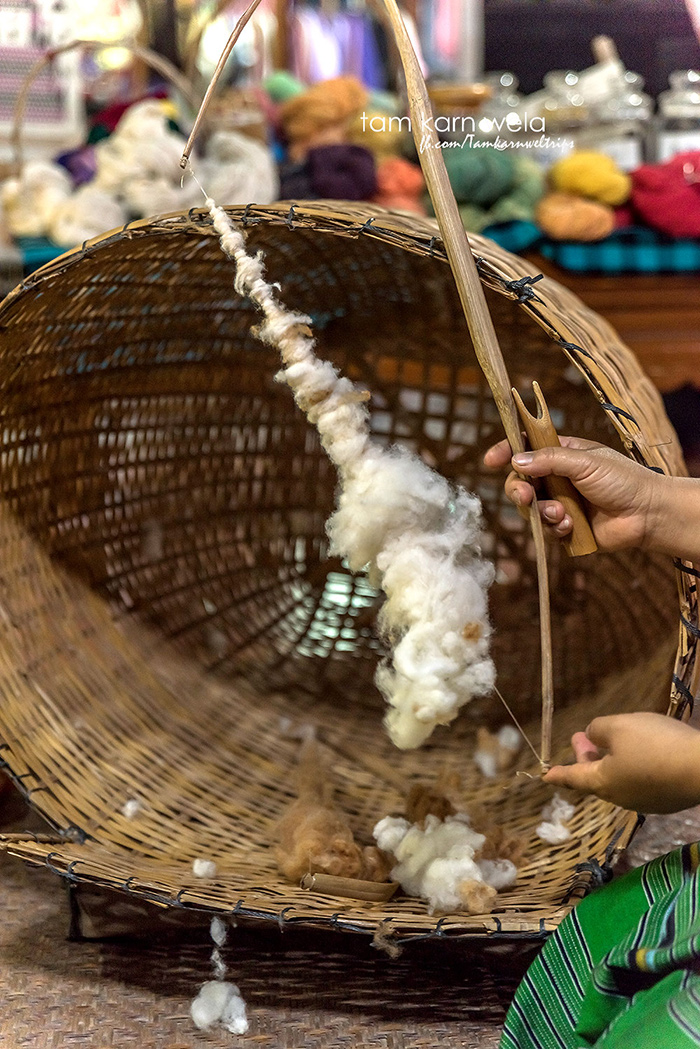
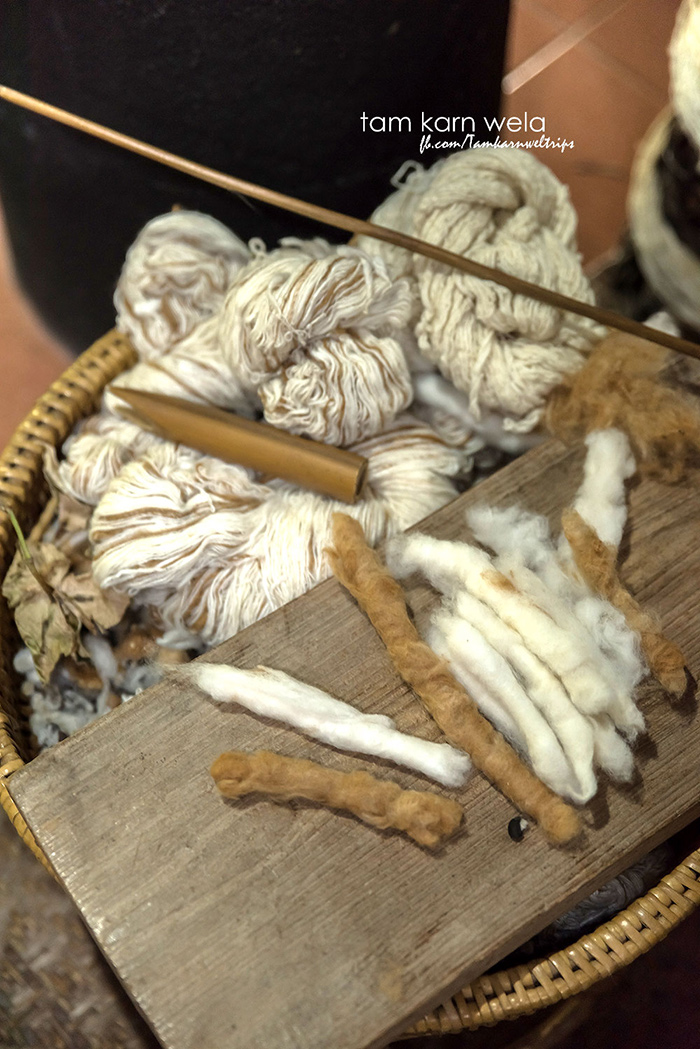
This is the way they do the cotton before weaving process.

I have learned a lot and I am very impressed with this local wisdom, thanks to Hong Chao Fong Kham where this has been well conserved.
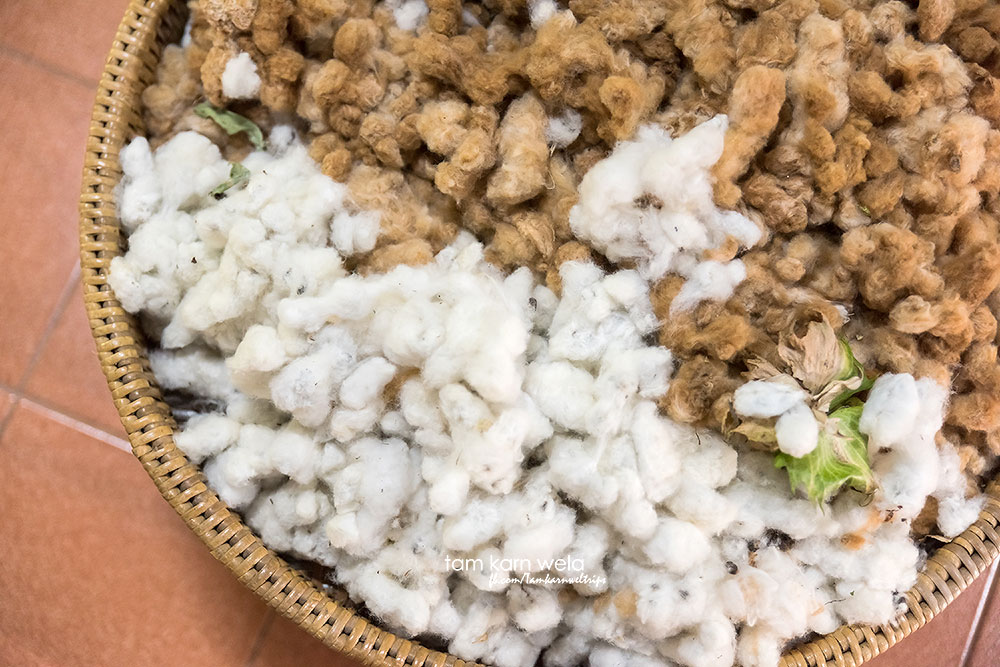
The tram tour ends here so we have got to travel on our own now.
And I would like to use this little space to thanks to this beautiful tour guide who has given us an enjoyable tour.
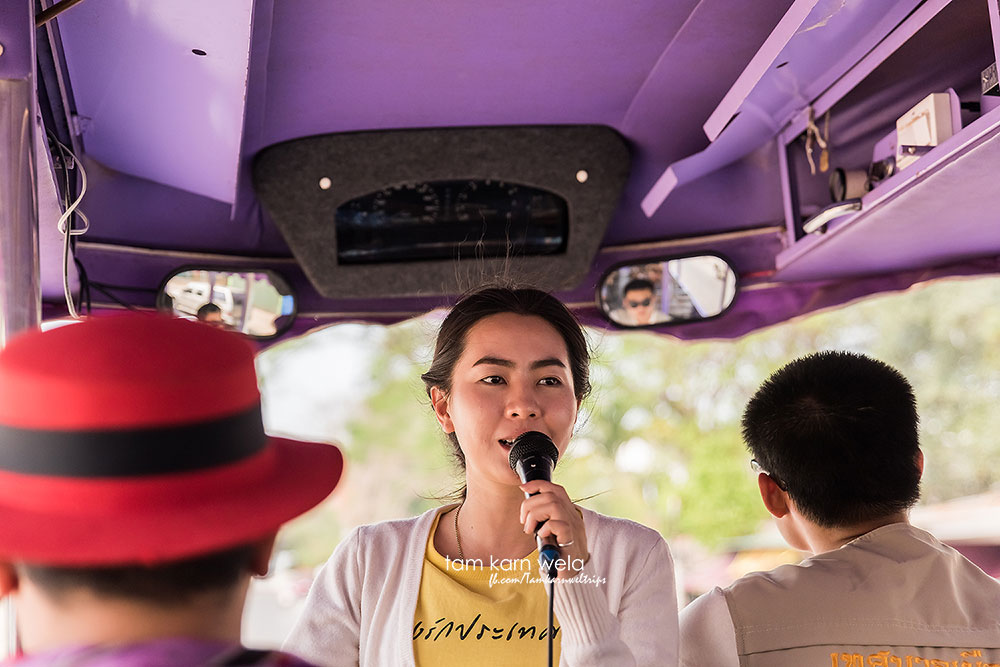
Let's get started with Wat Phu Min which is located right across where the tram tour ends.
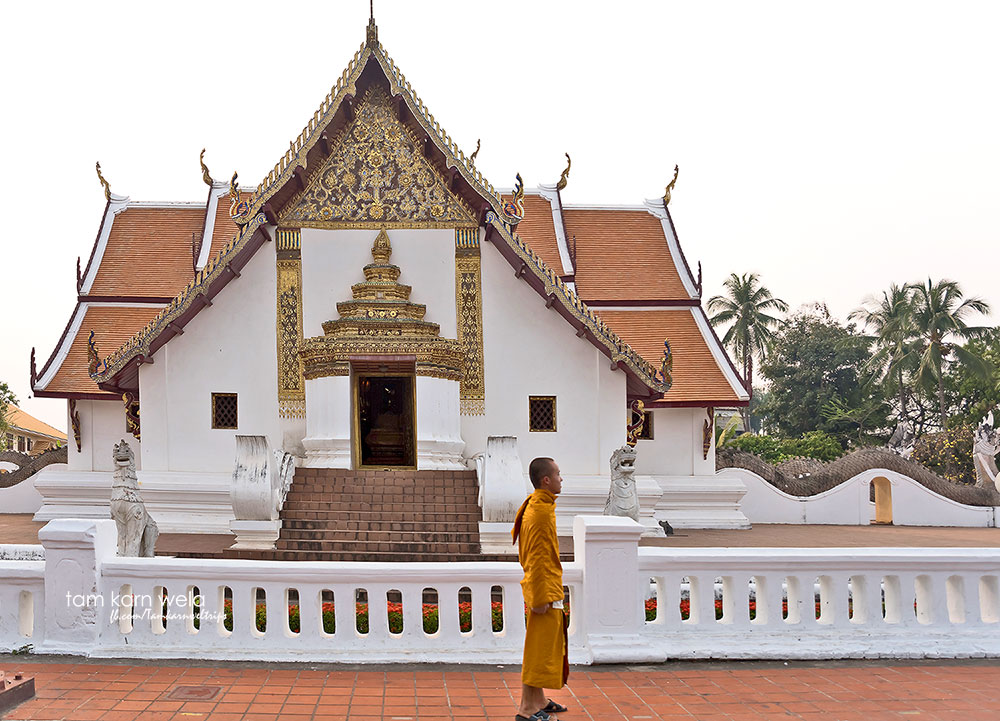
This is like a place where everybody will come when in Nan. This temple is pretty unique and totally different from any other temples that the main hall and the ordination hall are in one building. All four wooden gates are beautifully crafted by local craftsman.

According to Nan chronicle, Wat Phu Min was built in 1596 by Phrachao Chetabut Prommin, the ruler of Nan. The temple used to name Wat Prom Min as the founder, however; the name has slightly changed due to the time as Wat Phu Min nowadays.

The main hall is built as if it were on the back of two huge immense snakes (or Nagas). Furthermore, it is the main hall with four-sided archway. This main hall is also proven by The National Fine Arts Department to be the first main hall with four-sided archway in Thailand. At the center of the hall is where 4 huge Buddha images in the attitude of subduing Mara situated facing to all 4 entrance. So no matter which archway you enter, you all will be facing with one of the Buddha images looking at you.
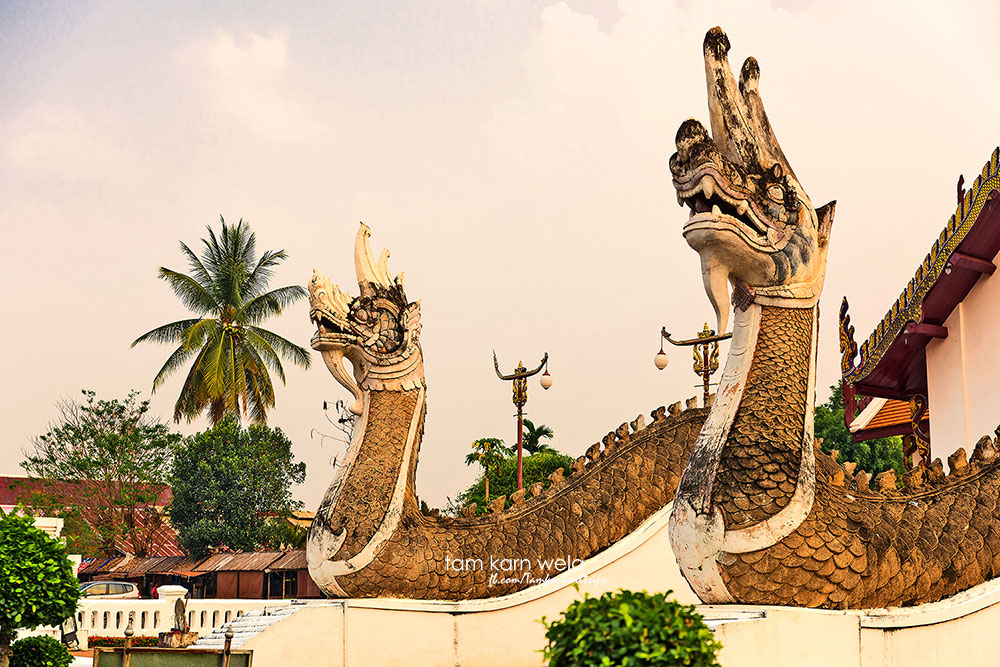
If you don't come here when you are in Nan, it doesn't count that you have ever been to Nan at all.
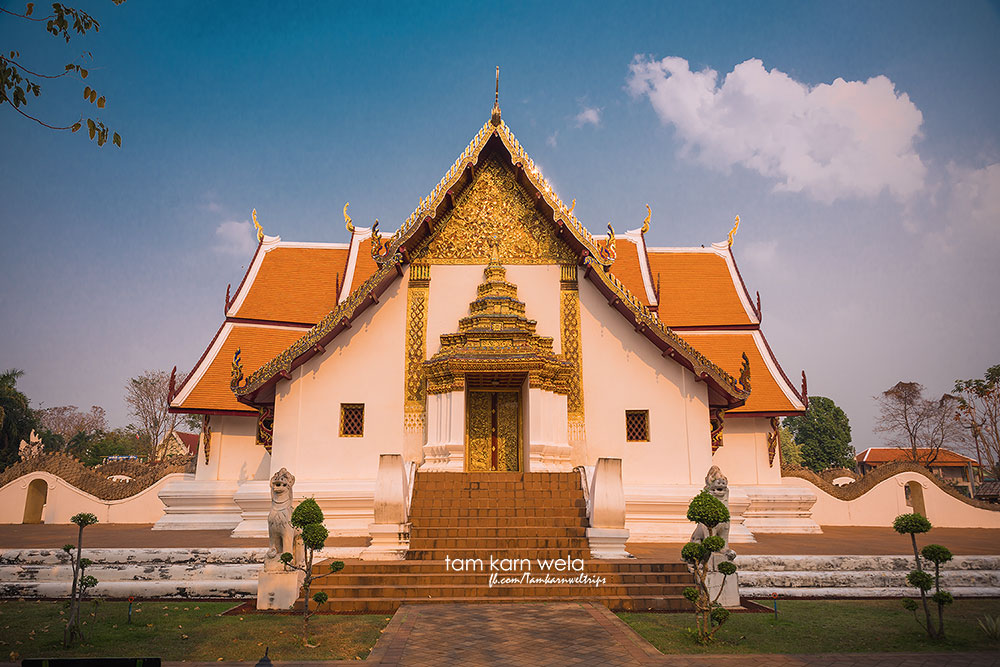
Let's pay homage to the Buddha image.
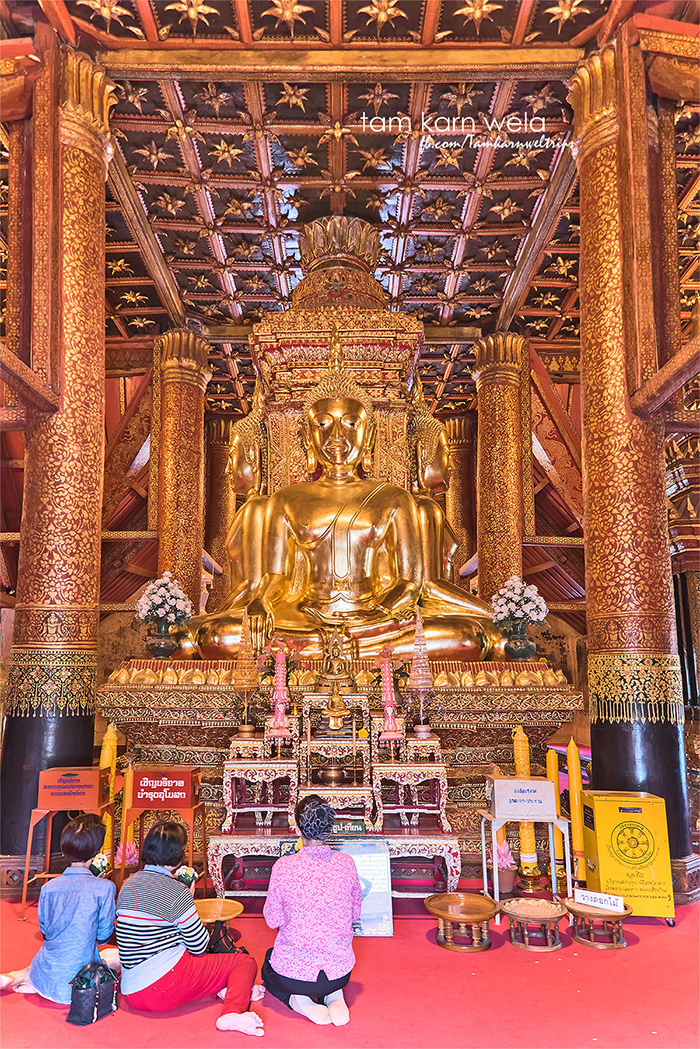
The well-known "Poo Marn Yar Marn" or Whispering of Love mural painting is in Wat Phu Min. The painting was created by the renowned artist Nhan Buaphan. Nhan Buaphan is a local artist who is Thai Lue. His Poo Marn Yar Marn mural painting is known as a very detailed artwork and it is very outstanding among any other painting in Wat Phu Min. The painting portrays an affectionate image of a man touching a woman's shoulder and whispering to her that is the reason why it is also called the Whispering of Love painting. And it has become a symbol of Nan.

"Poo Marn Yar Marn" is used to call this Burmese couple. The man is touching the woman's shoulder which is a normal thing to do as a couple. On the other hand, it is not right that a man touch a woman in case that they are not a couple in the old days. Moreover, we can see how they dress clearly as a burmese couple. Marn is Burmese, Poo is an adult man, and Yar is an adult woman (actually Yar pronounce as Ngar). Not only this artwork but also the mural painting in Wat Nong Bua that was completed by Nhan Buaphan.
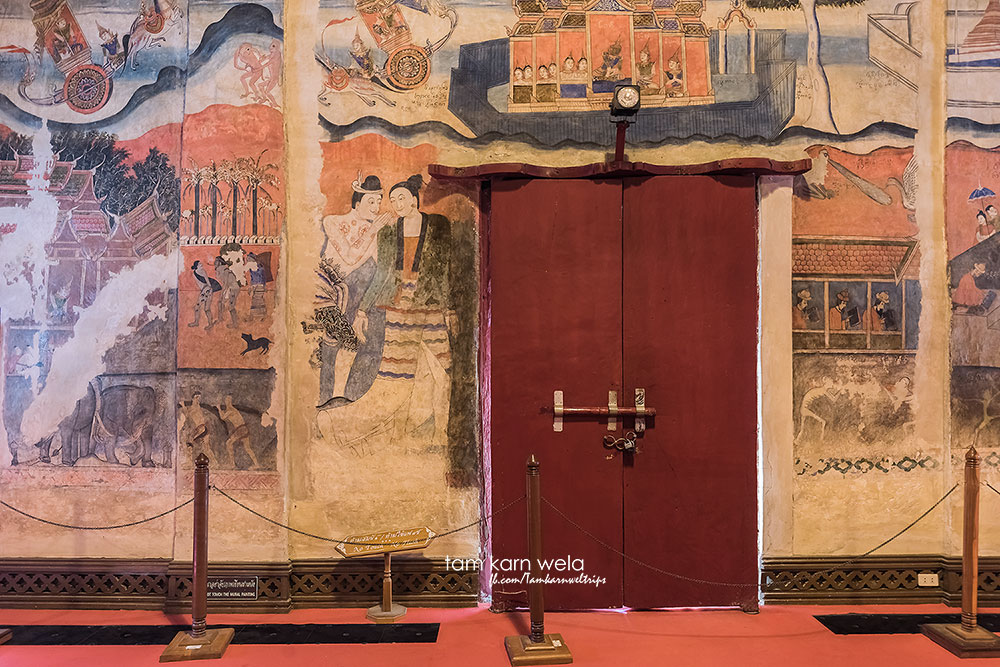
There is a short poetry in the local language that comes along with this well-known mural painting. This poetry is like what Poo Marn whisper to Yar Marn and it can be said roughly as follows.
“I am thinking to keep your love in the river but I am afraid it would be cold
To keep it in he sky but afraid that the cloud would soon cover all your love for me
To keep it in the Noble house but afraid when he finds it, he will take it
So I think I better keep your love at the very bottom of my heart so I can think of you every second
Both while I am awake or a sleep"
We have heard this poetry from our tour guide earlier on the tram tour, it is very lovely.
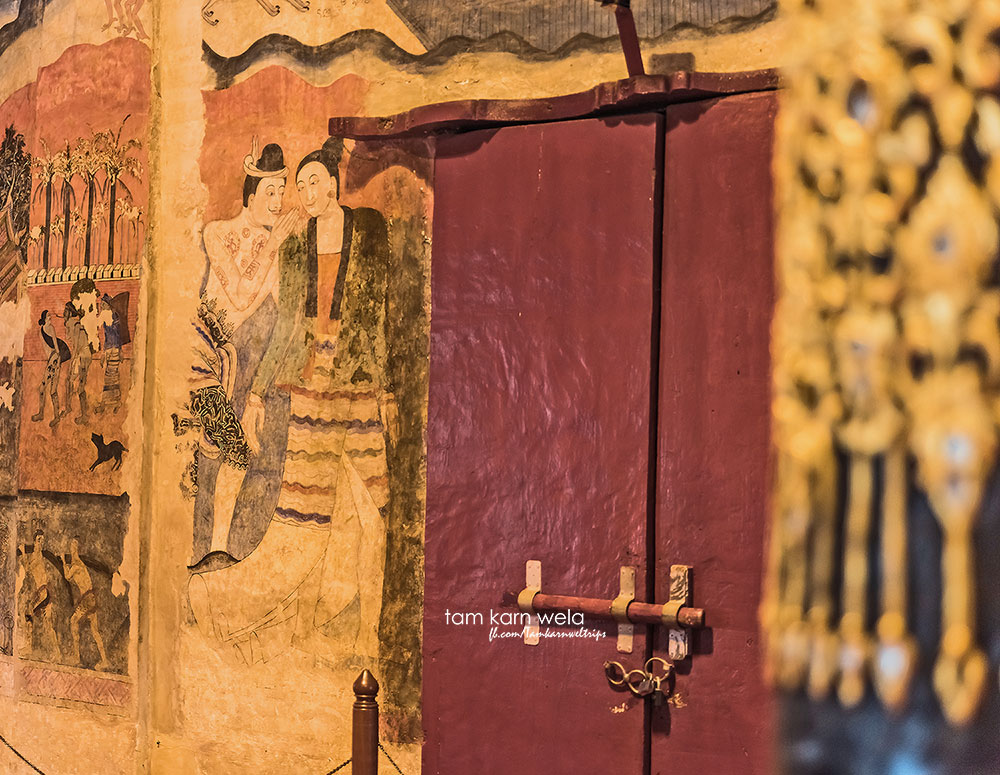
There is a story behind every single part of the mural painting.

As you can see the mural painting gets fading away more and more everyday so it needs to be very well taken care of.
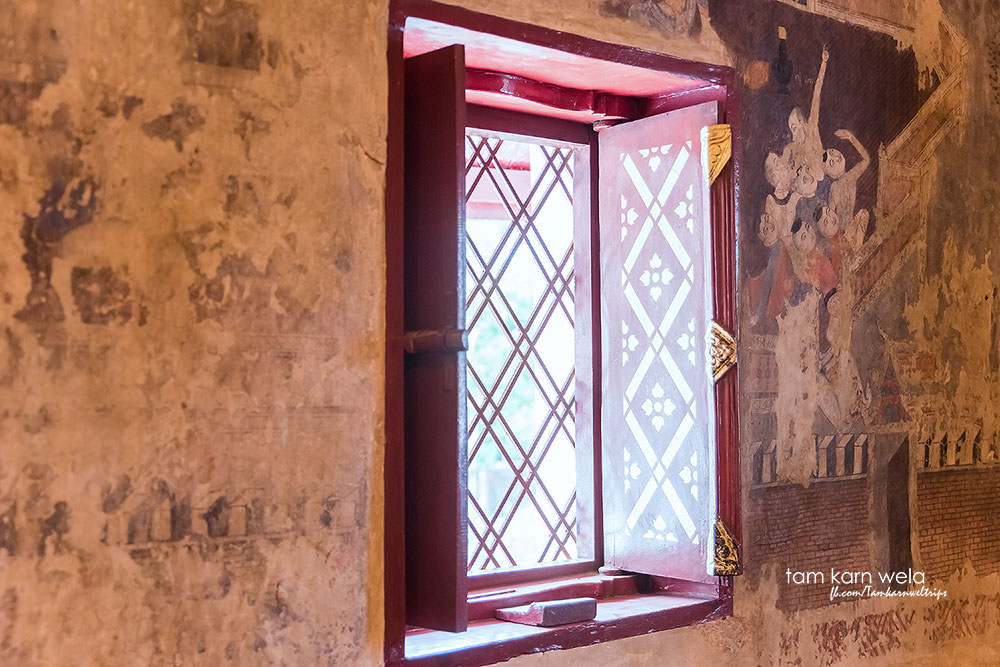
How the locals live in the past.
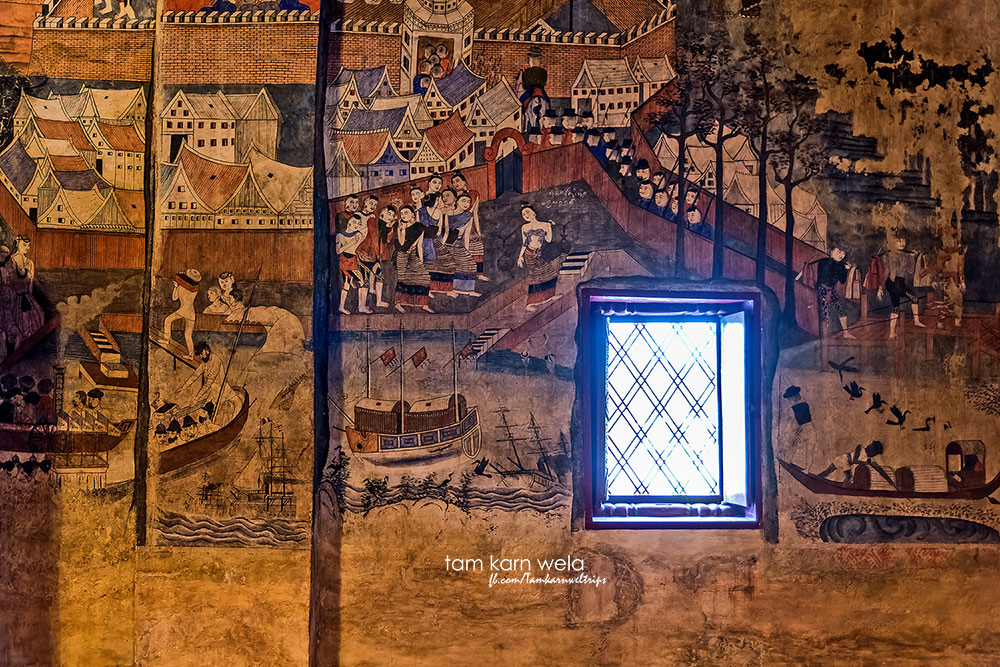
A single lady in the pass will dress like this without anything cover her front upper body.
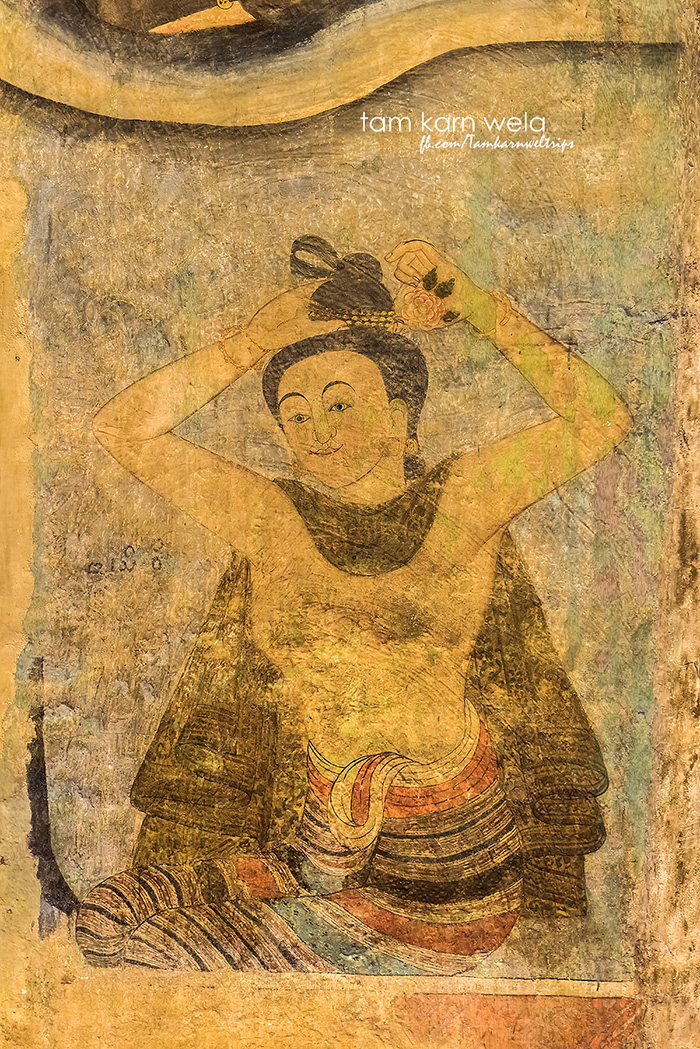
Local artist who has his works sold in Wat Phumin.
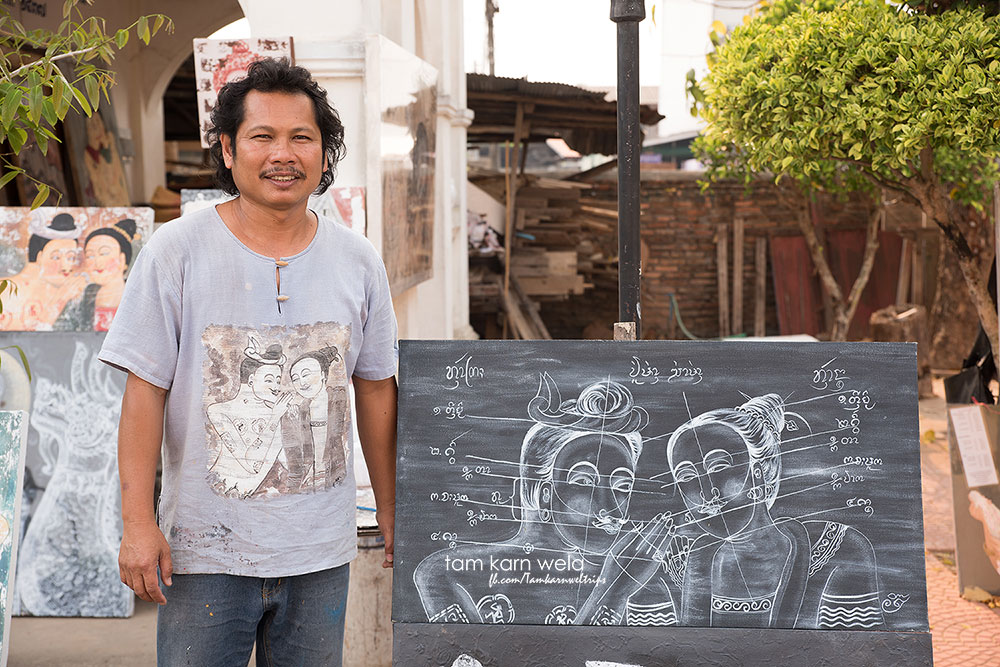
Wat Phumin on a partly cloudy day, I hope I will have a chance to be back here.
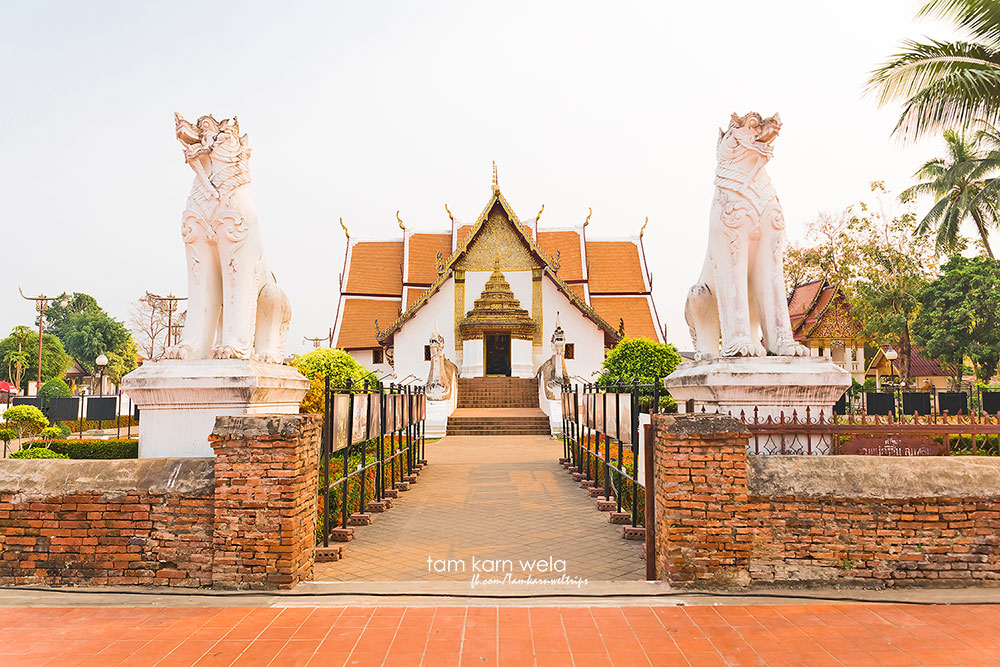
Nan National Museum is located not far from Wat Phumin at all. As you can see from the photo below, frangipani trees are well aligned looking like a tunnel.
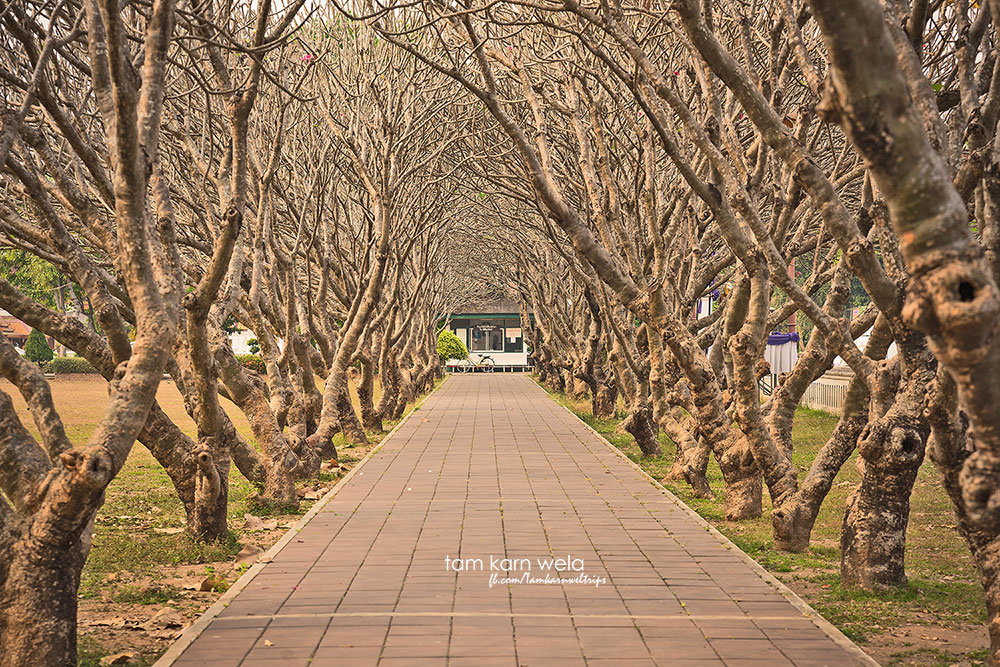
This place is a house of this small temple too.
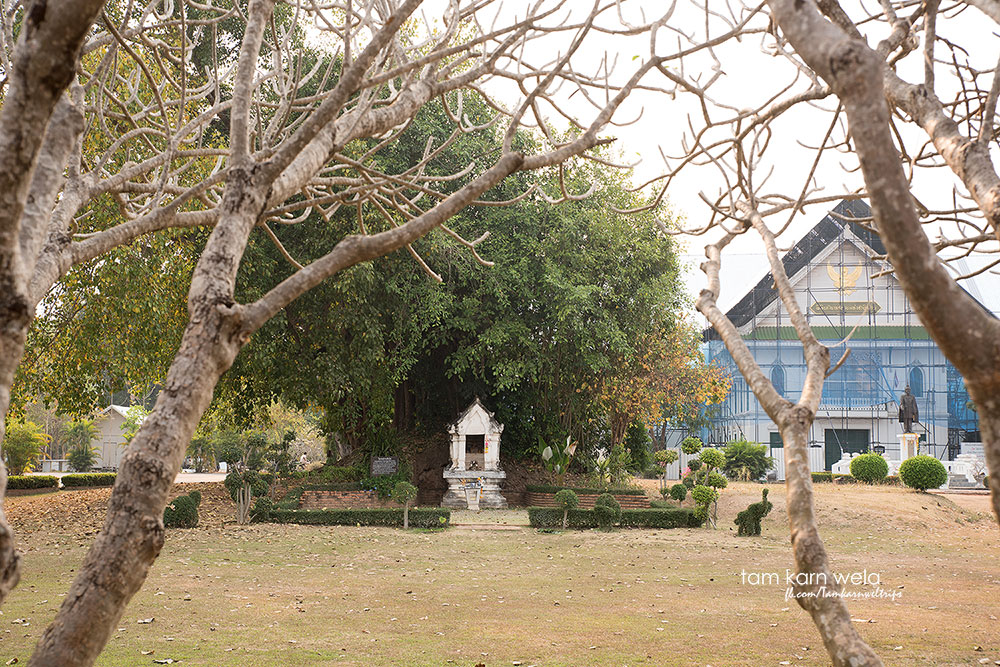
Wat Noi is situated under the Bodhi tree in Nan National Museum. It is the smallest temple in Thailand. It was when Feudal Lord of Nan Phrachao Suriyaphong Pharitdeg had to report the number of temples in Nan to King Rama V, he reported mistakenly with one more temple over the accurate number. Therefore, he built up this Wat Noi in order to have the number of temples as same as what he had reported. It is presumed that it was built after 1873 right after his report.
Don't miss this place for any reason!
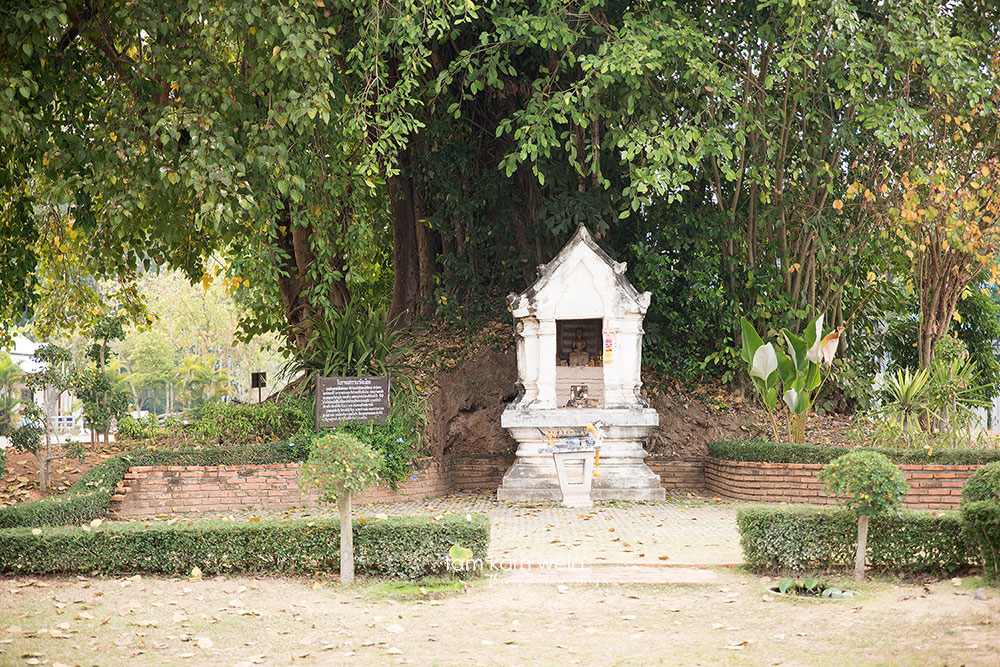
Lastly, we finally come to the last temple of the tour, Wat Phra That Khao Noi.
Phrathat Khao Noi is in the West side of Downtown Nan situated on top of Khao Noi mountain at 240-meter high from sea level. It was built in 1487 and constructed in Burmese and Lanna style combined together. It was a huge renovation under Phrachao Suriyaphong Pharitdeg order during 1906 and 1911 by Burmese craftsman. Wat Phra That Khao Noi is also one of the most important temples in Nan. It is presumed to be same age as Wat Phra That Chae Haeng. To get there, you can take 303 steps up to the temple or just drive up as well.
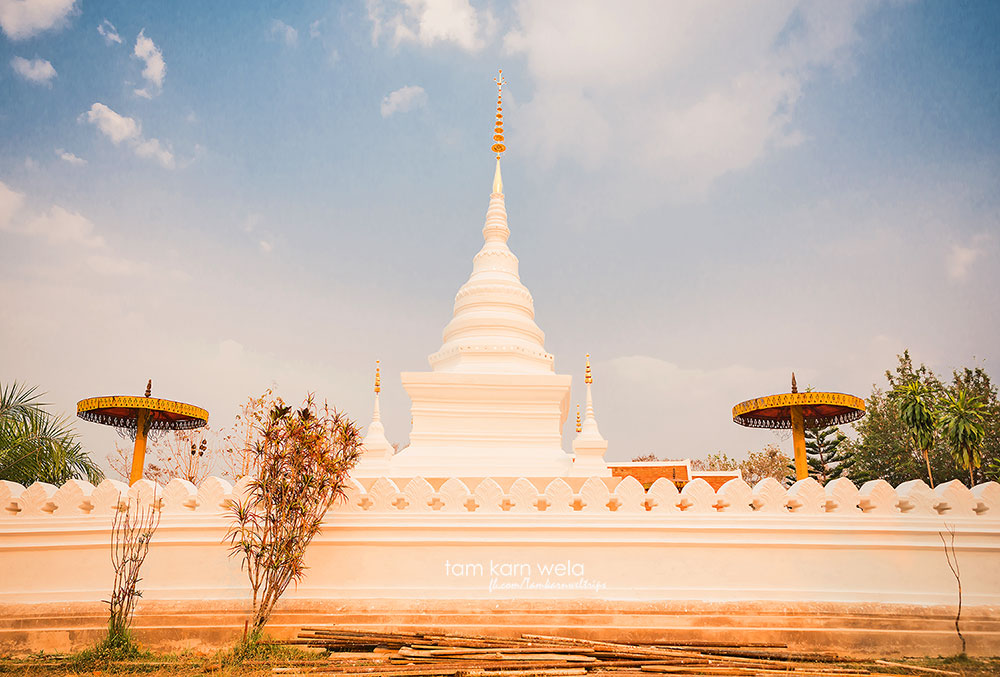
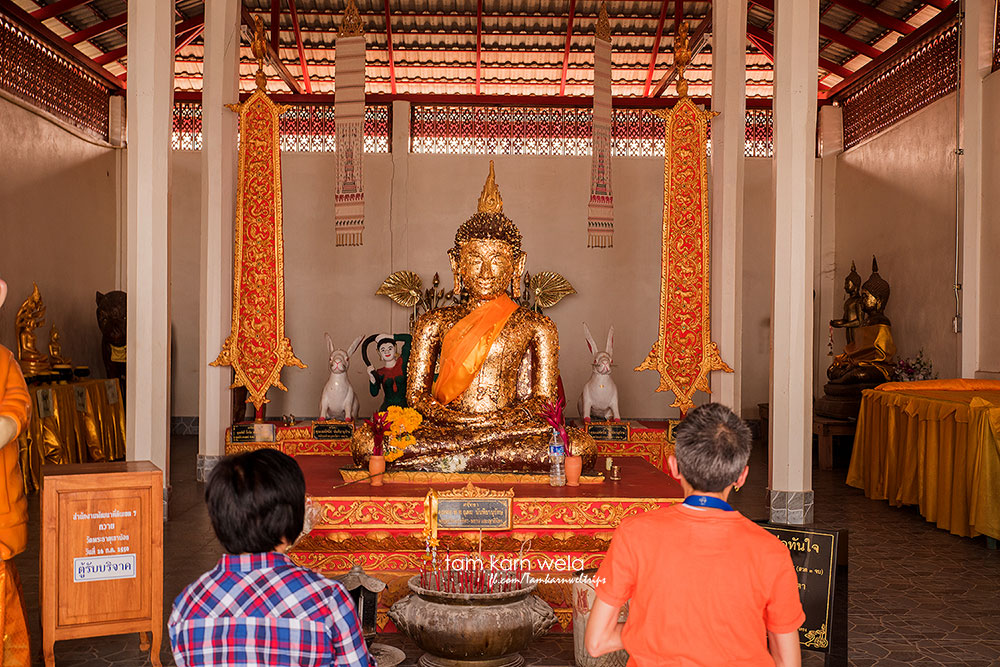
This is another beautiful and peaceful temple. After all, I have realized that Nan has too many temple and there are 102 temples within only Downtown Nan already.

This temple offers a great view during sunrise and sunset.
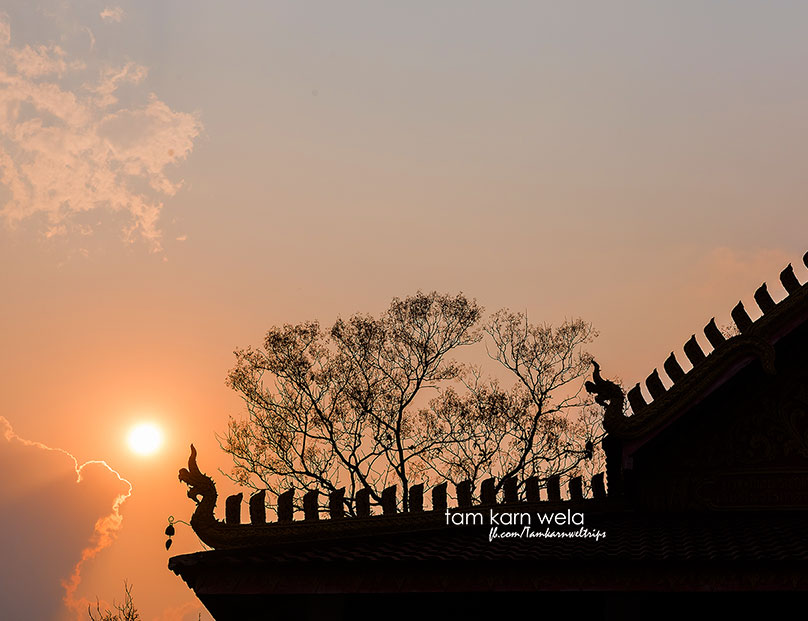
We have decided to come here during sunset and we are not disappointed with what we see.

A lot of people are coming during this sunset to reserve their spots to witness the end of the day.
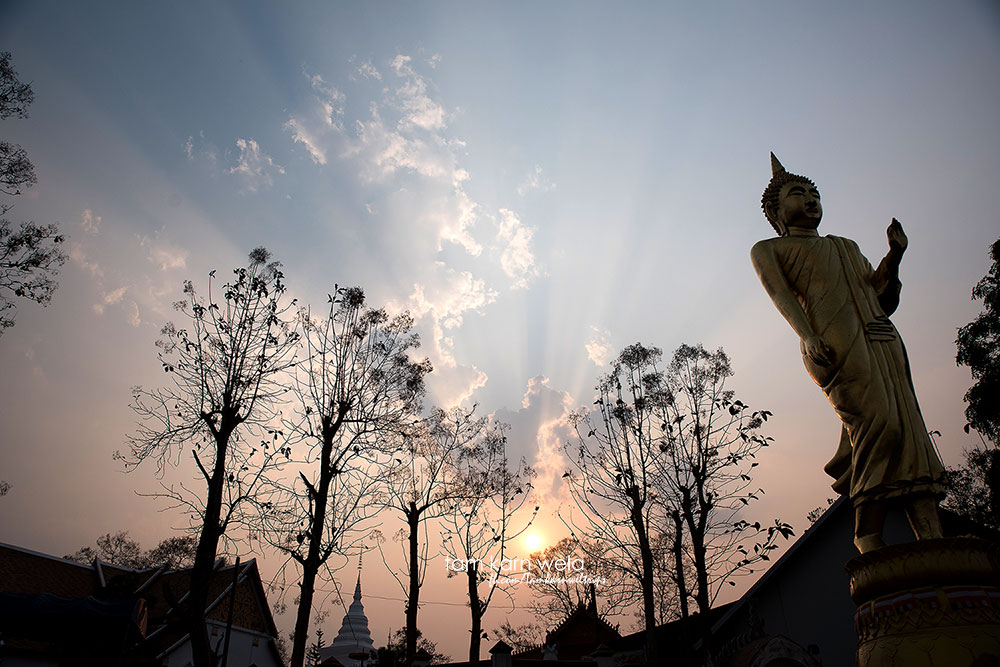
We sit and see the beauty of the sky and its different color during sunset.
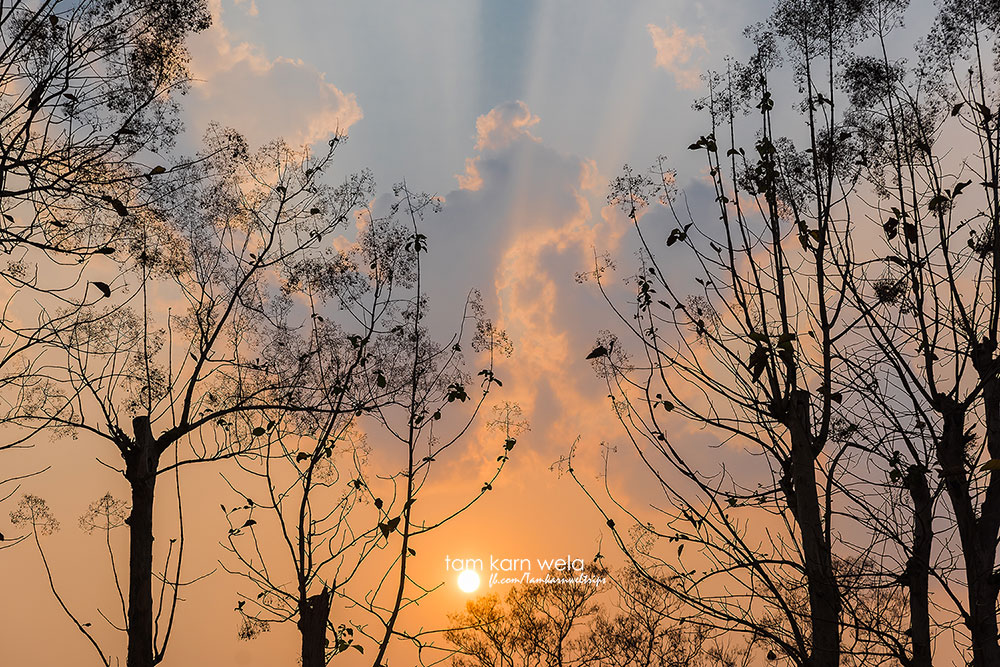
…We enjoy every single minute we have spent here.
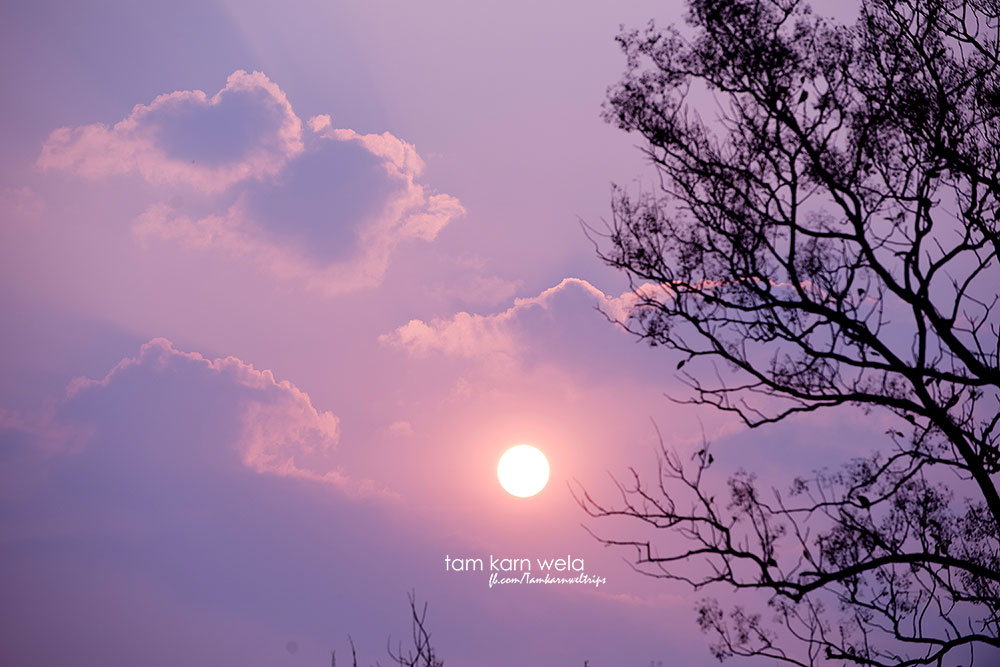
We are able to see 360-degree panoramic view of Downtown Nan from here. This viewpoint is also a place where Phra Buddha Mhaha Udom Mongkol Srinan is situated. This 9-meter high standing golden Buddha image is in the giving blessing posture on the lotus base. There are 27 Baht of gold on top of the head of this Buddha image as well. It has been built to celebrate King Bhumibol Adulyadej's 72nd birthday on 5th December 1999.
Therefore, this spot has become a spot that all tourists have in their album when they come to Nan.
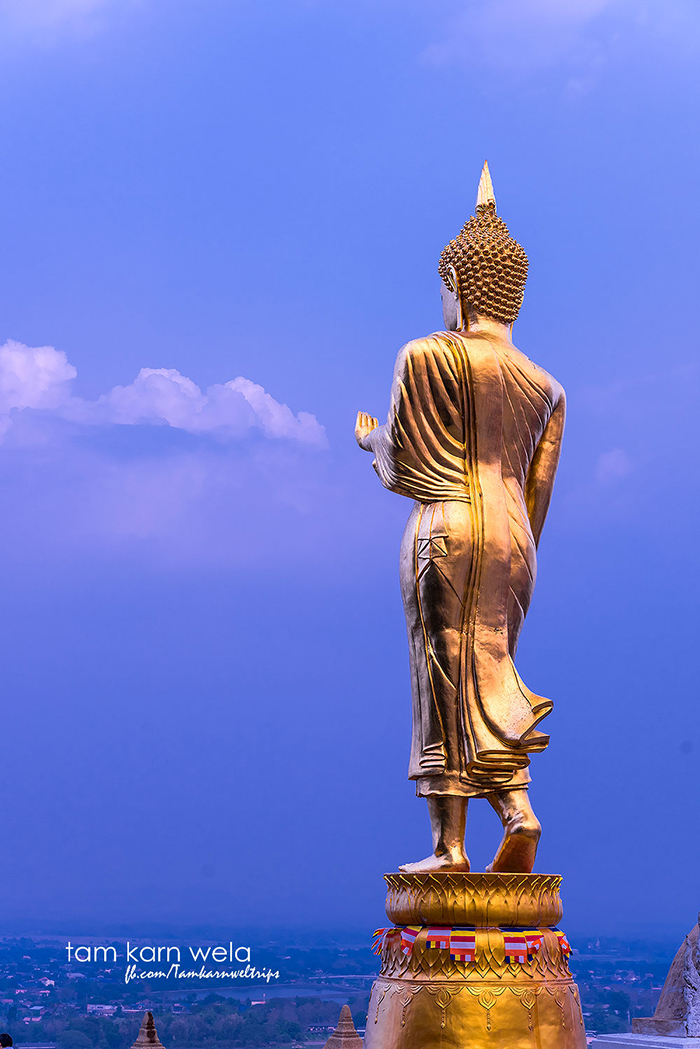
Amazing view with great atmosphere.
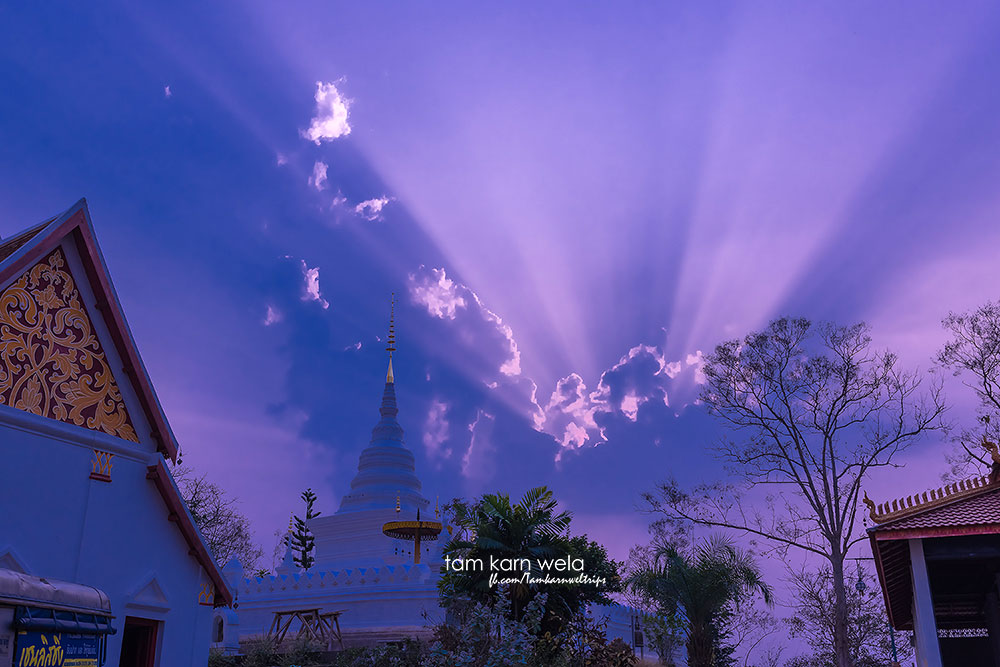
I feel so thankful that once in my life I have got a chance to be here wandering around and visiting many beautiful and rich in history temples.
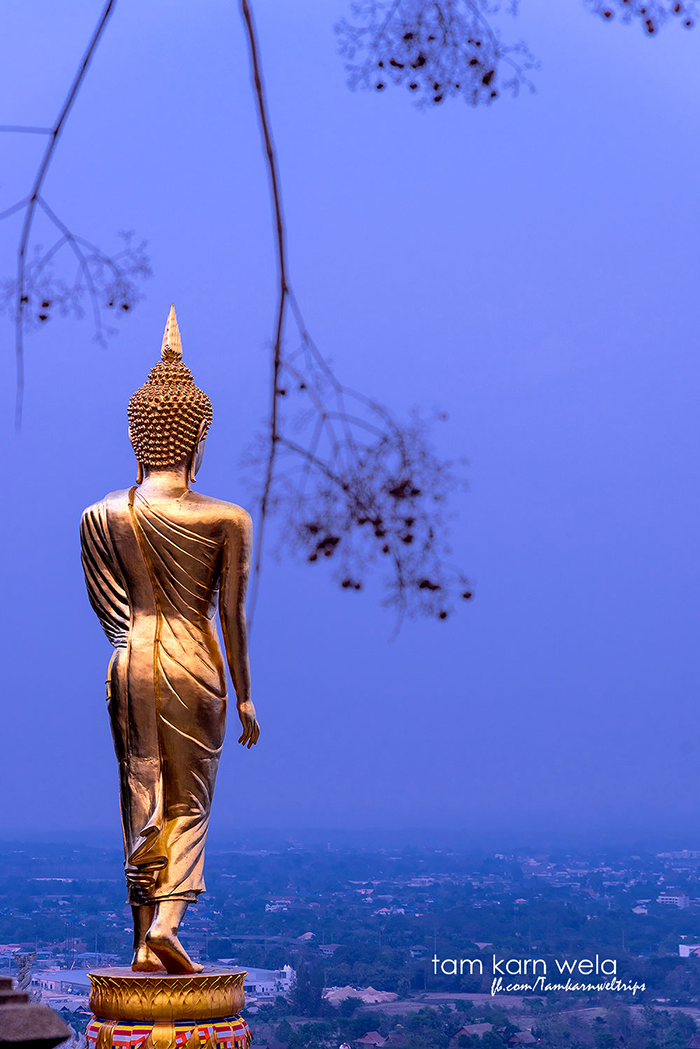
There is a wide range of accommodations owned by locals in Downtown Nan and we choose to stay at Phuhunsa Boutique Hotel for this trip.
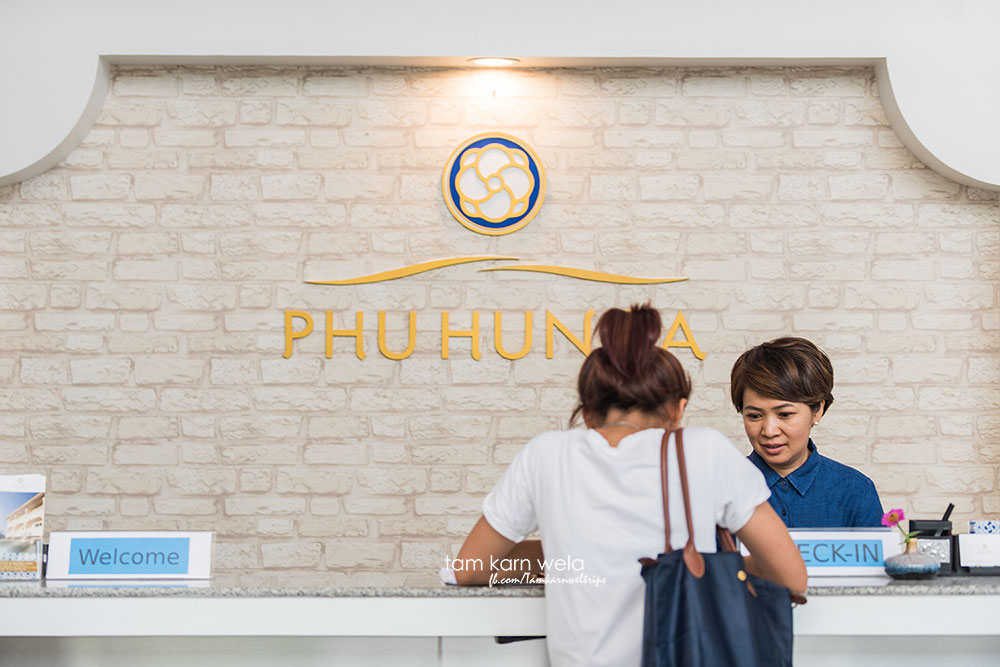
Phuhunsa Boutique Hotel is a small Colonial-style hotel.
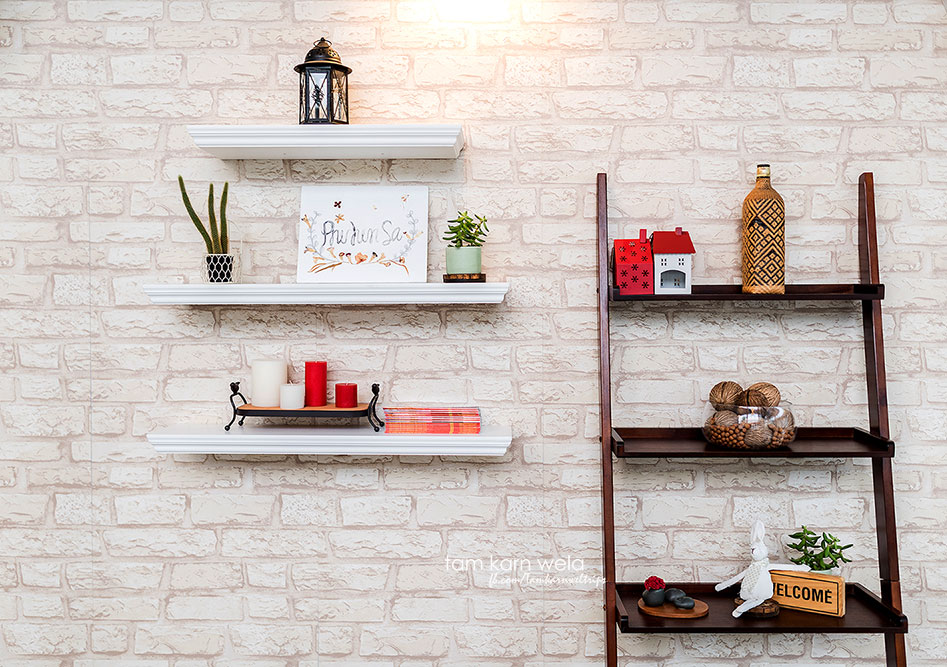
It's a 3-storey building and the price is range from 1,400 - 2,000 THB in low season.
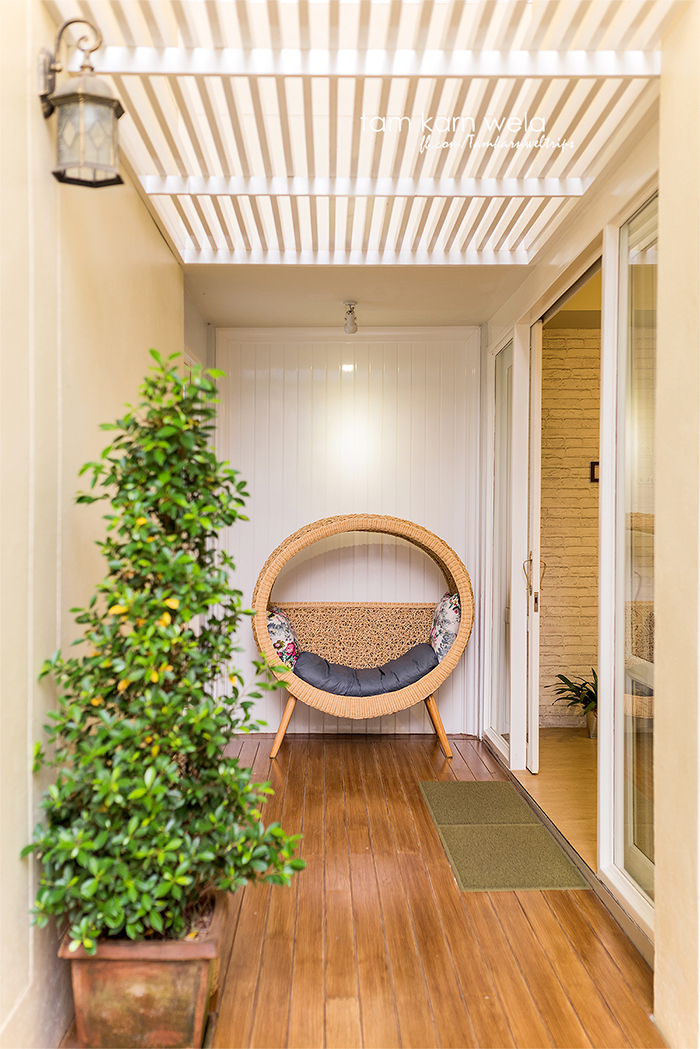
Oh no! This swimming pool is so tempting especially on a hot day like this but sadly that I forget to bring my swimming suit.

The hotel is totally new and clean.
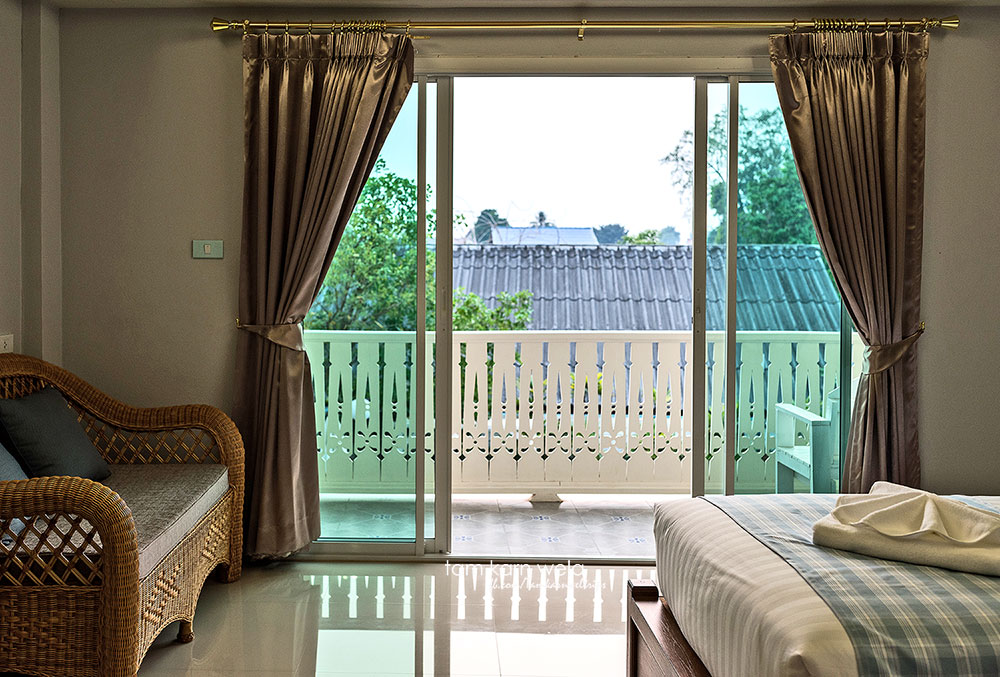
The hotel was just opened not long ago.

This room is on the lower floor and you can access to the pool directly.
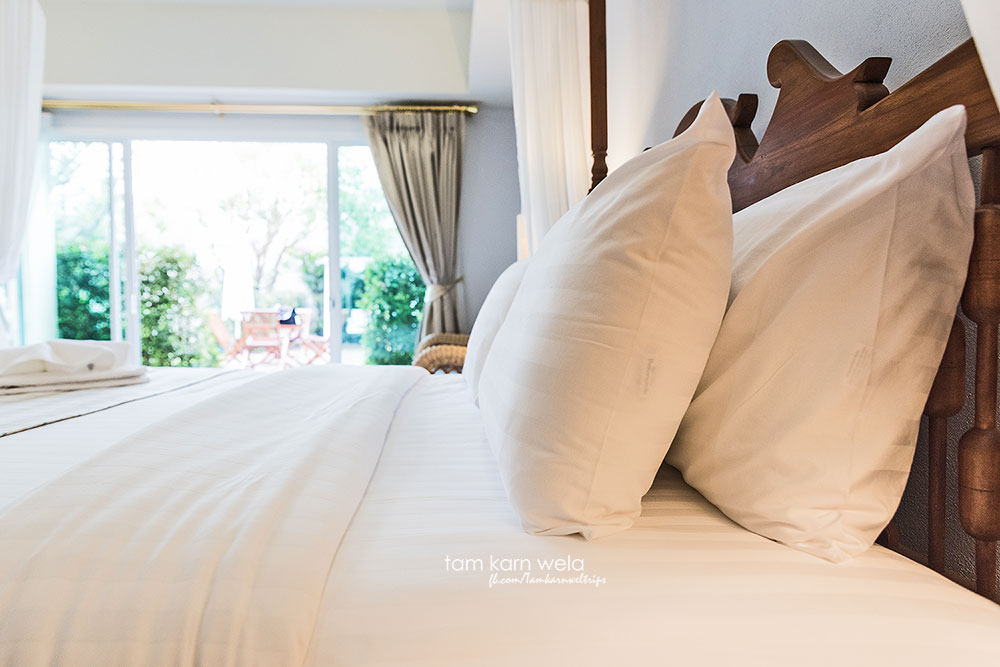
This pool access room is a bit more expensive than the room on the upper floor though.
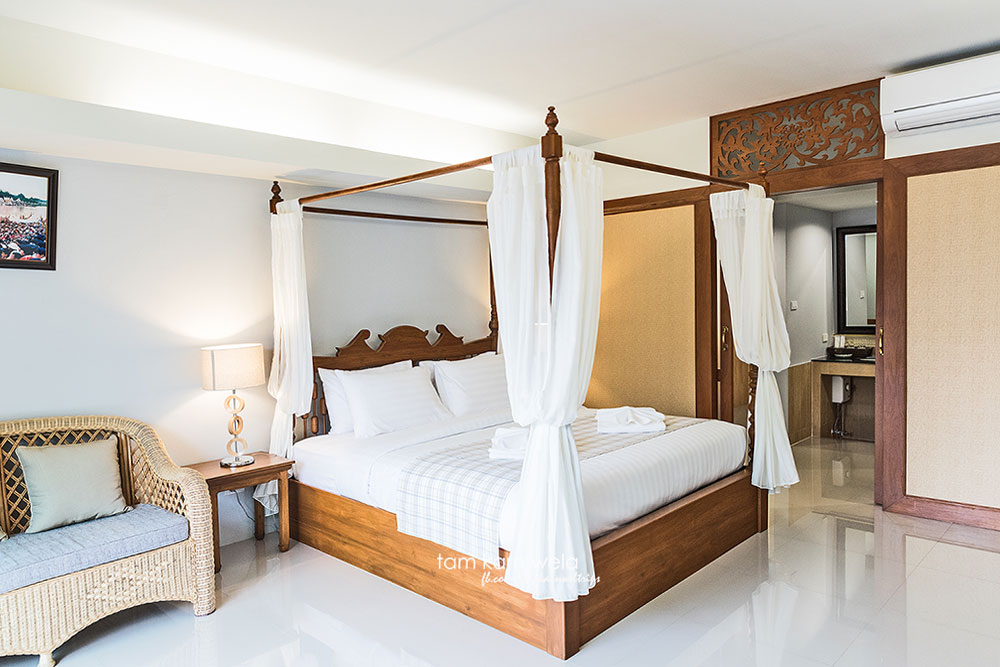
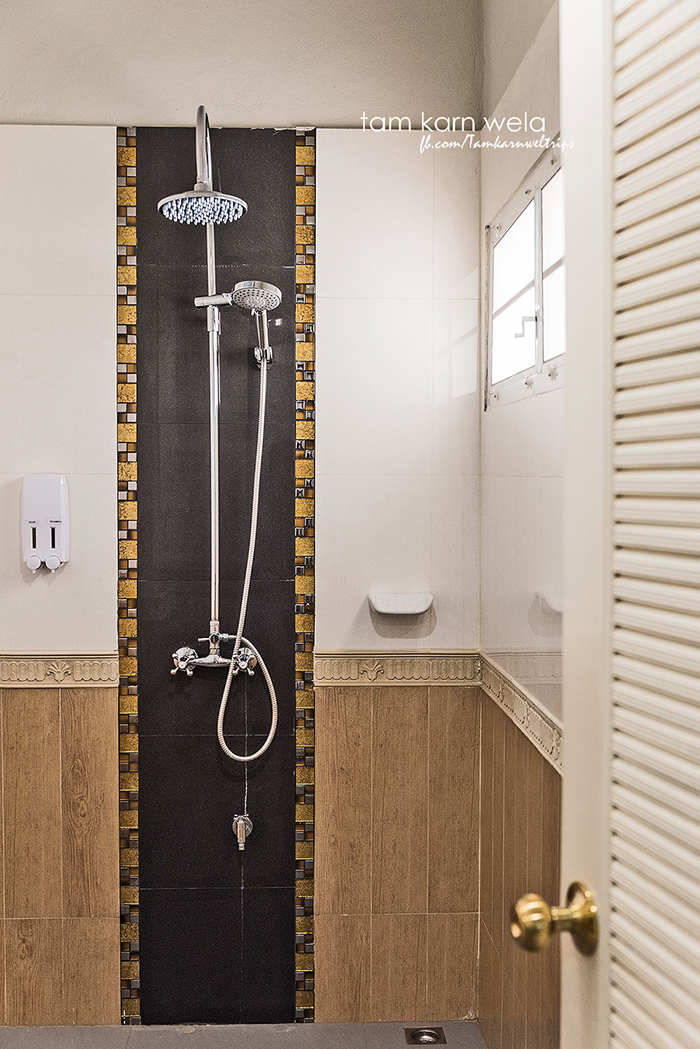
The breakfast.
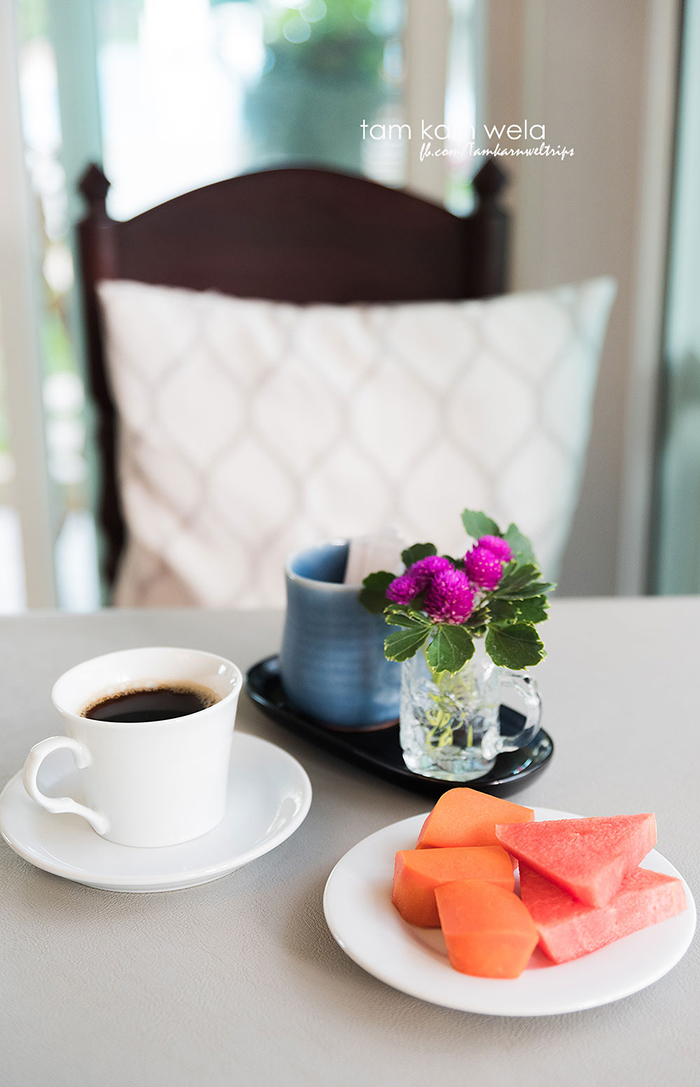
They grow their own vegetable so the salad is super fresh and tasty.
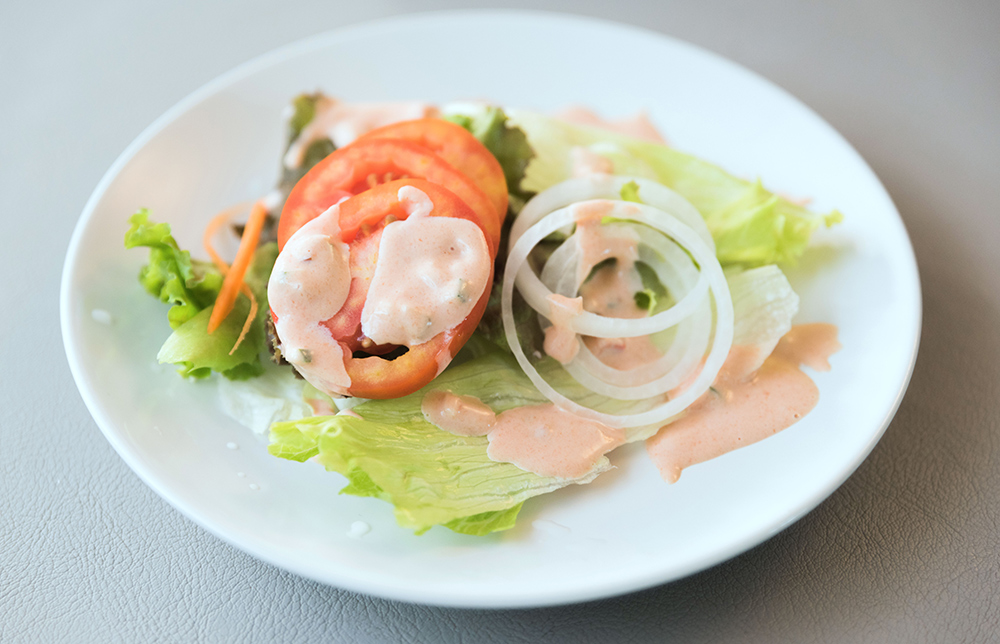
There is a bike provided by the hotel and I would recommend you to ride it to the local market in the morning to join offering food to the monks' ritual. After the morning activity, we have got a lot of local food from the market.
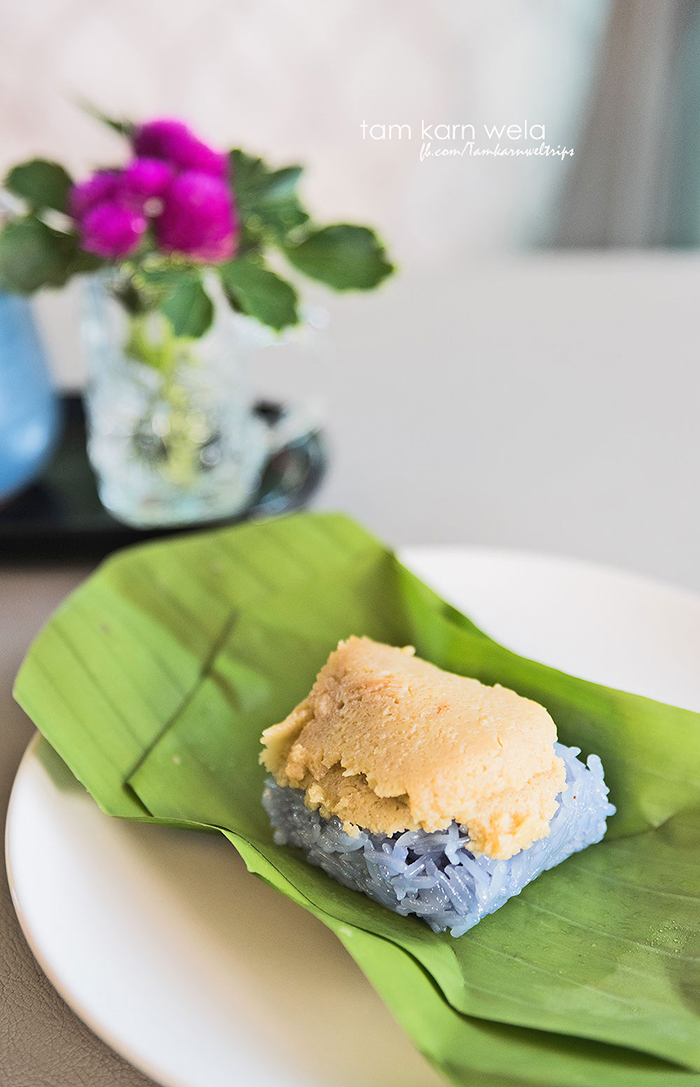
We are totally enjoyed the slow life here in Nan.
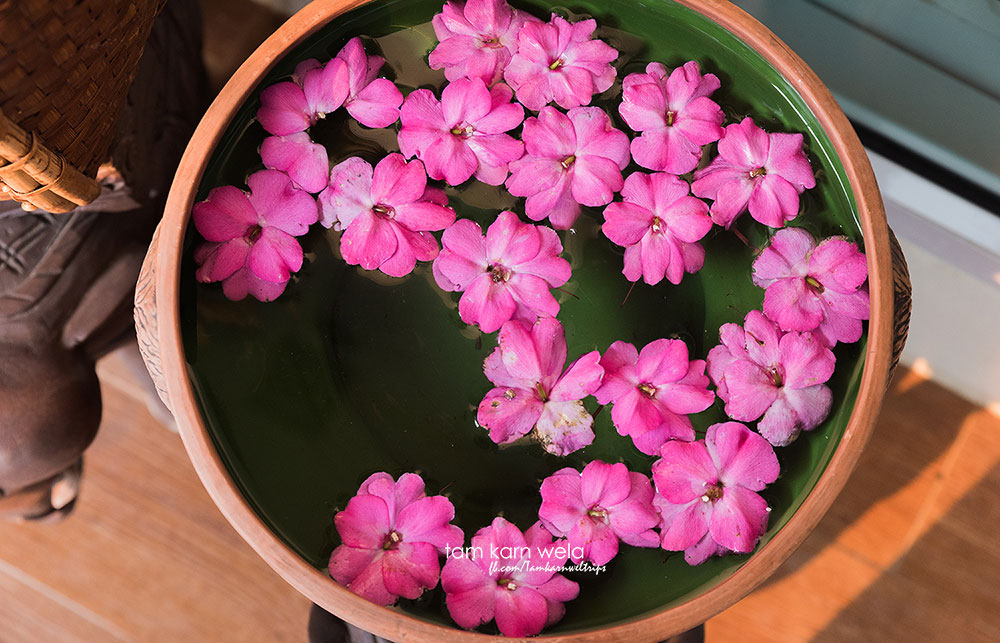
If I have a chance, I will be back.
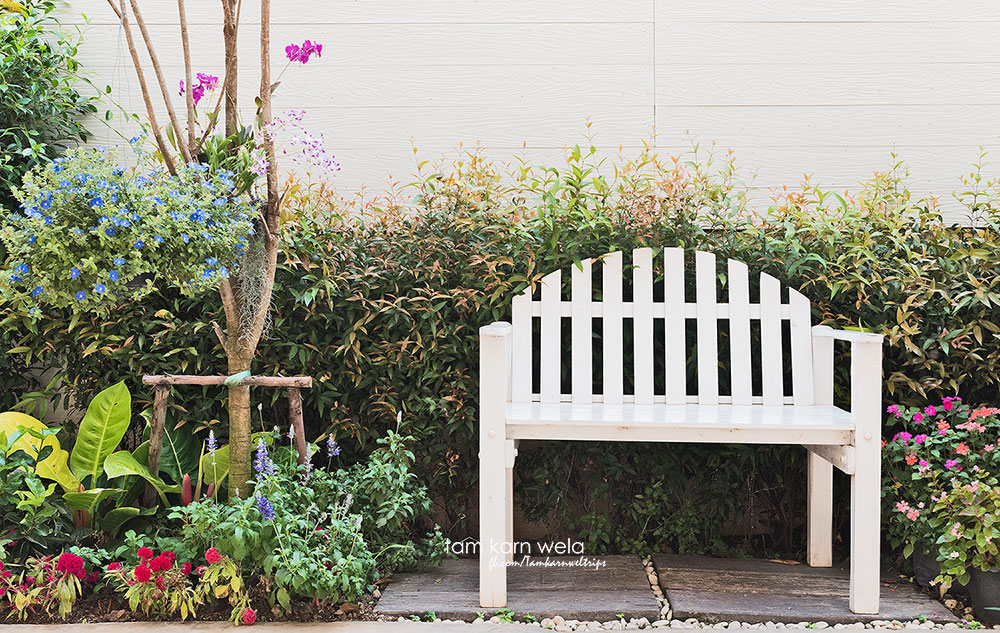
We also have a long list for the activity today and it seems like two days here are not enough.
Our first stop is the tea plantation at Sri Naparn village, Muang District.
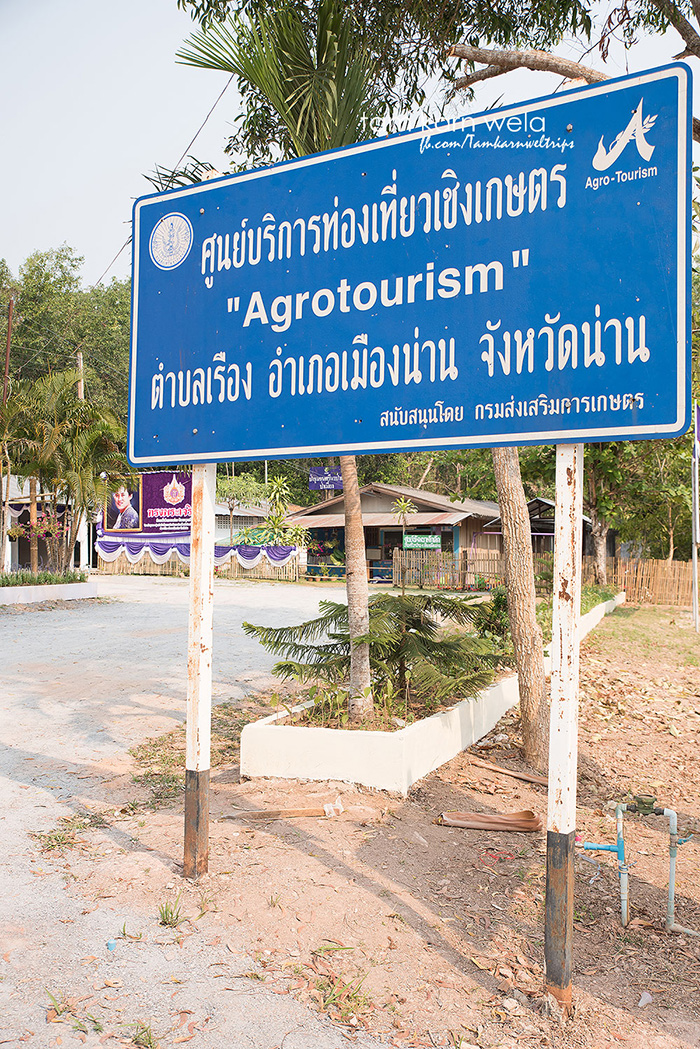
We expect to see a nice tea terrace as same as the famous Choui Fong tea plantation in Chaing Rai but it is not like that.

Princess Maha Chakri Sirindhorn came here in February but did not really going further inside like we do because she was sick.
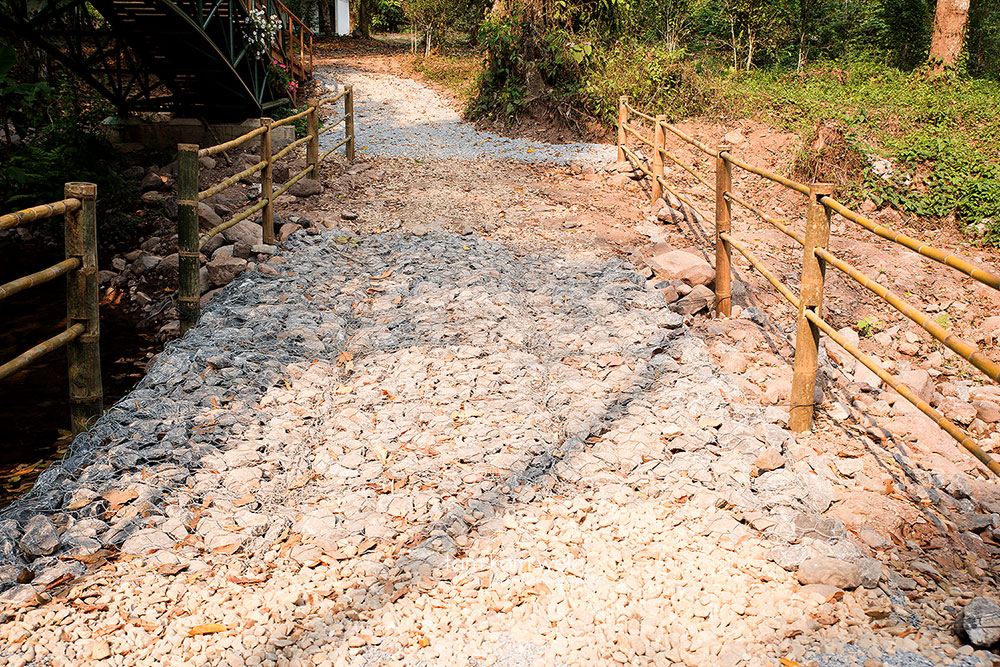
This tea plantation is a house of black tea similar to Assam tea species called Miang tea and it is one of the biggest tea plantations for this kind of tea in Thailand. People from here had immigrated from Sib Song Panna in Yunnan province in the Southern part of China for more than 400 years. The locals have worked on their tea plantation for ages that is the reason why they have such a strong bond with the tea. Moreover, they eat fermented Miang tea leaves as a snack after the meal even though it is hard to find people who still eat nowadays .
...Since the fermented Miang tea leaves is not popular anymore, the locals have developed their tea products to be more in trends such as black tea and green tea. And now let's walk through the natural pathway!

This Miang tea grows in the forest and they grow well under the shade of all big tall trees.
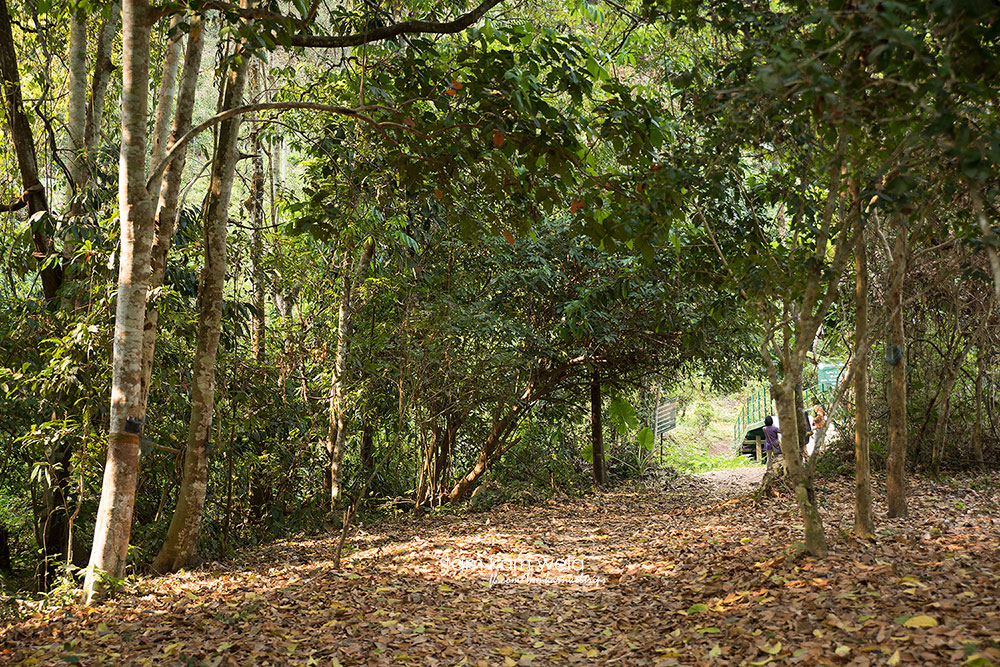
The owner of the farm knows his boarder by heart that is the reason why there is no need to build any fences to indicate the land.

All the locals love their forest very much because they know exactly how much it means to them so they avoid to use any chemical substance.
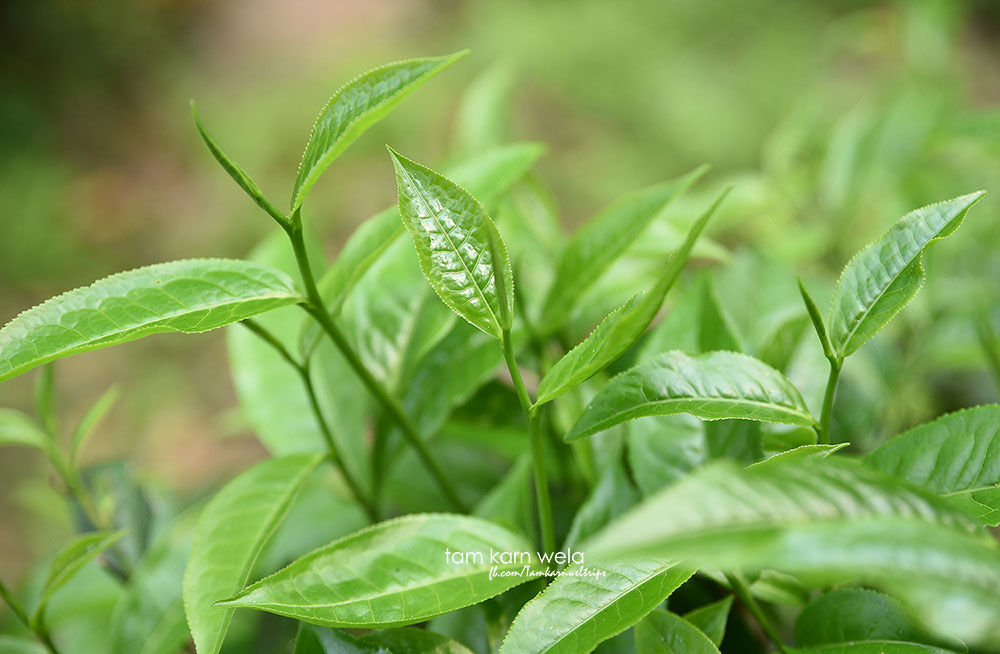
This is confirmed to be a 400-year-old tea tree.
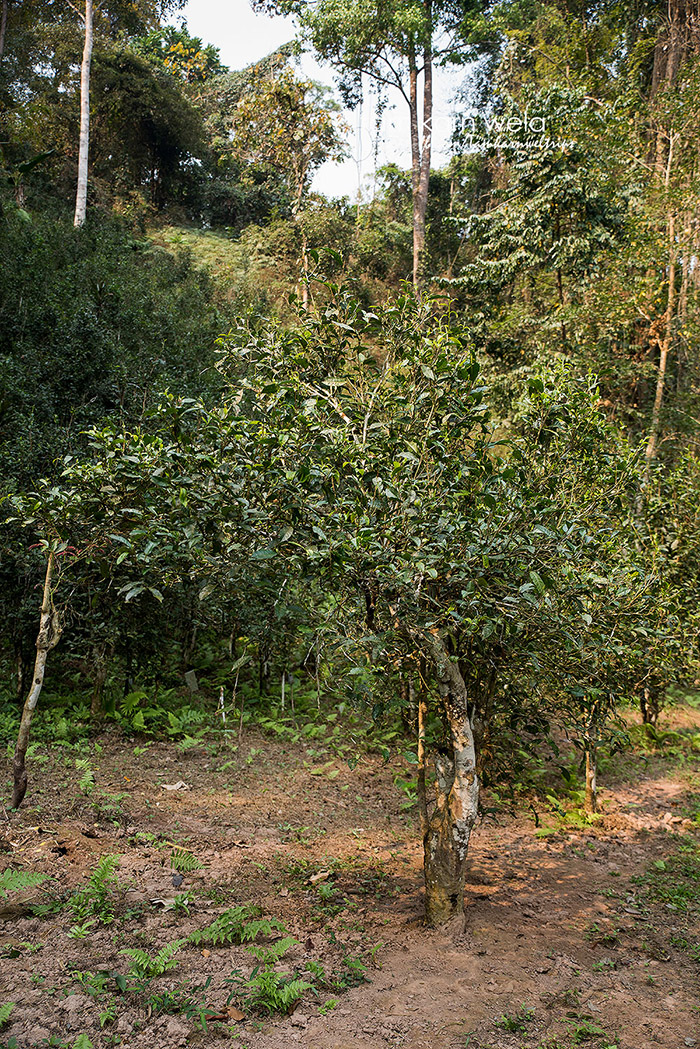
Tea flower, I have never seen it before.

Hai is a tree that grows by living with another big tree. Once it grows well and big, it will kill that living tree in order to live. However, it feeds birds and other animals with its fruits.
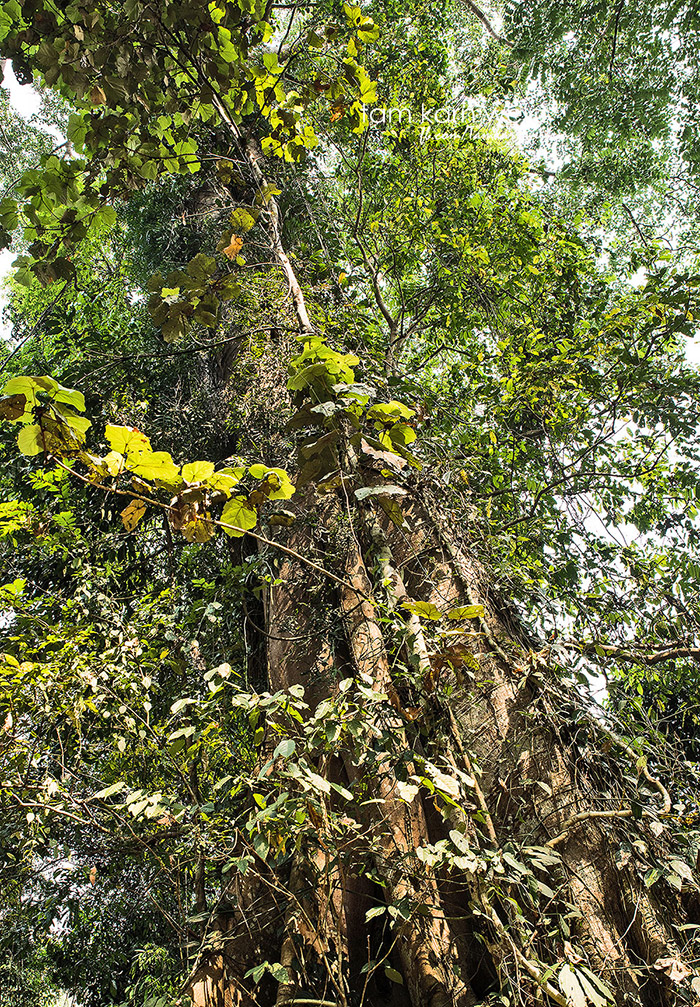
This one is 500 years old.
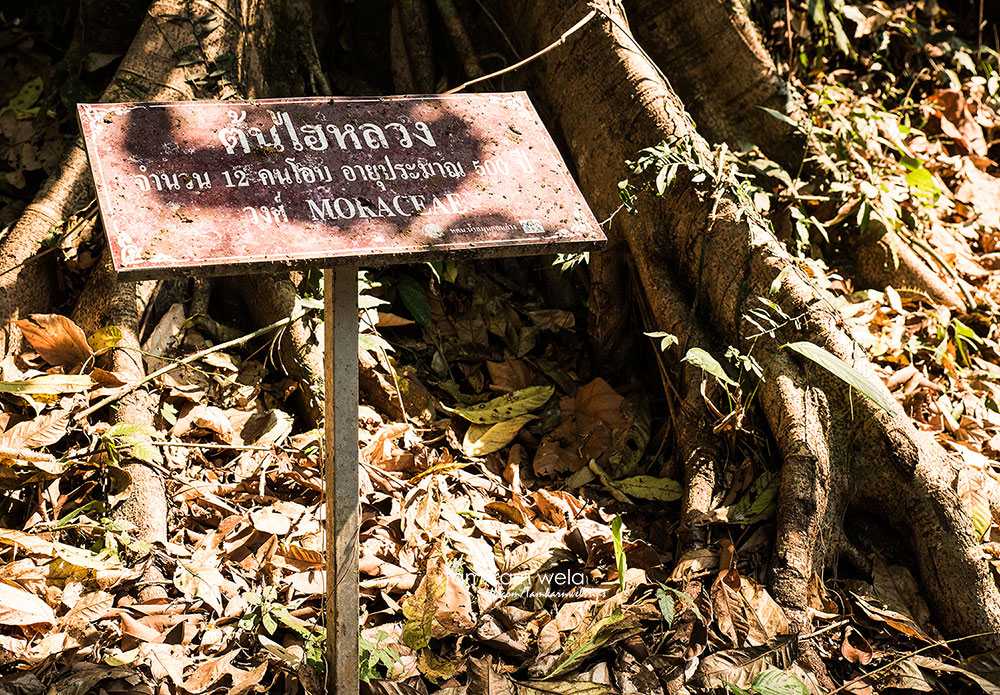
Natural life.
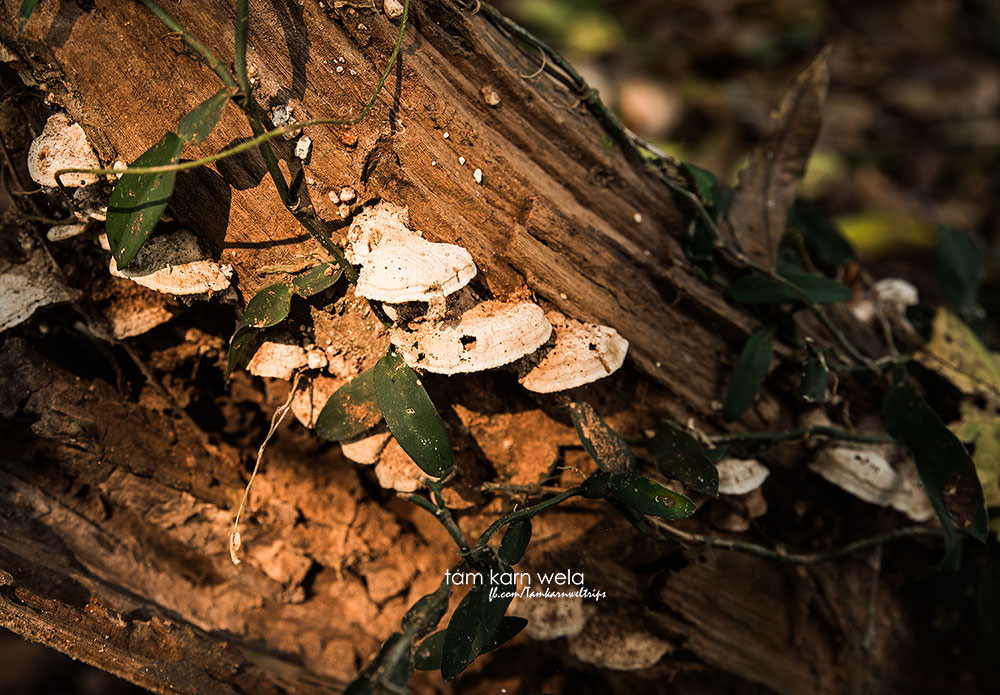
We don't miss to try this local product, Tea Phanaa.
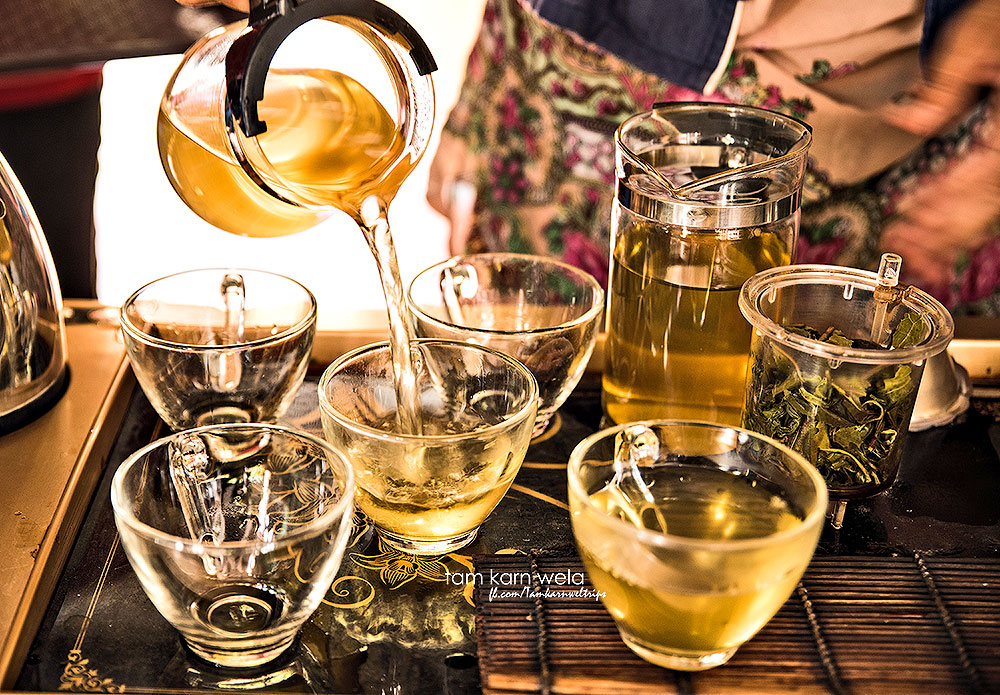
This is a 100% organic tea so it offer higher anti-oxidant than any other tea.
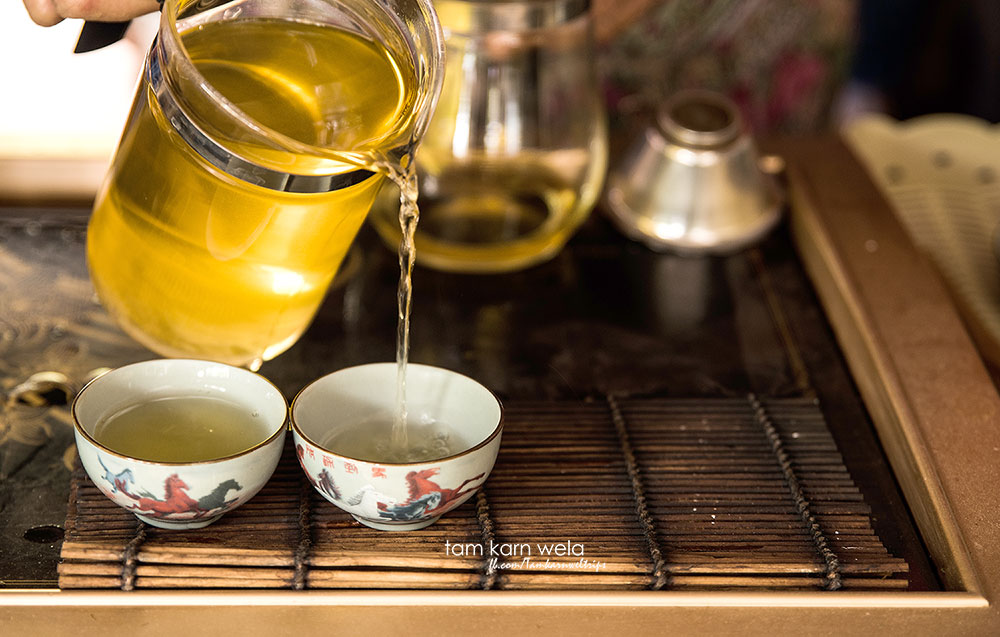
This tea Phanaa is available to buy at Phufa shop.

Fried tea leave.

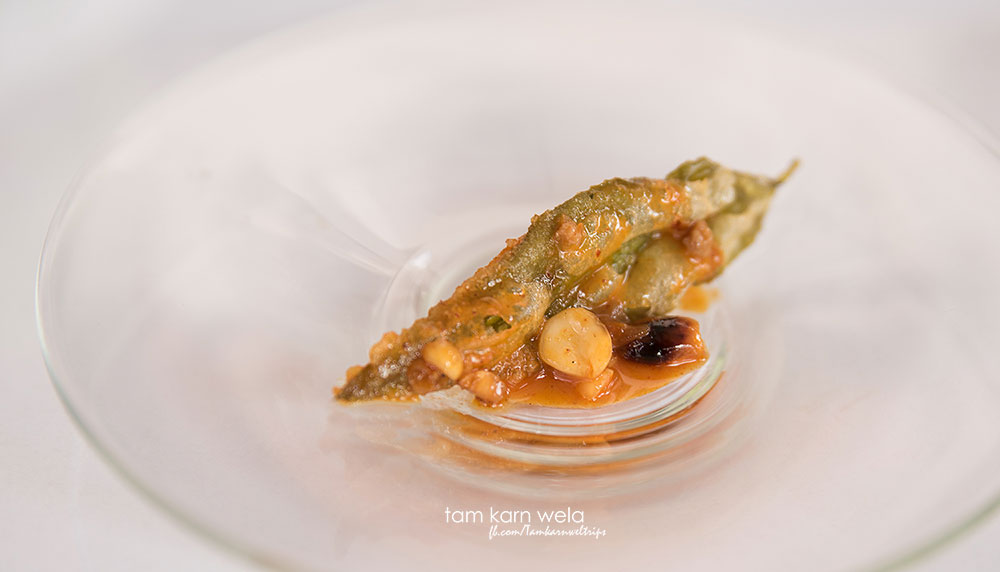
Tea leave salad.

You can even buy tea leaf pillow here.
Lastly, I would like to thanks to Sri Naparn village where have given us a chance to experience a local lives.
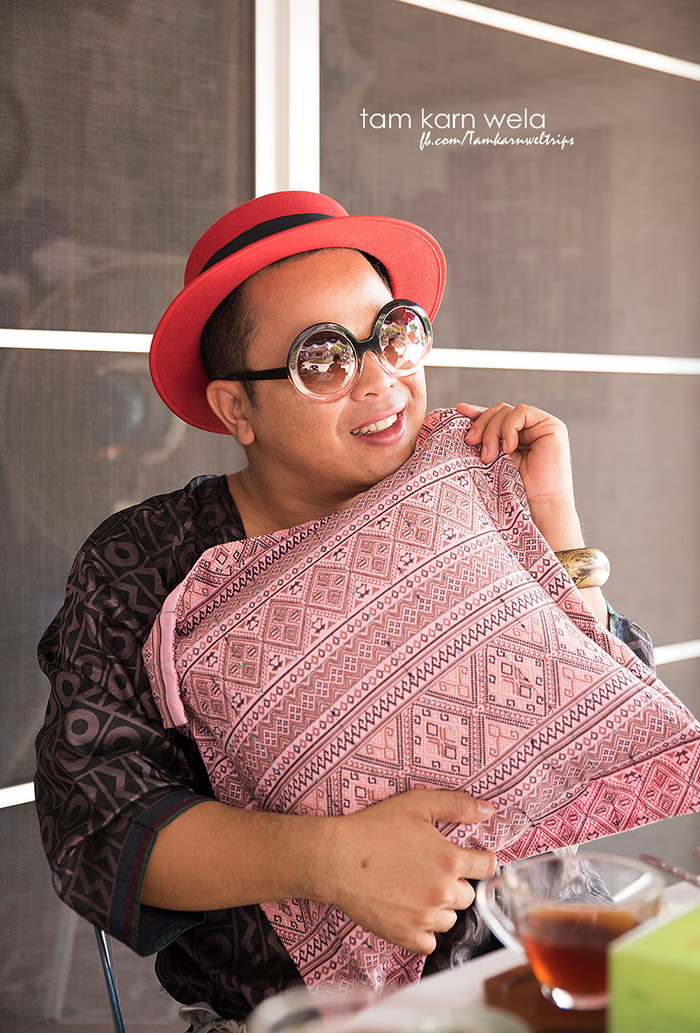
Wat Phra That Chae Haeng is our last temple to be visited on this trip.
Phra That Chae Haeng is the town's most important pagoda and well respected among locals. It is about 2 kilometers from Downtown Nan on Nan - Mae Charim Road. It is presumed to be around 600 years old. The pagoda is 55.5 meter-high and 22.5 meter-wide on the square base. The whole pagoda is skinned by brass. This Phra That Chae Haeng is famous for being one of the most beautiful pagodas in Lanna Kingdom as well.
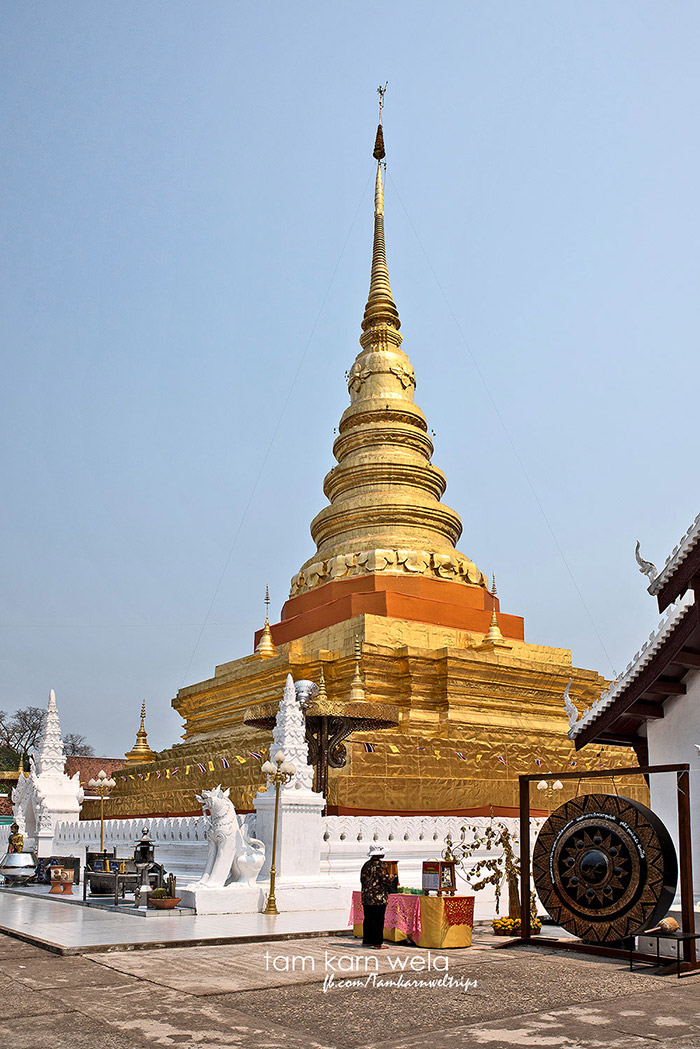
According to Nan Chronicle, Chao Phraya Karnmuang intended to build this pagoda to house a relic of the Buddha taken from Sukhothai between 1348 - 1358.
The structure in front of the main hall is in local architectural style and it shows well the skill of the local artists.

The replica of the Shwedagon in Yangon which is patron for Horse years.
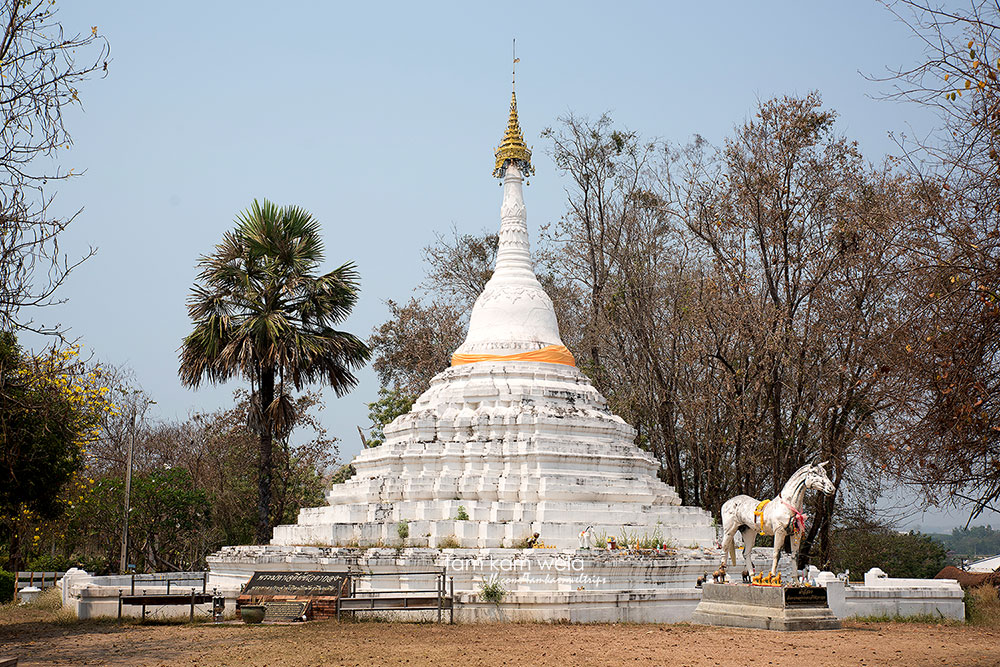
The exorcising ceremony.
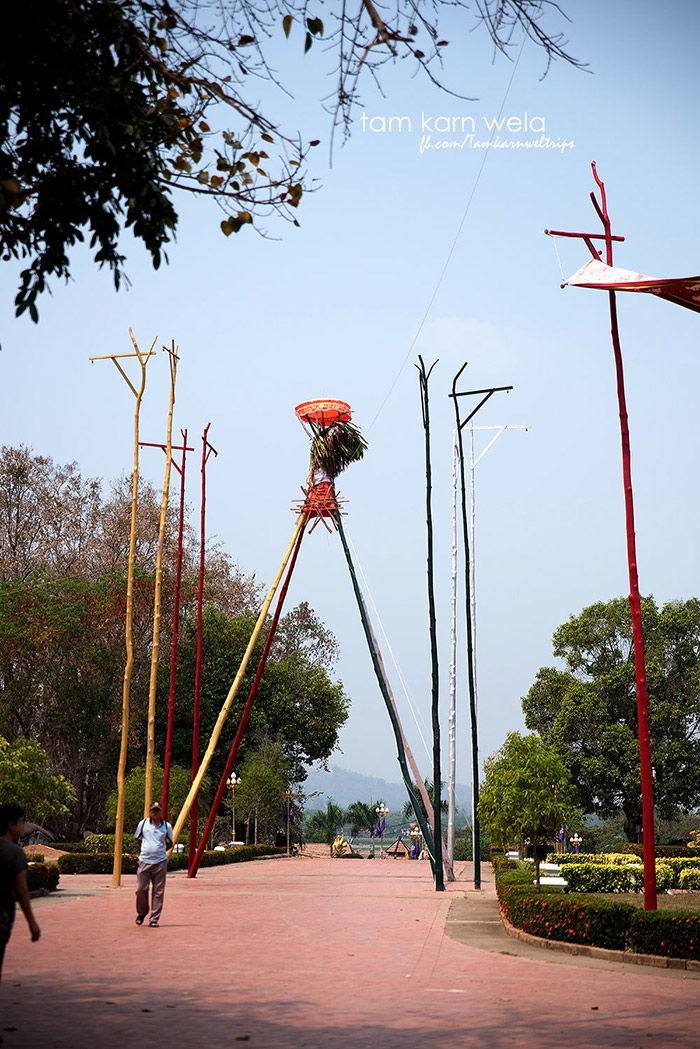
This thick cotton thread is used in many exorcising ceremony especially in the Northern part of Thailand. And the exorcising ritual has been done from generation to generation with the belief that you be blessed and protected from harm and evil.
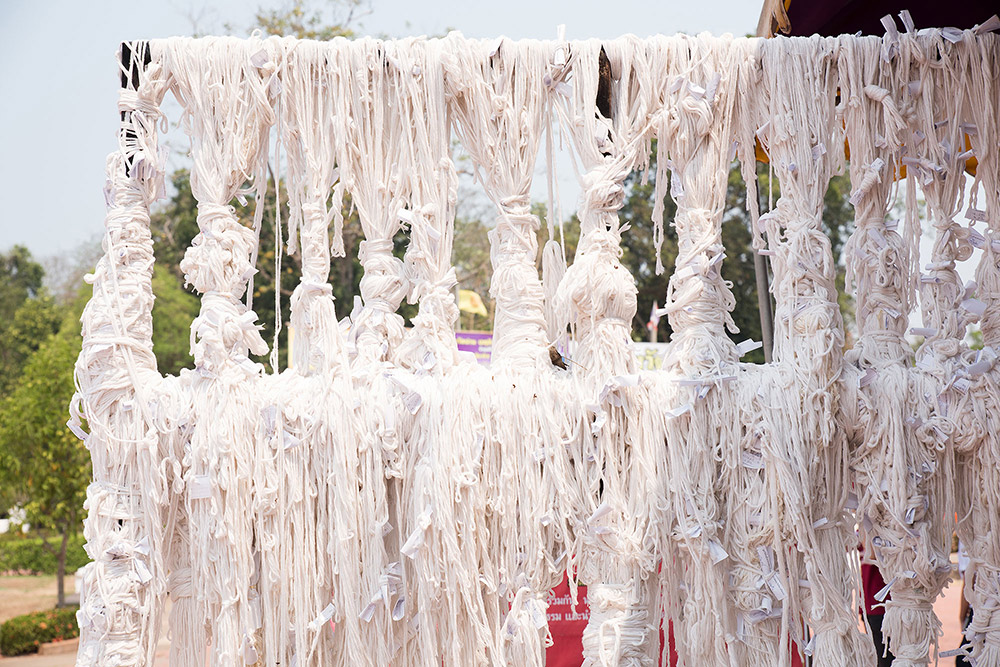
There is also a viharn that contains a large Reclining Buddha image located outside the walled courtyard with the entrance door in the south.
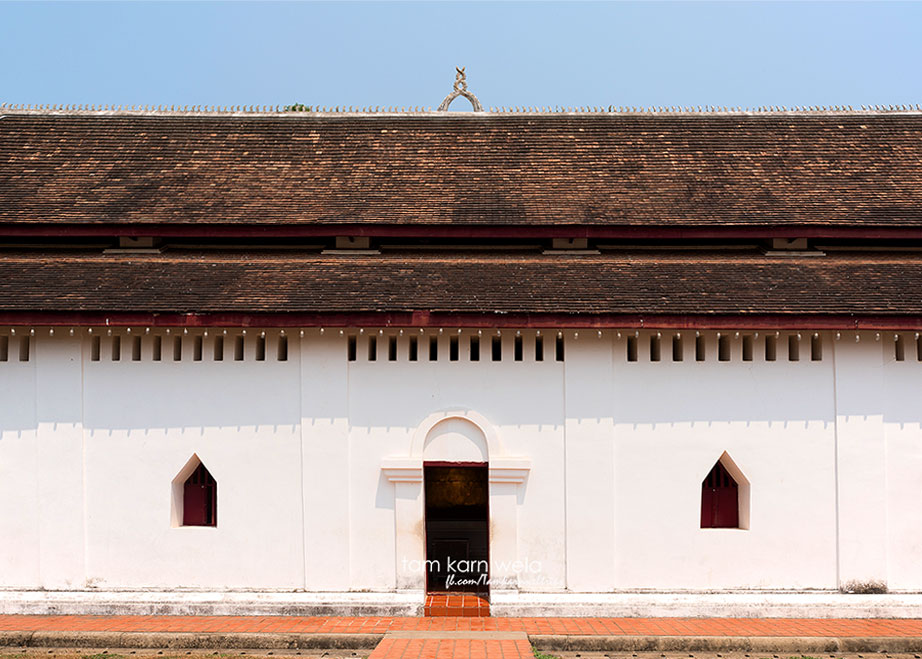
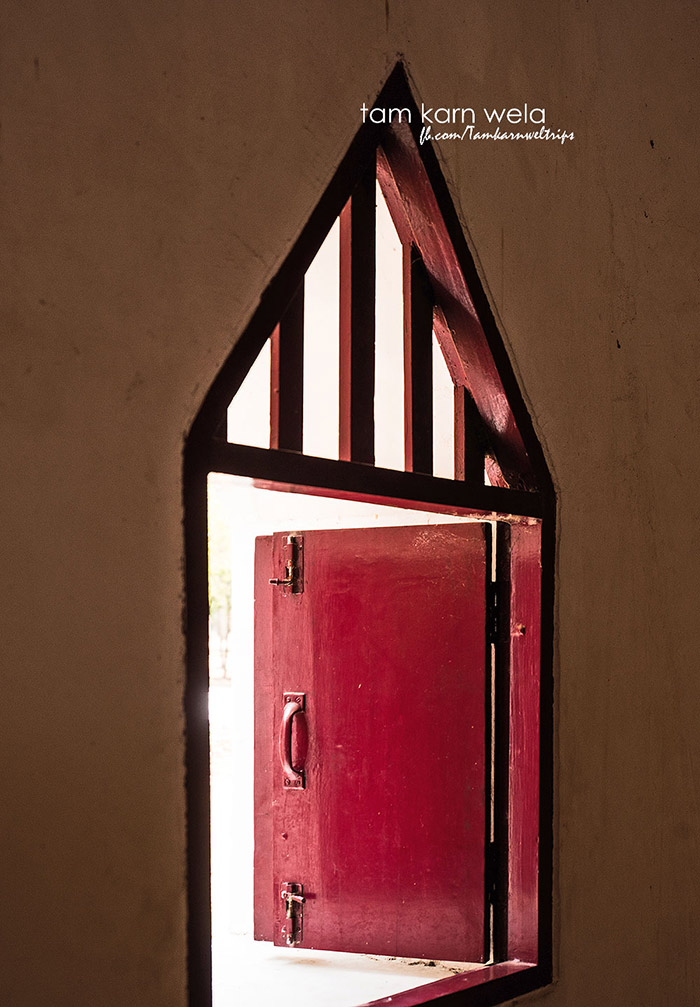

This is similar to Wat Pho (Wat Phra Chetuphon) in Bangkok.
This is the spot that I would like to come and visit, the old wall of Nan where it is also a house of Market Walking Street but sadly that we are not here at the right time.
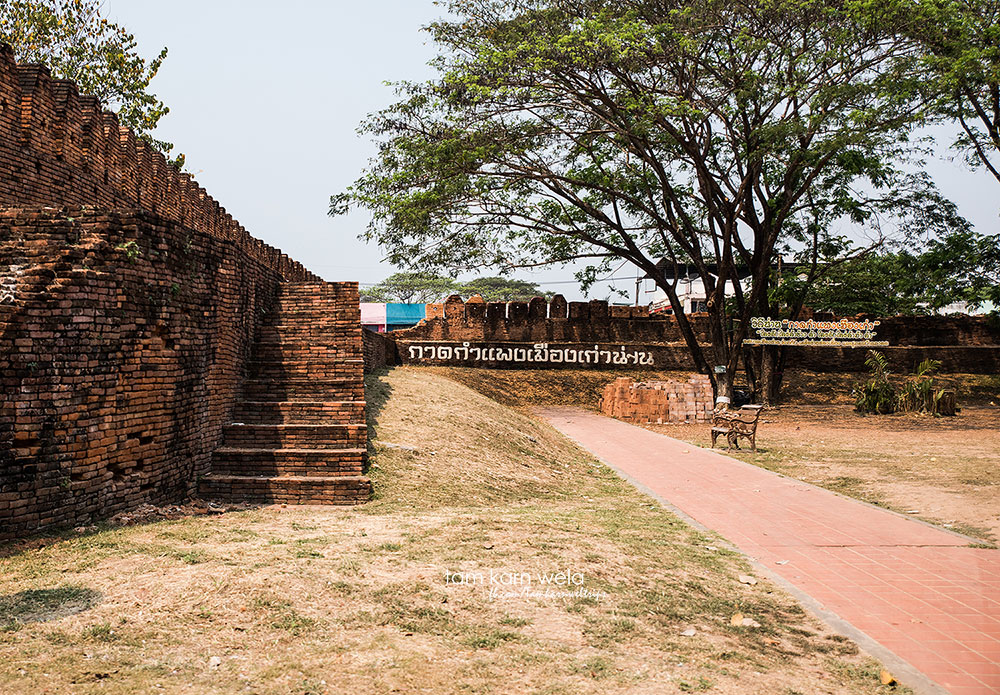
We don't have enough time to stop by the famous noodle restaurant " Rai Tiem Tarn" either so I guess if I ever have a chance to come back I won't miss it.
It is very easy to spot the restaurant because it is located in front of Sri Serm school. It is opened from 10 AM to 9 PM everyday.

Tom Yum-style noodle with huge piece of pork bone.
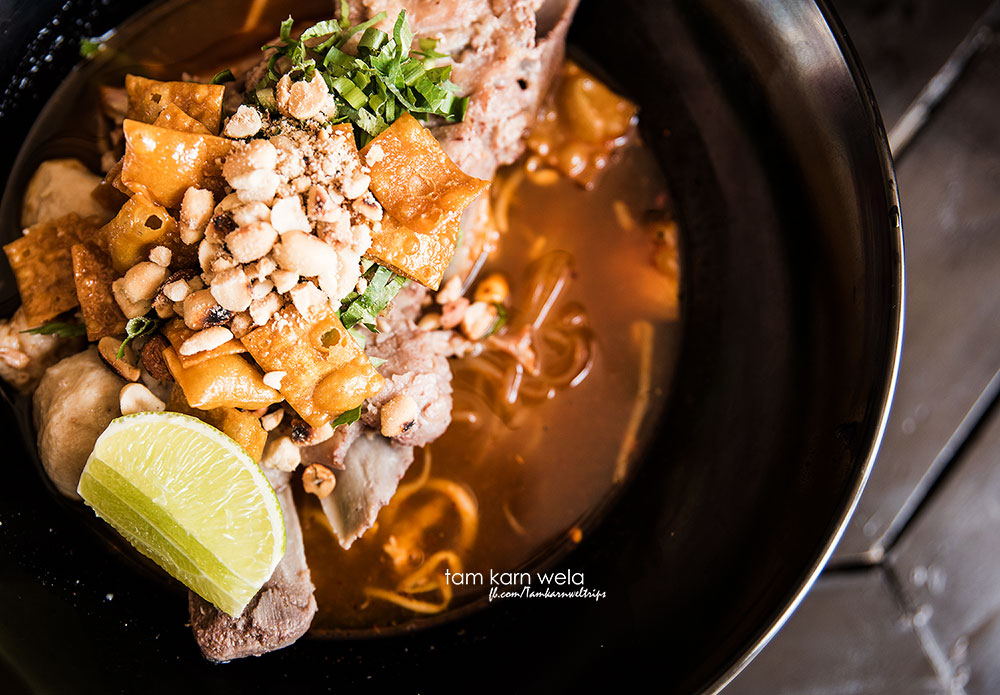
It is 50 THB.
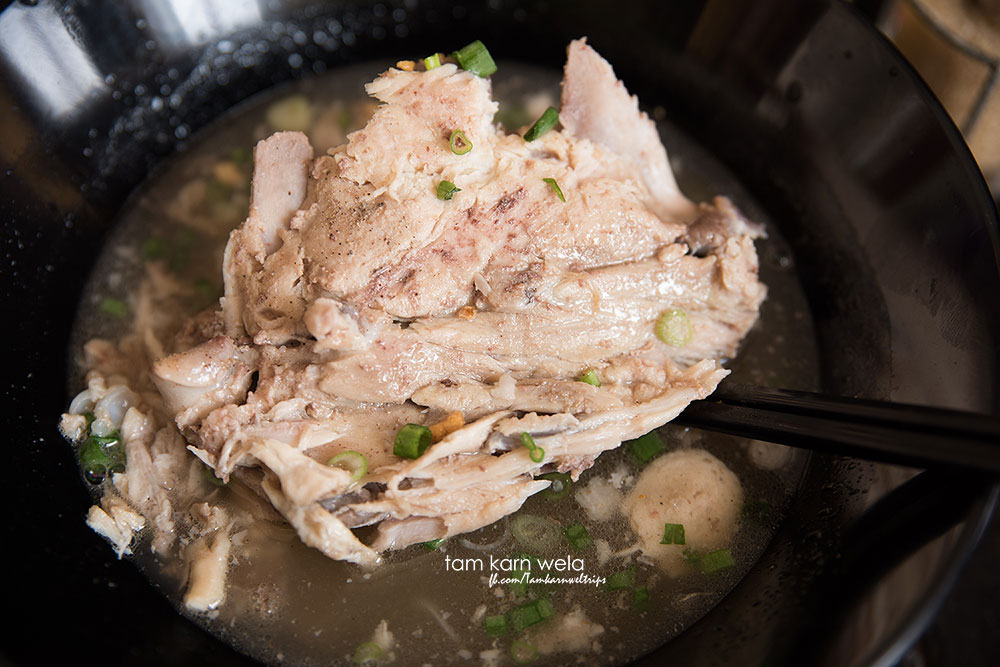
And our last stop for this trip which if we don't go, this trip wouldn't be completed is this Nan Riverside Art Gallery.
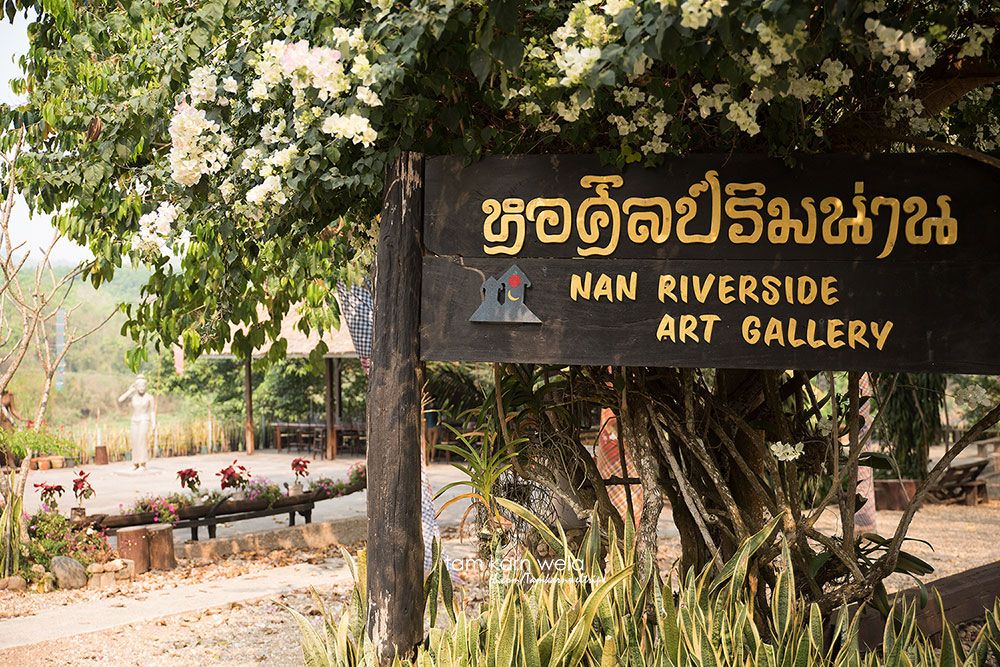
Nan Riverside Art Gallery found by the famous local artist, Winai Prabribu. It covers over 33 acres located by Nan River. In addition, it is well connected with the highway (kilometer marker 20th) and is about 20 kilometers from Downtown Nan.
Nan Riverside Art Gallery is considered as the center that collects and assembles all local arts and culture. Mr. Winai Prabribu aims to have this place built in a beautiful and natural landscape in order to allow those who are coming to visit deeply enjoy their time here.
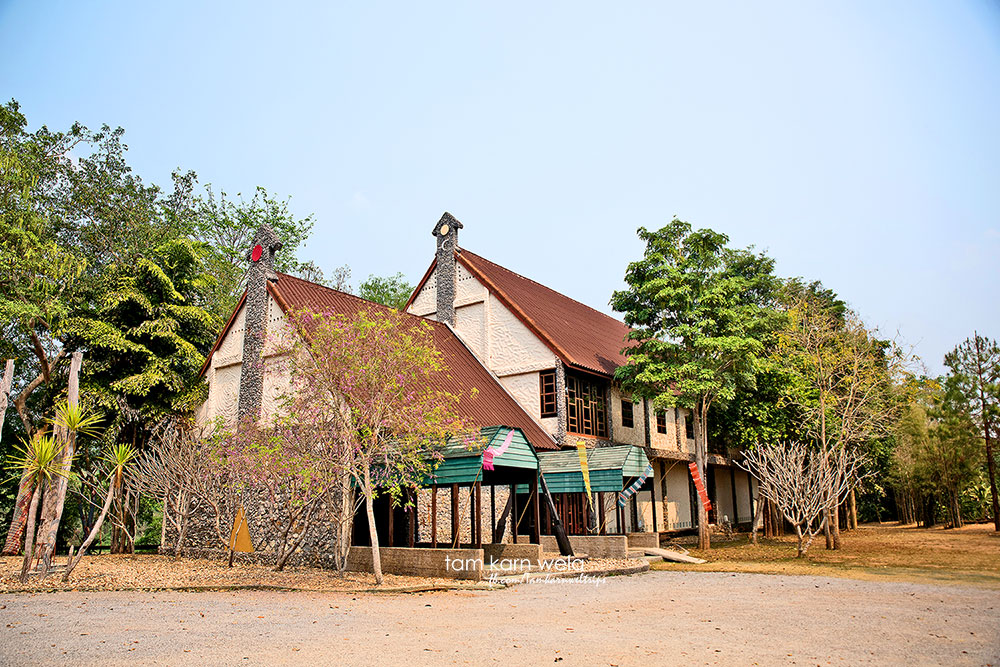
This place mainly exhibits artworks of Winai Prabribu plus an art exhibition of famous artists and artist in the Northern region which rotating to come and display their work here.
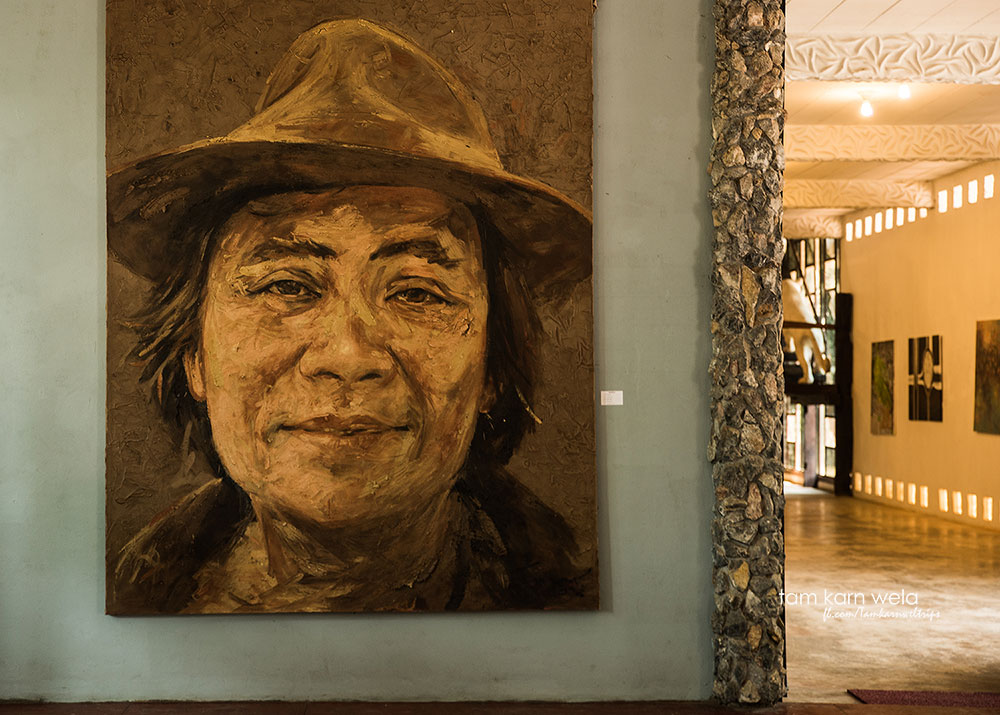
The artwork of the young artist.

Poo Marn Yar Marn in foreigner version.

This is Princess Maha Chakri Sirindhorn's artwork.
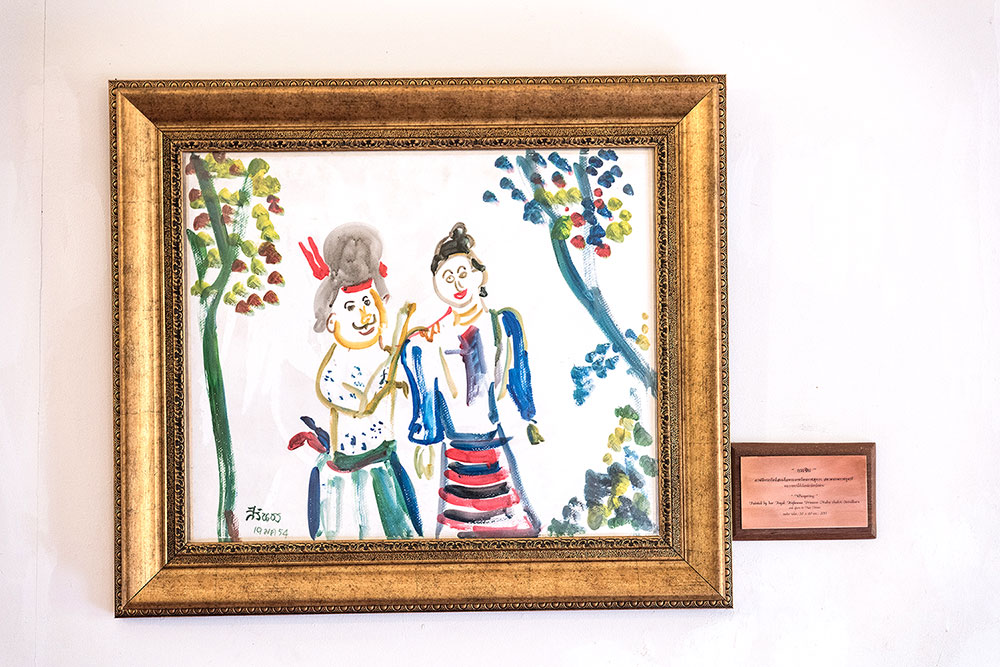
It is very refreshing here with the greenery surroundings. It is even a place for pre-wedding photo shooting.
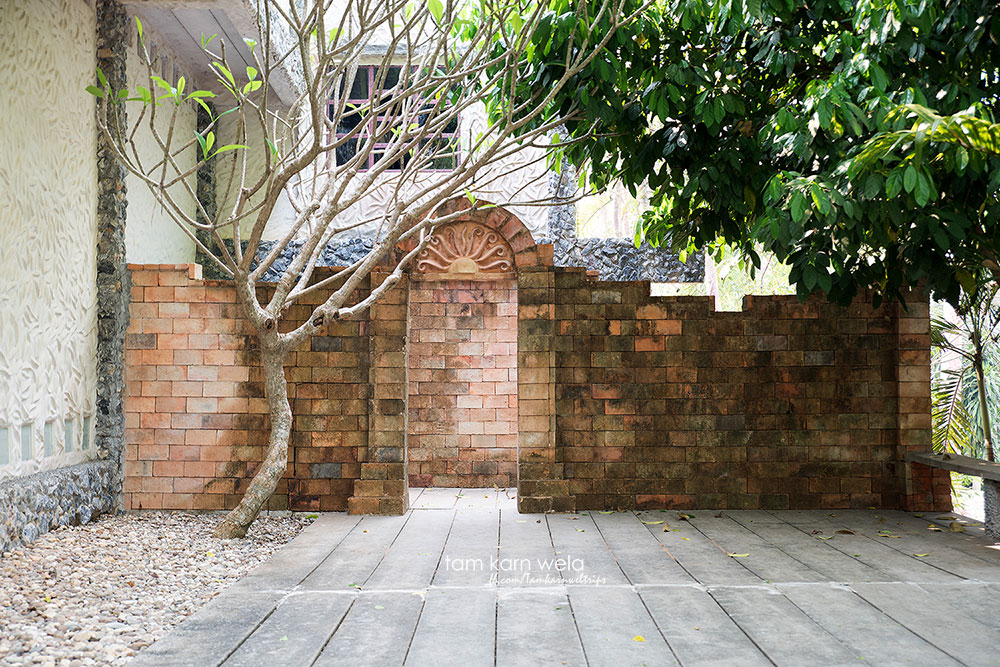
Café Sood Gong Dee in this art gallery is one of the most popular cafe in Nan located by Nan River. What makes this cafe so special would be the relaxing atmosphere by the river.
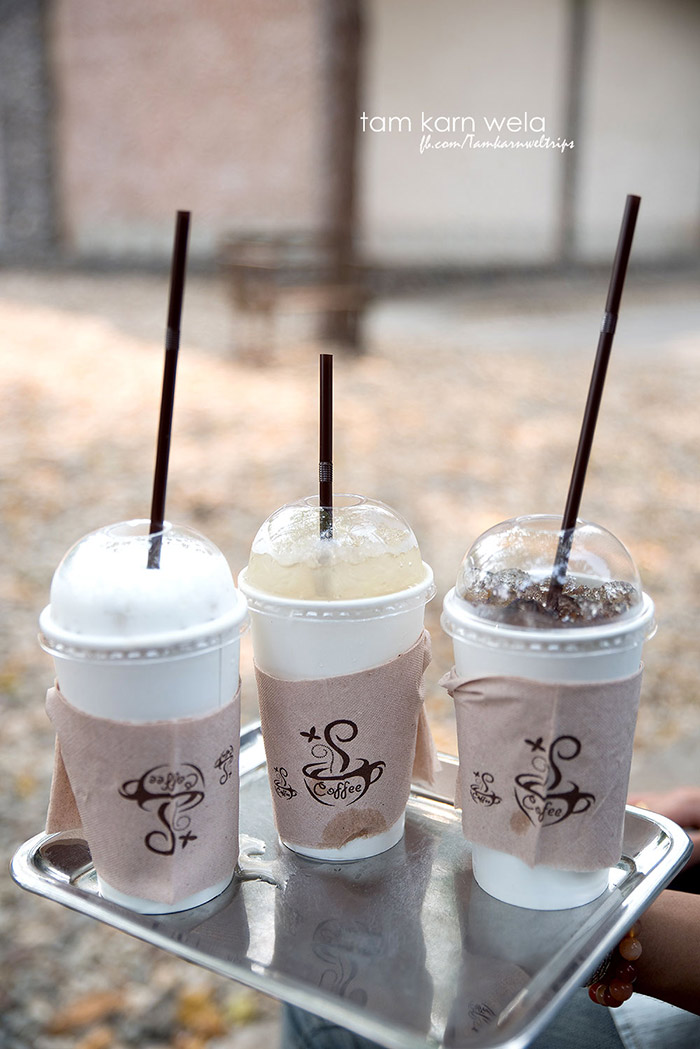
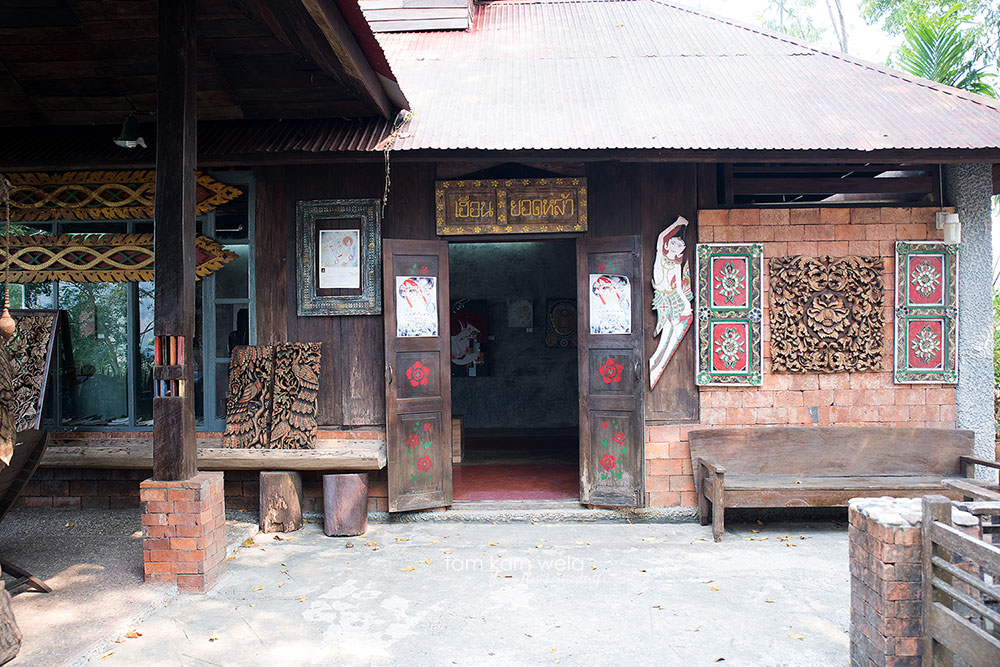
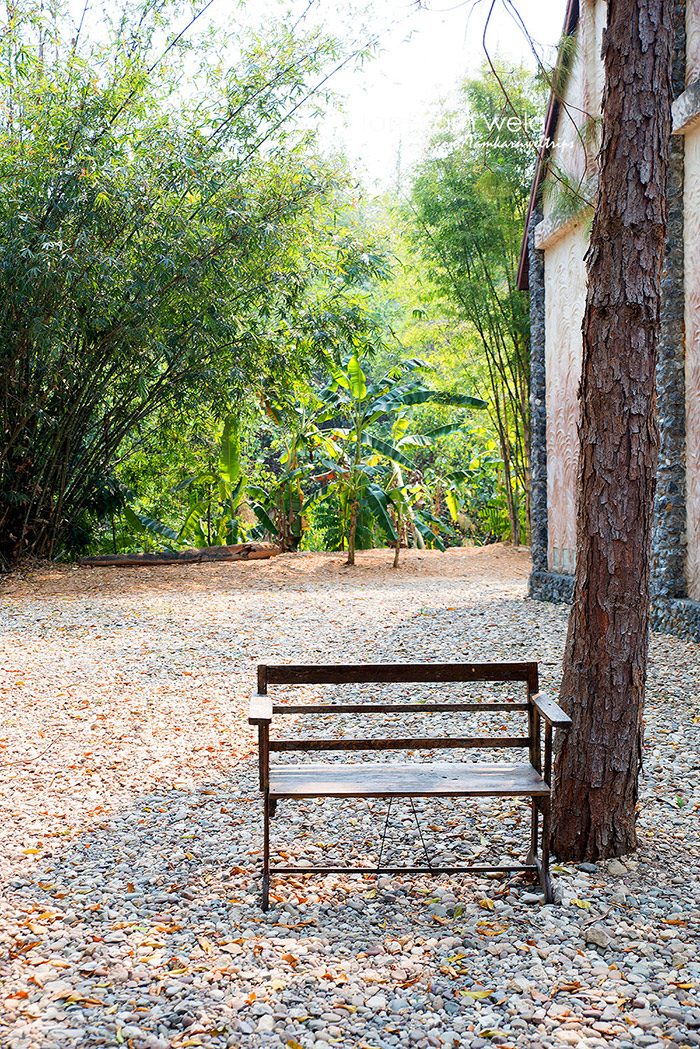
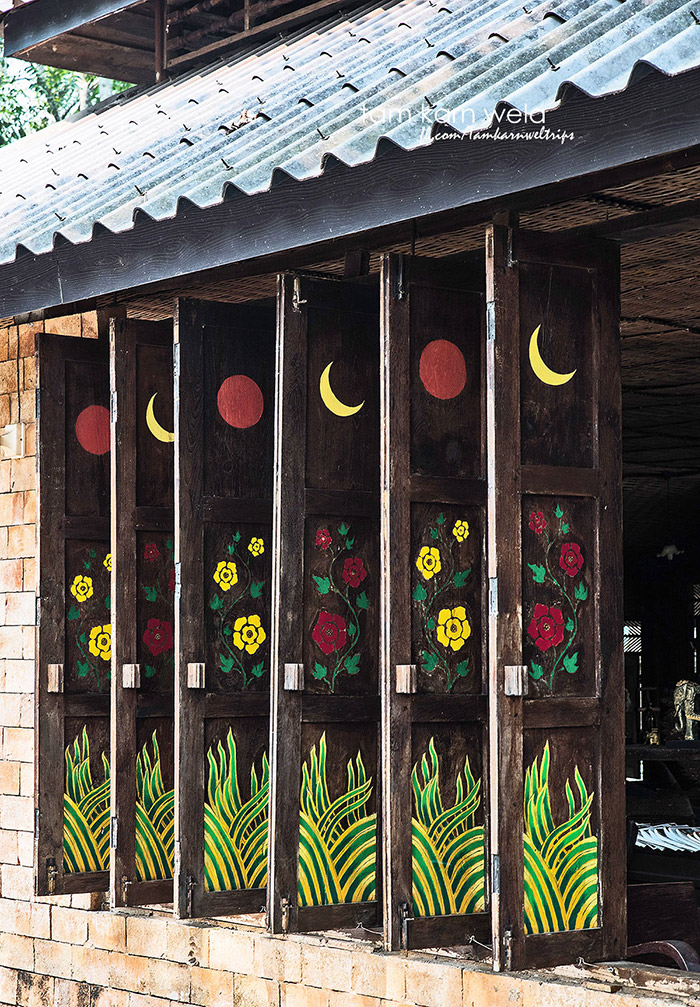
Thanks to Ajarn Winai Prabribu who has created this great little space in this great province ...Nan.
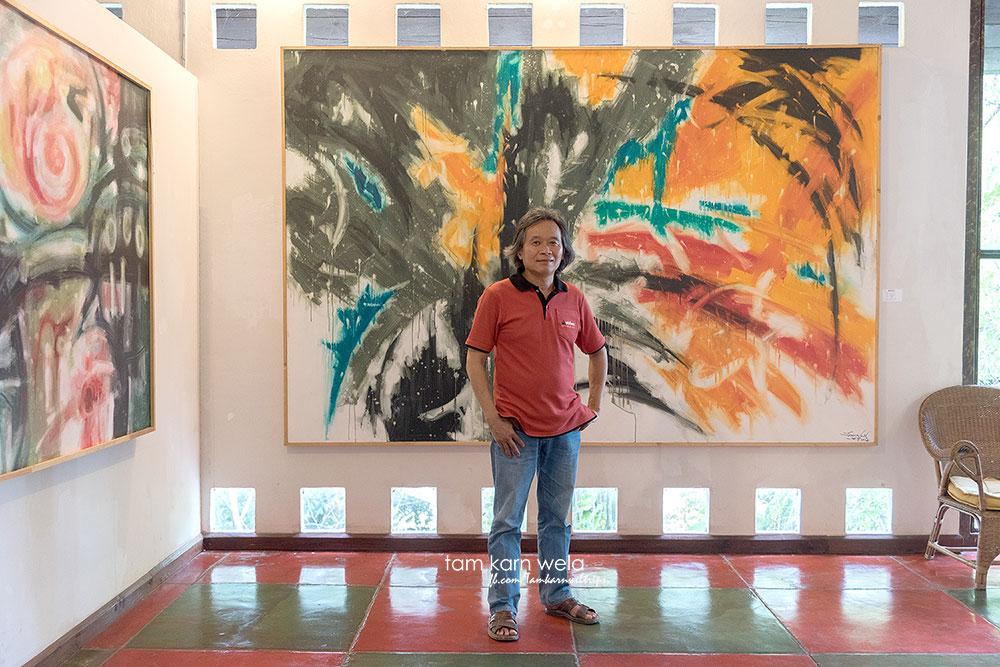
2 days in Nan have been wonderful and this very first time here has been nothing but impressive. I believe that all of you have heard a lot about this charming little town but still have not had enough encouragement to come here. The main reason would be the mean to get here which was not that easy in the past. However, it is very easy and convenient to get to Nan nowadays and the flight tickets are not too expensive. So I guess you might change your view about Nan. In addition, there will be one more airline flying to Nan from Bangkok as well from what I have heard. This has guaranteed well that Nan is not just an ordinary town.
We do not need to wait for the high season in winter to come here because you need to keep in mind that Nan is a small town and if it is crowded, it would not be that nice. Moreover, you might not be able to experience much about the traditional local way of living in high season. And I would like to confirm that Nan is....a must to visit town..
Tamkarnwela has got to find the time to come back here because there are some places that have been missed this time such as Bo Klua (Salt Wells), Doi Samer Dao Mountain, and Pa Nim Dessert Place.
Thanks to The Tourism Authority of Thailand campaign "Go North Thailand" that has organized such a great activity like this.
Thanks to Tamkarnwela who have always traveled together.
Thanks to Readme.me for giving a space for us to share great stories and useful information!!
Lastly,
Thanks to all of you for your kind support reading through this review and giving me some feedback through the comment.
I hope you find this travel review useful in one way or another and I would confirm that "Nan is a real charming small town".
Loves,
Tamkarnwela
http://www.student-weekly.com/040515/040515-happen...

Tamkarnwela
Tuesday, June 16, 2015 3:40 PM

